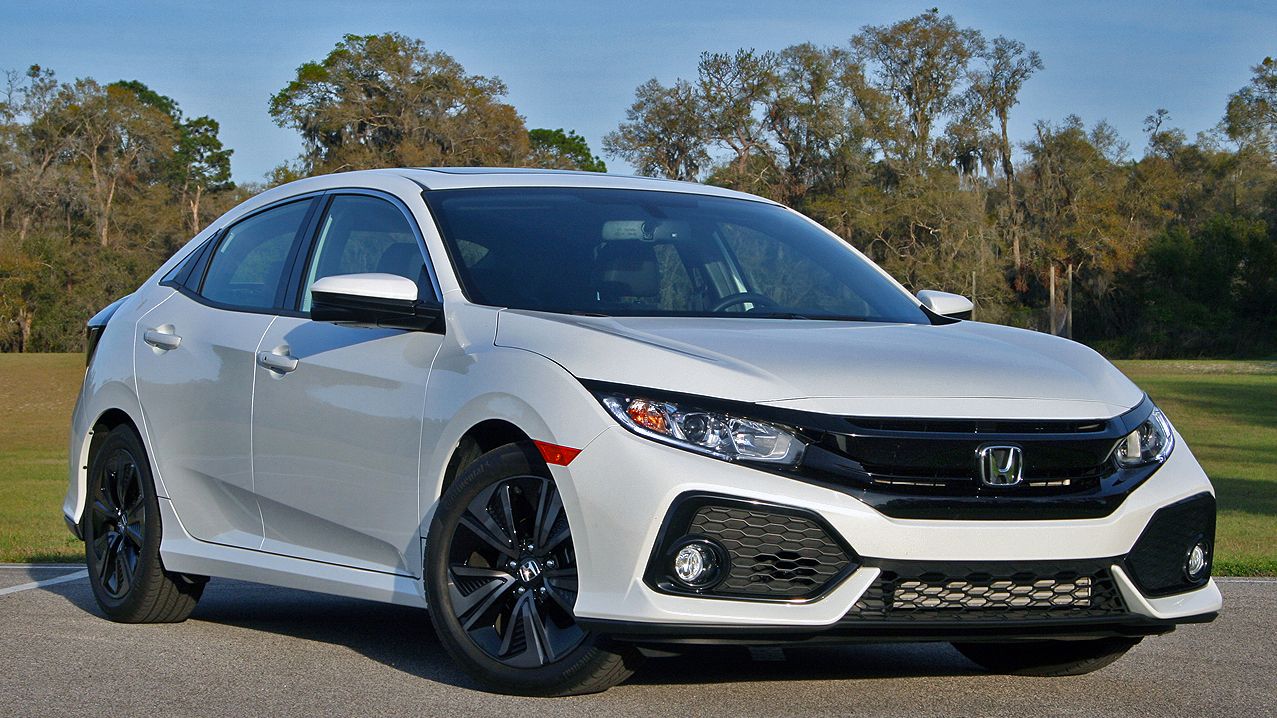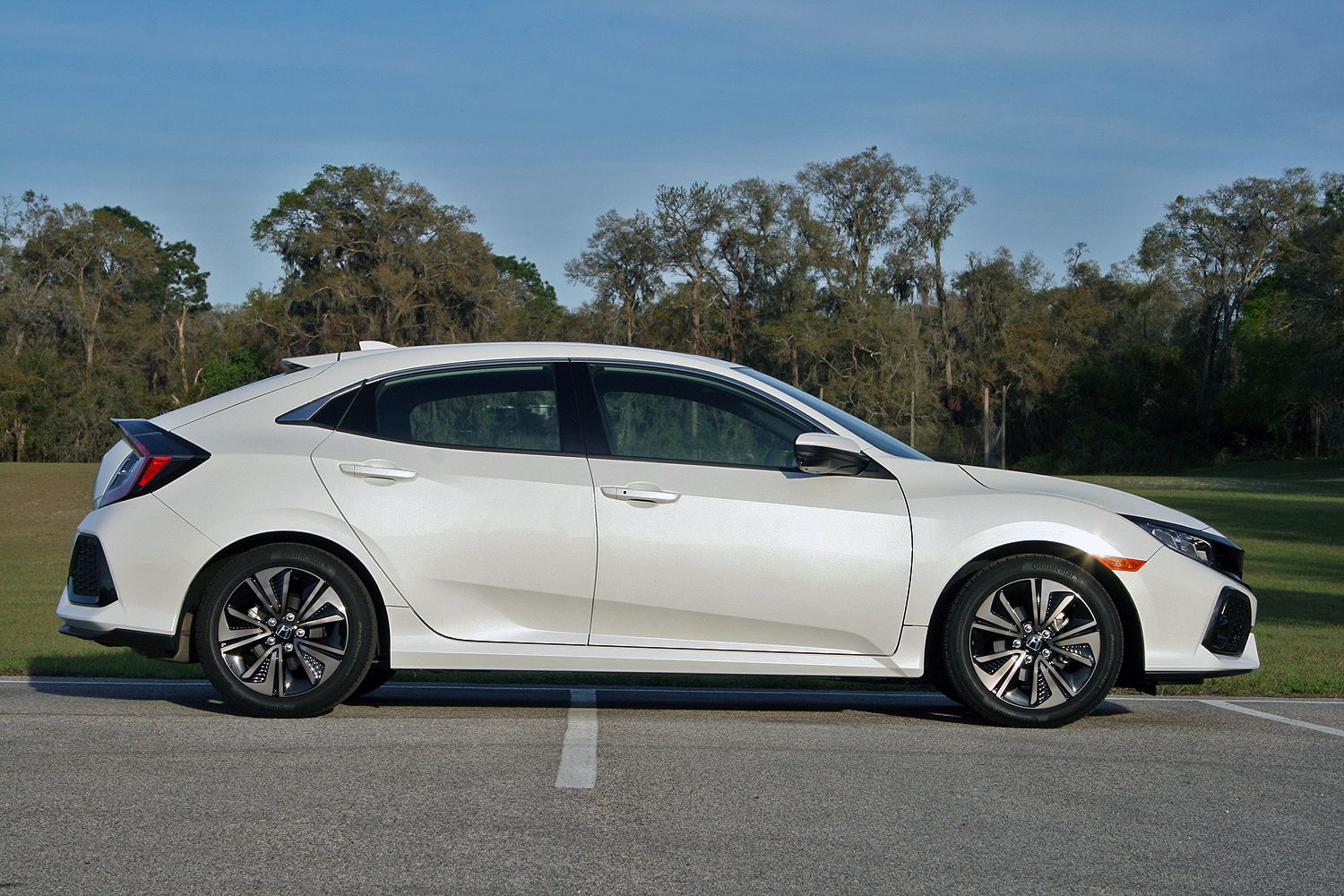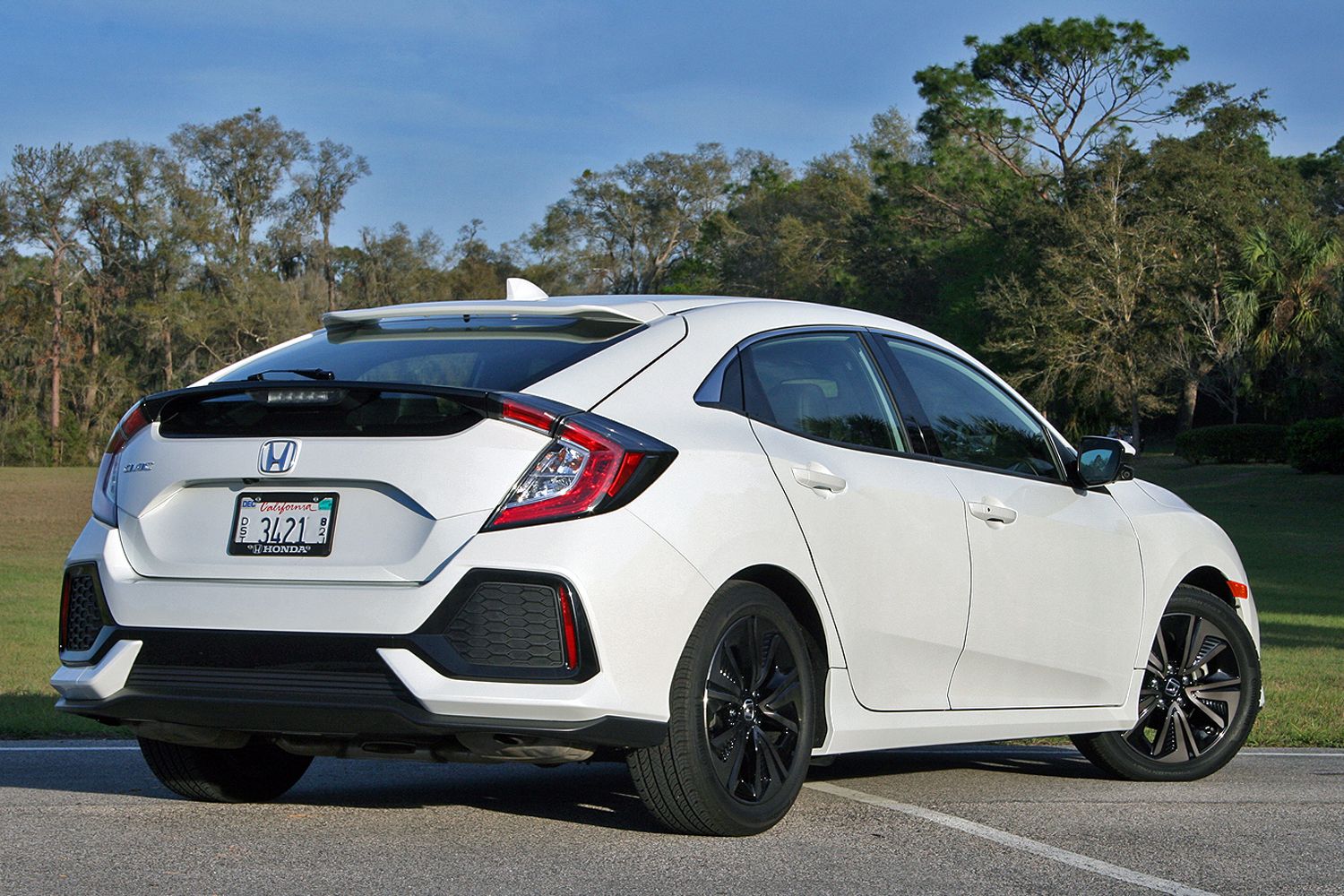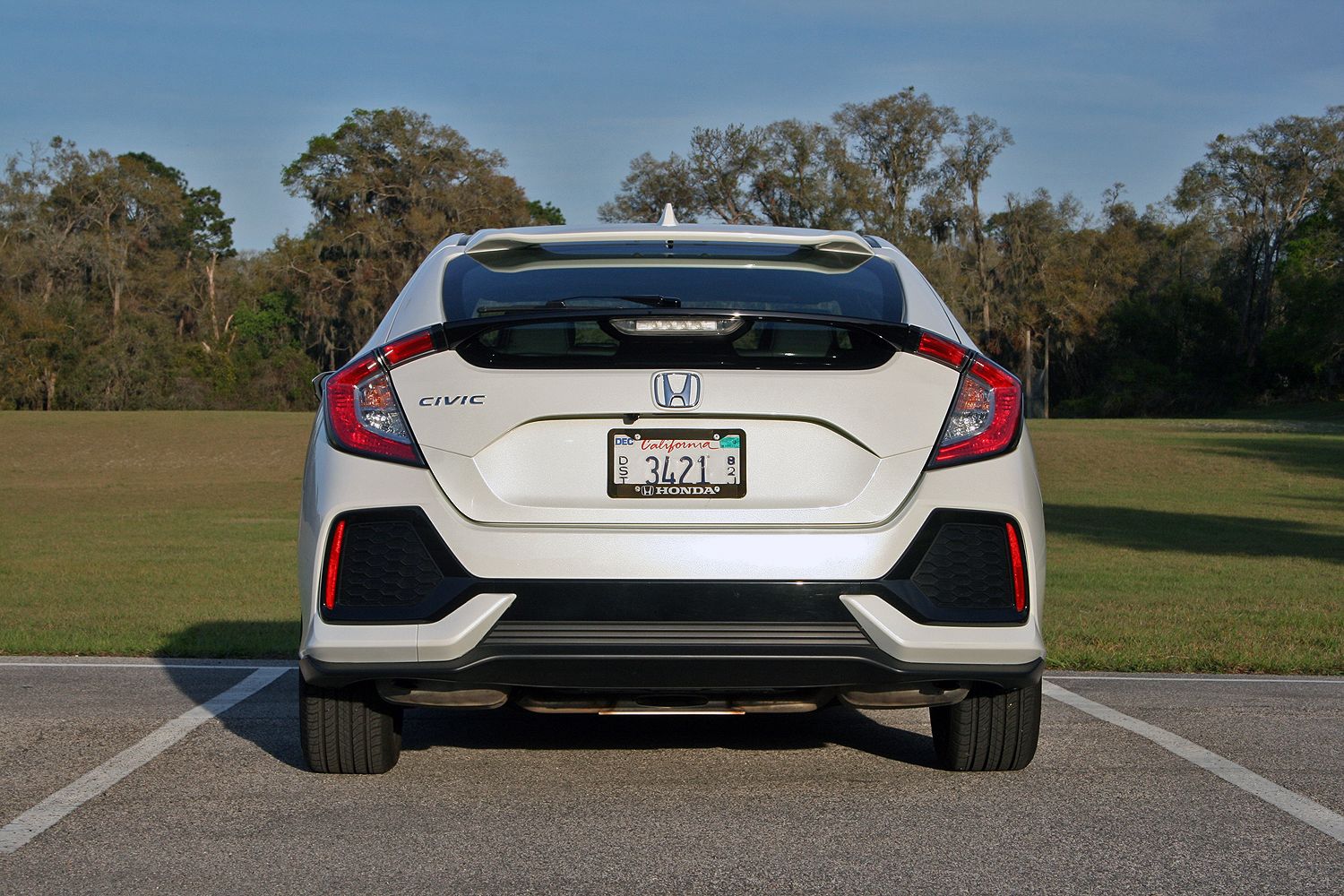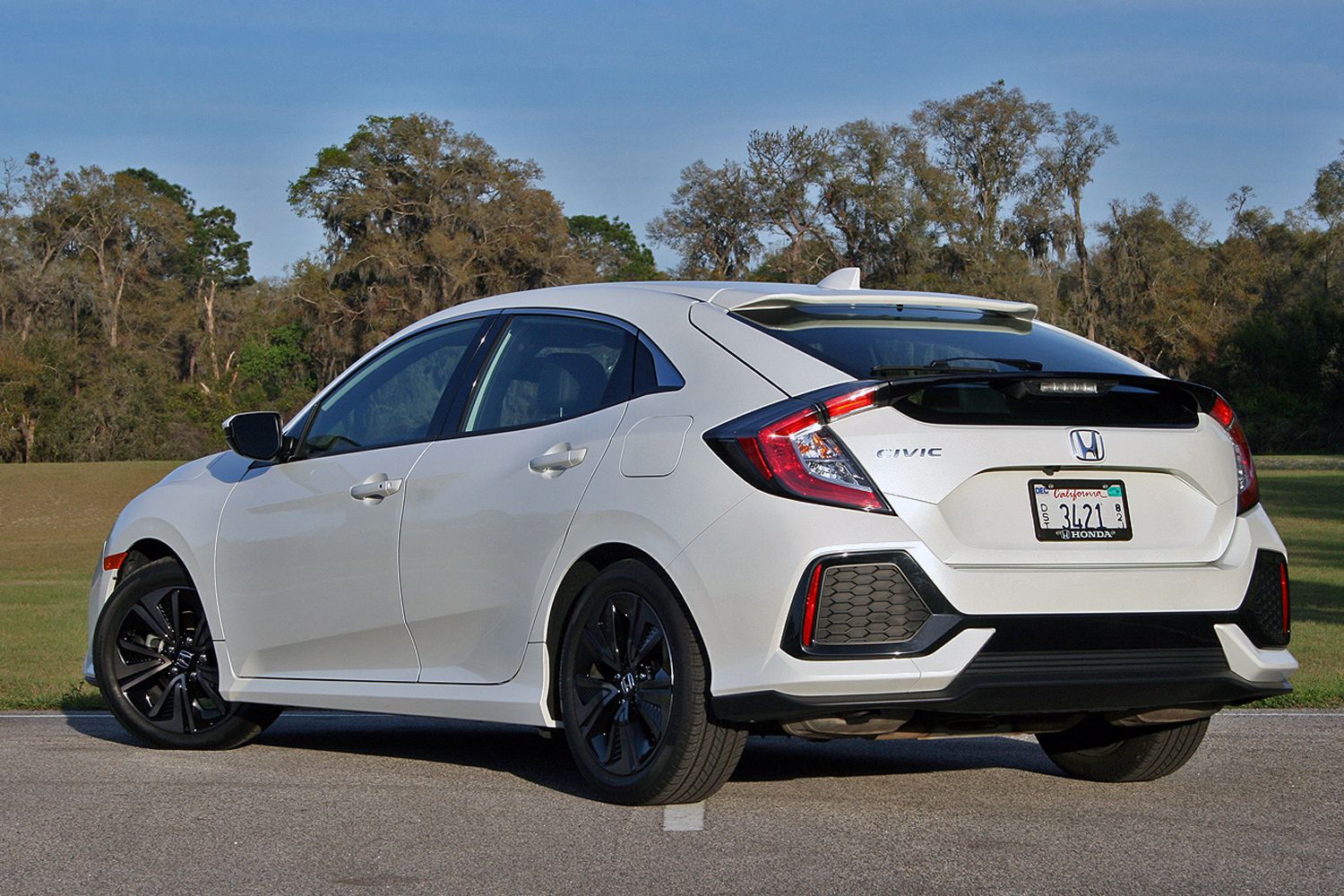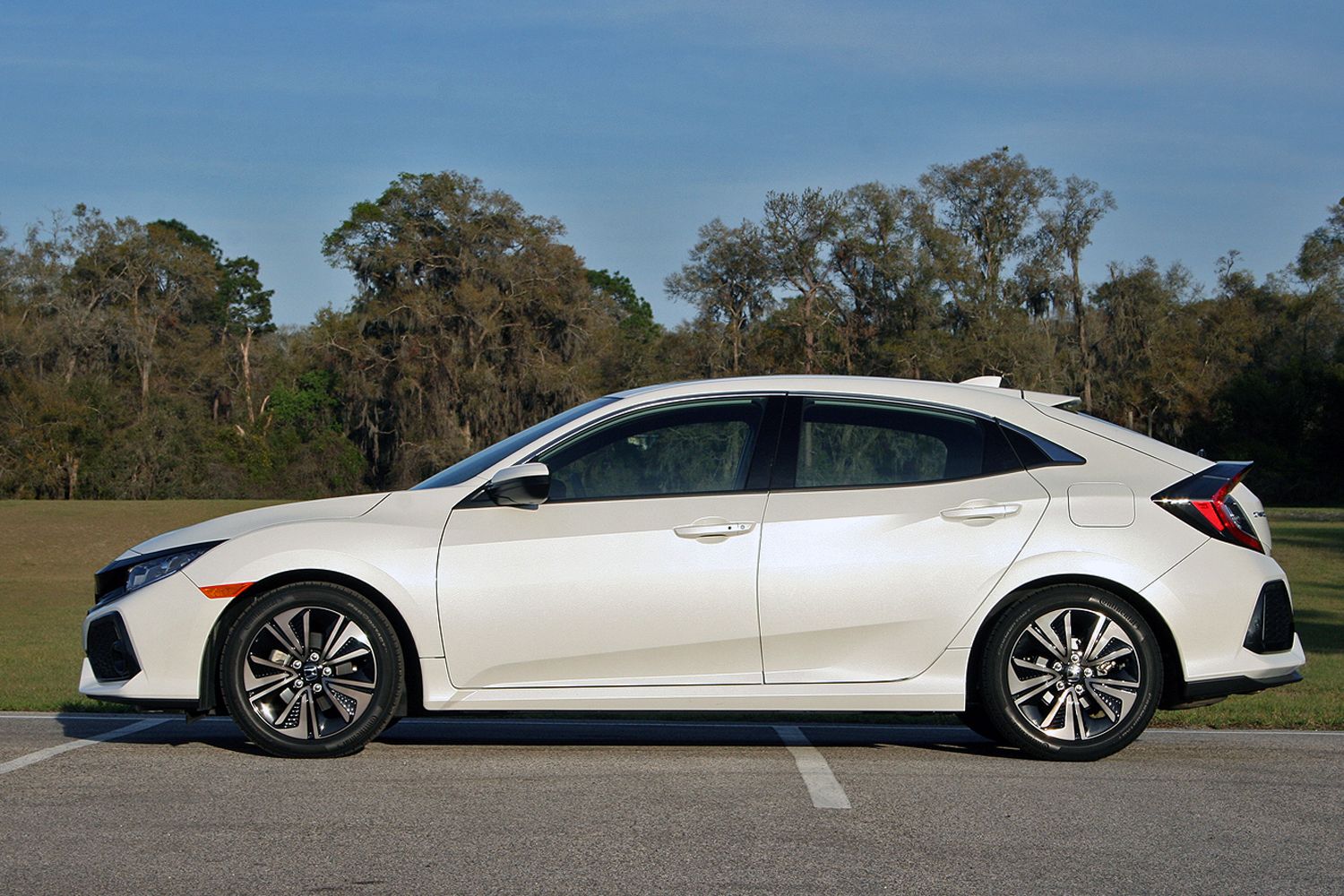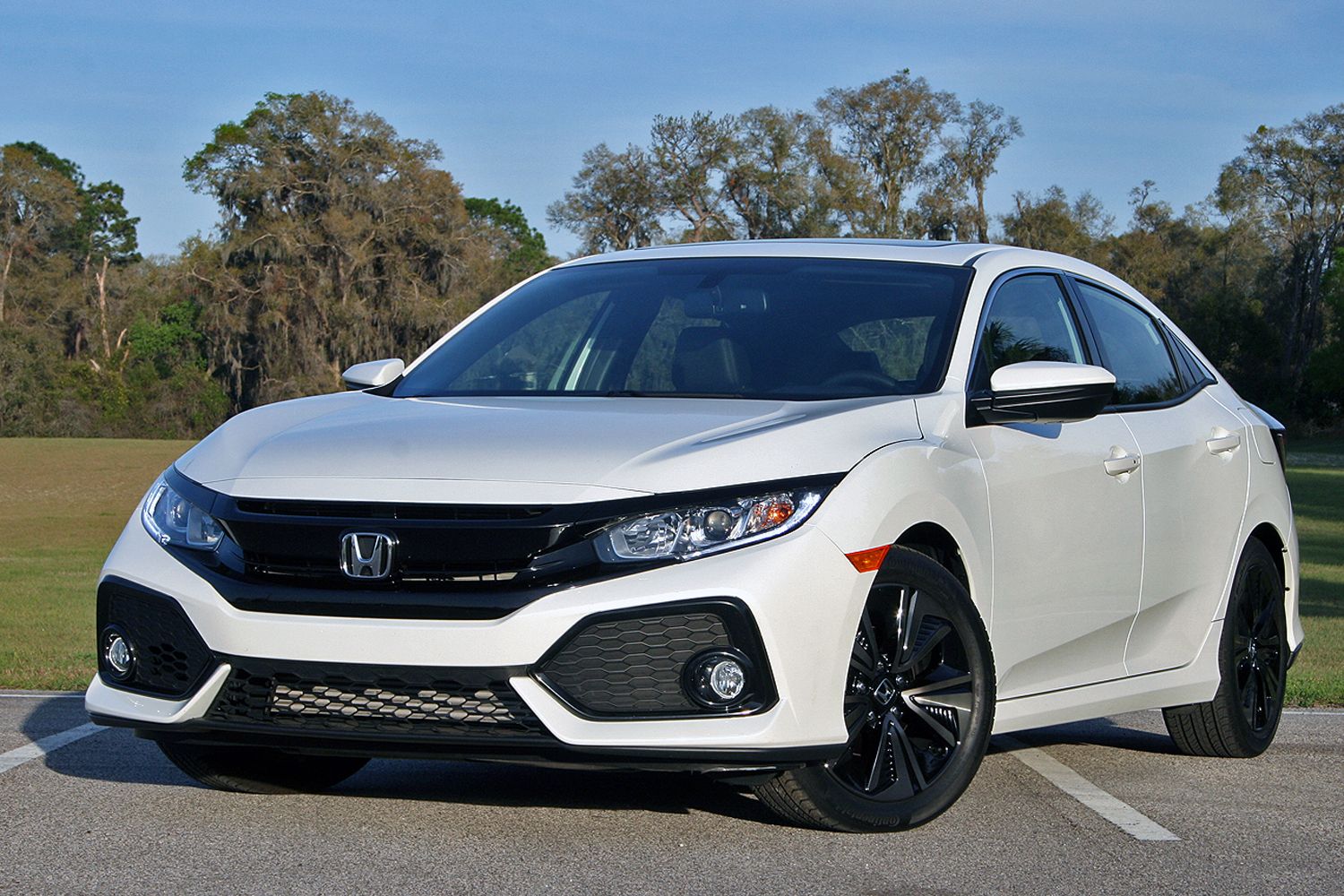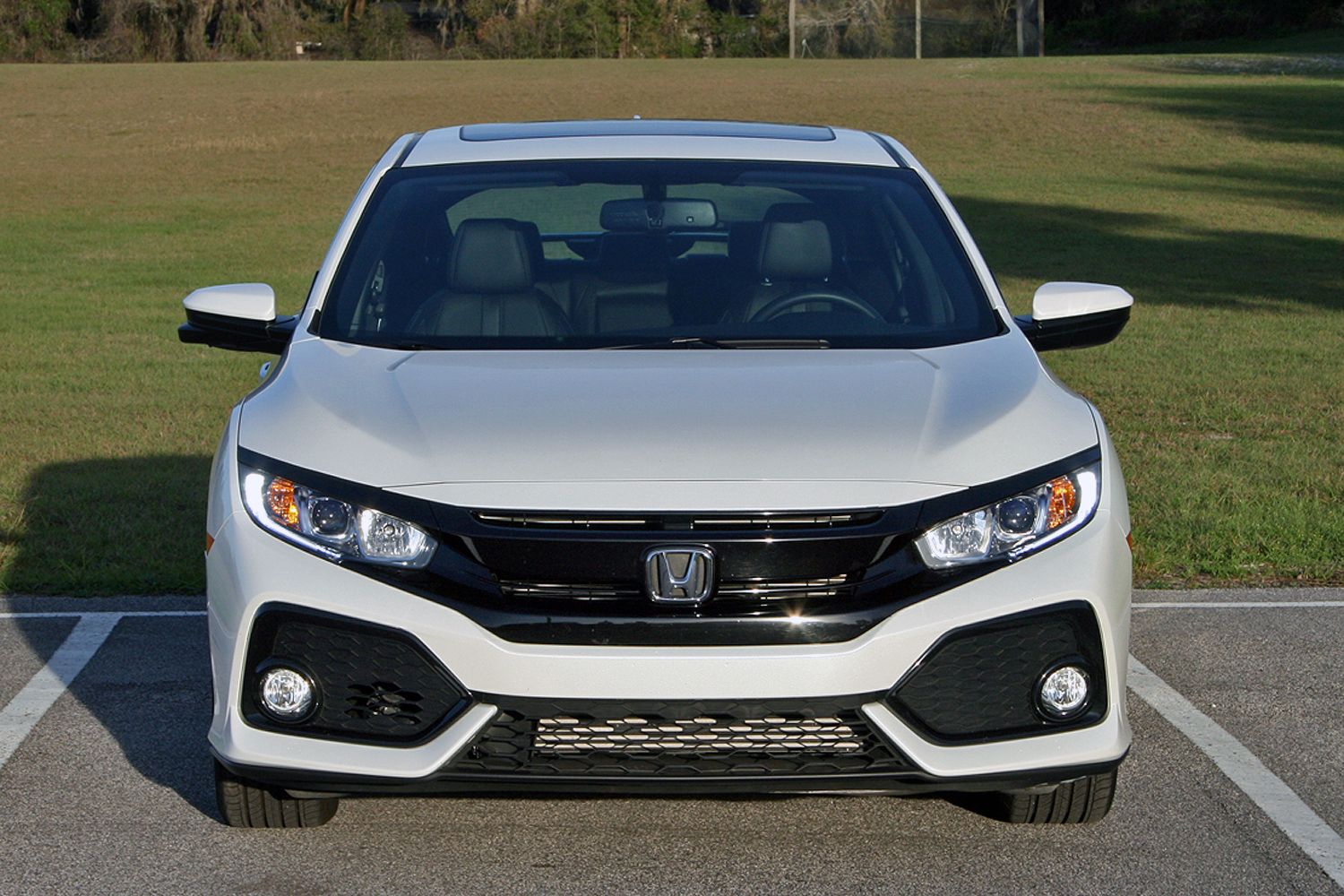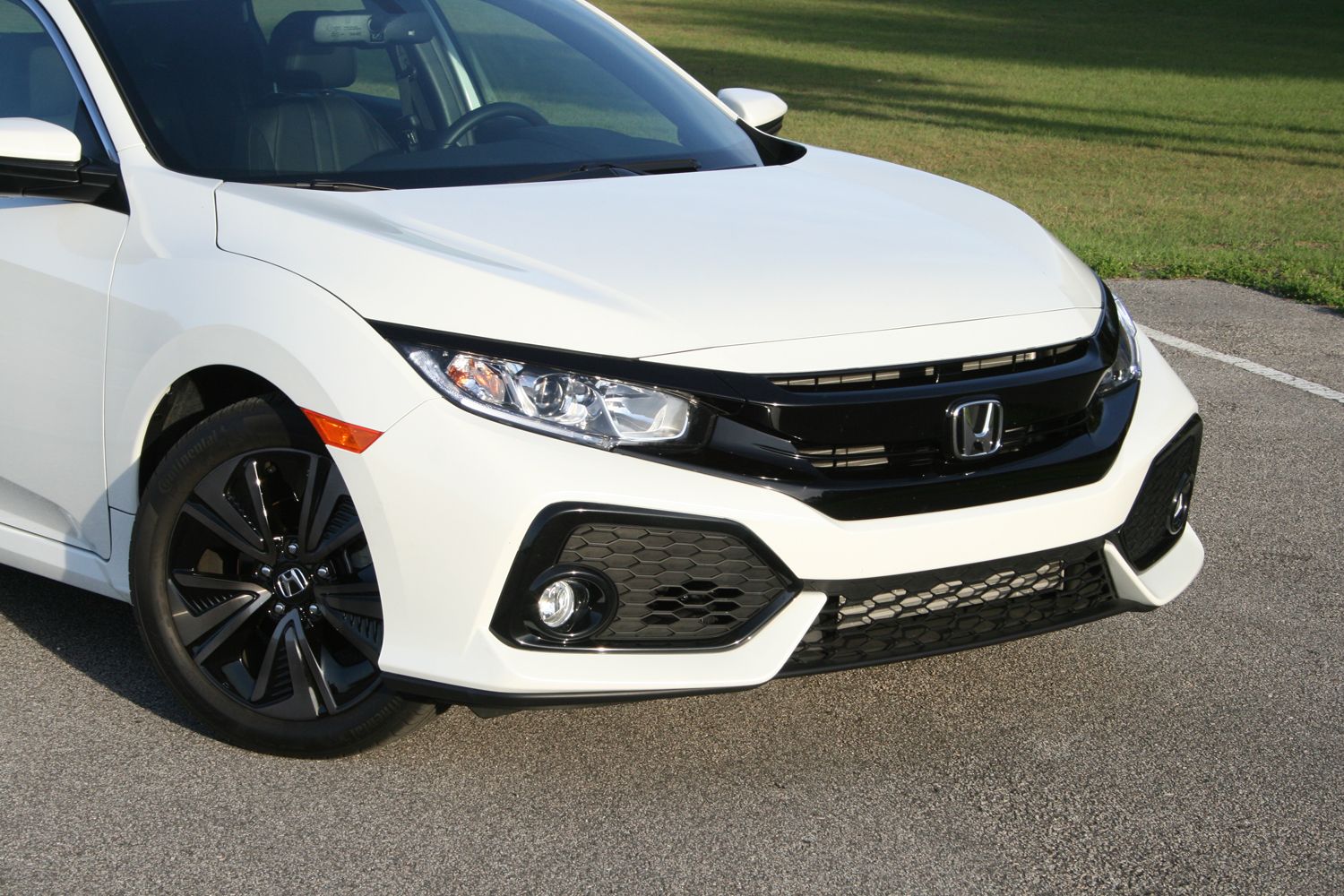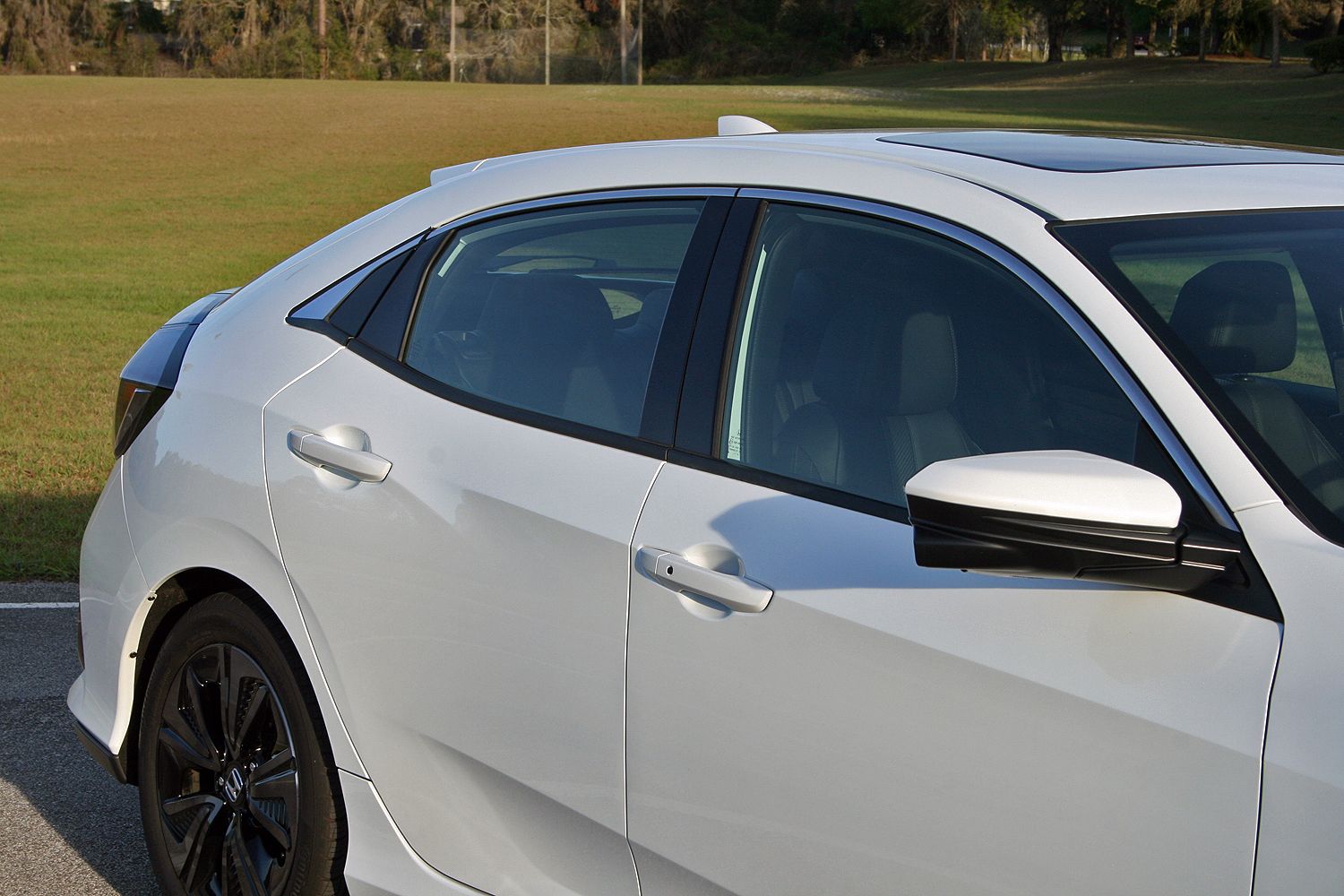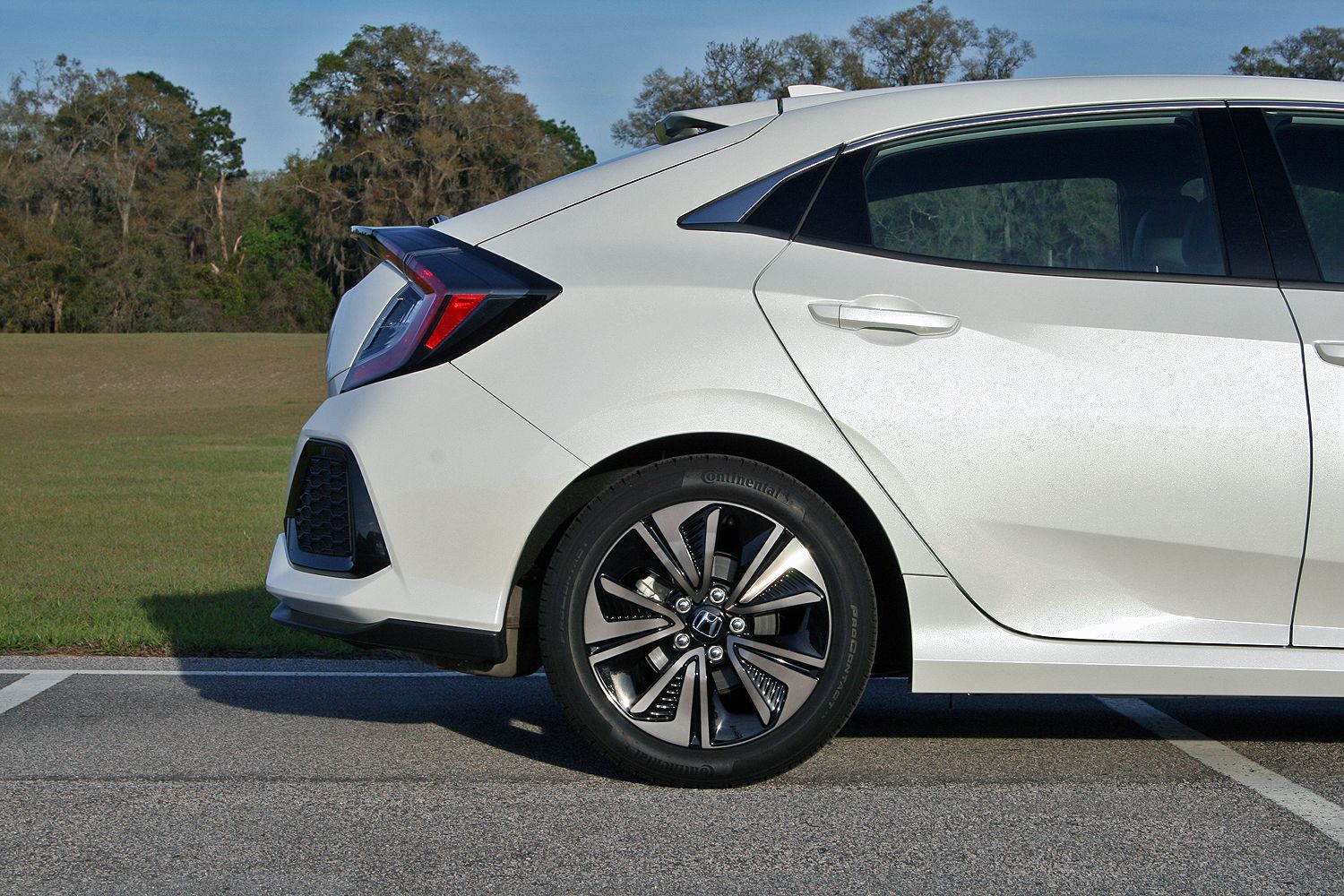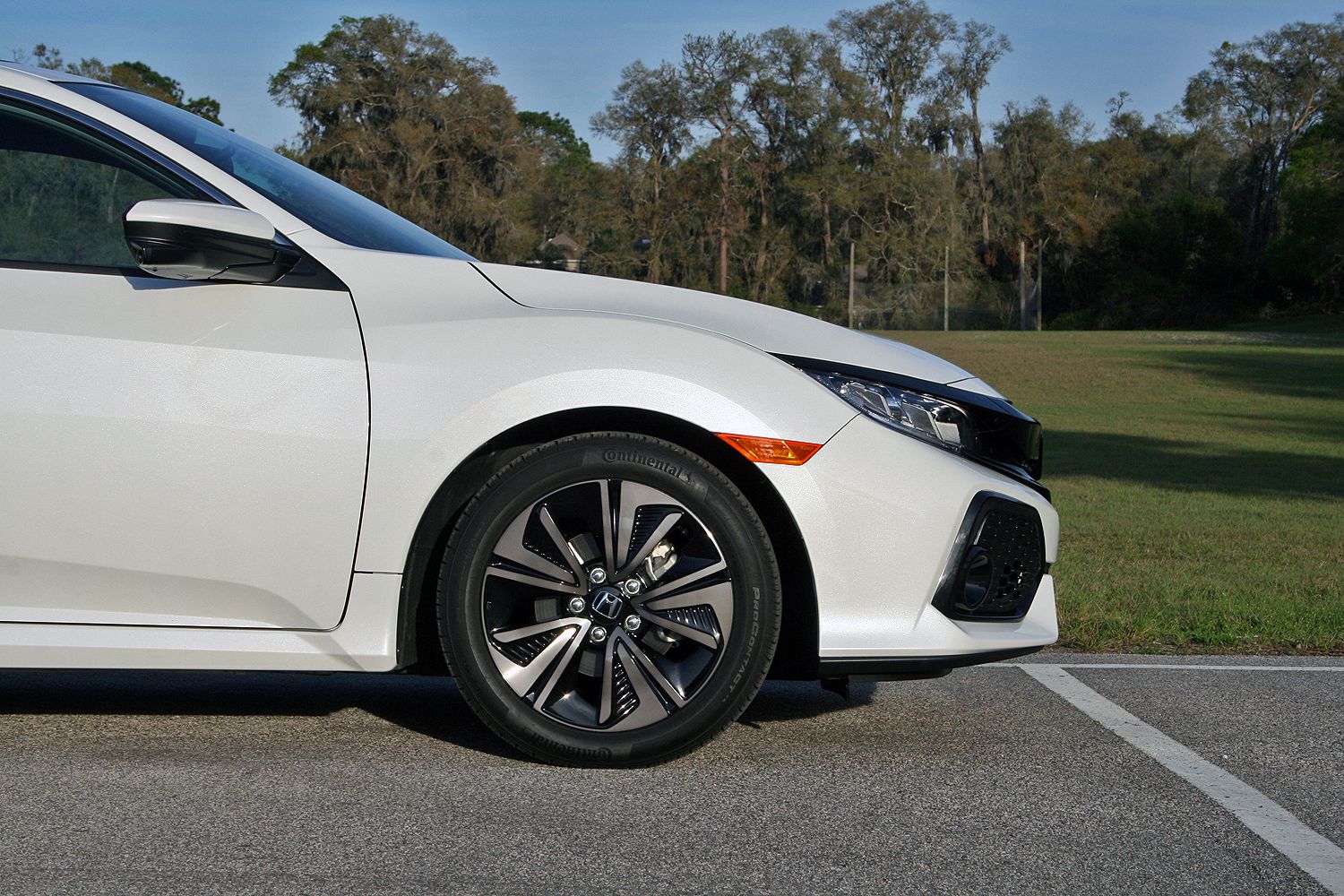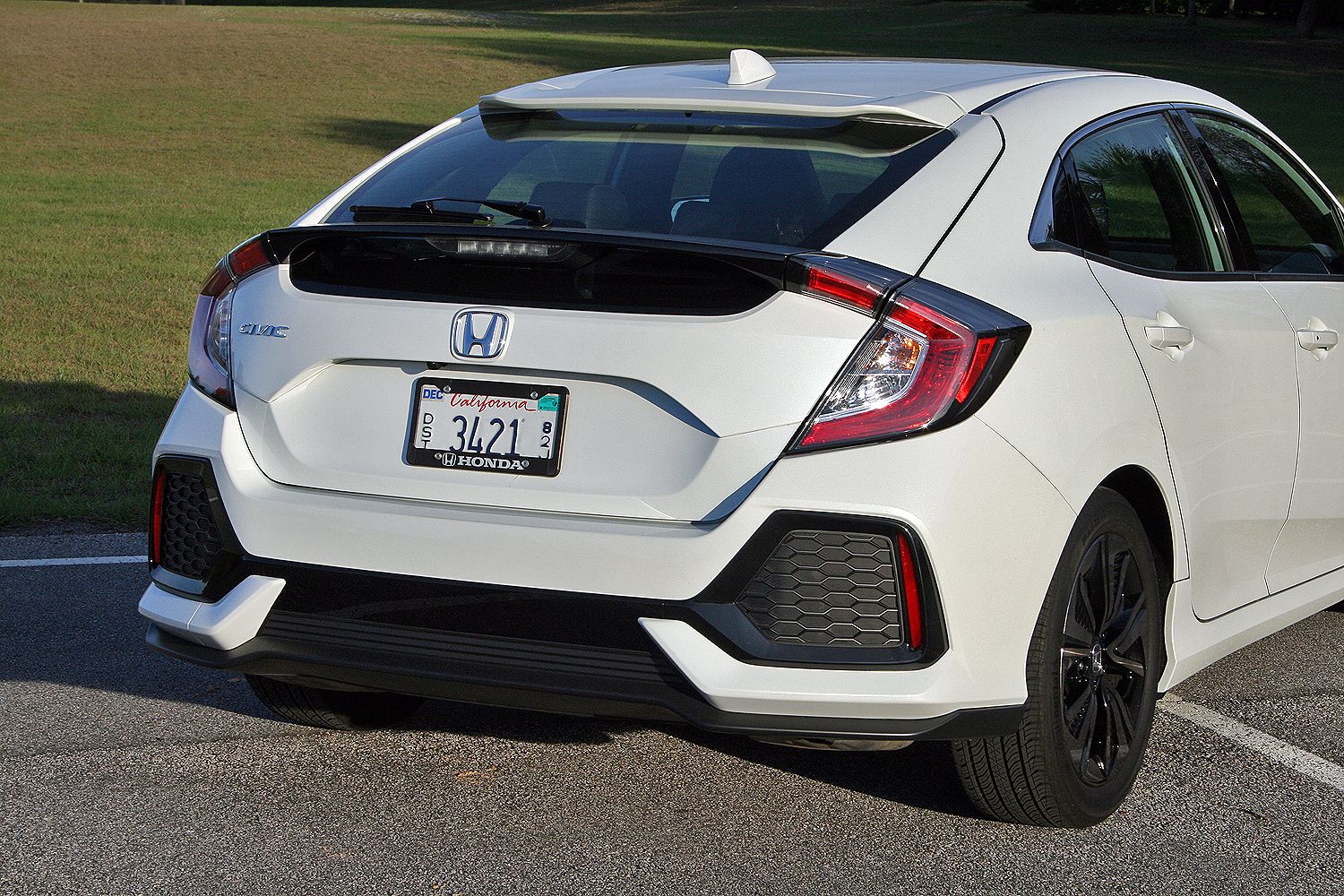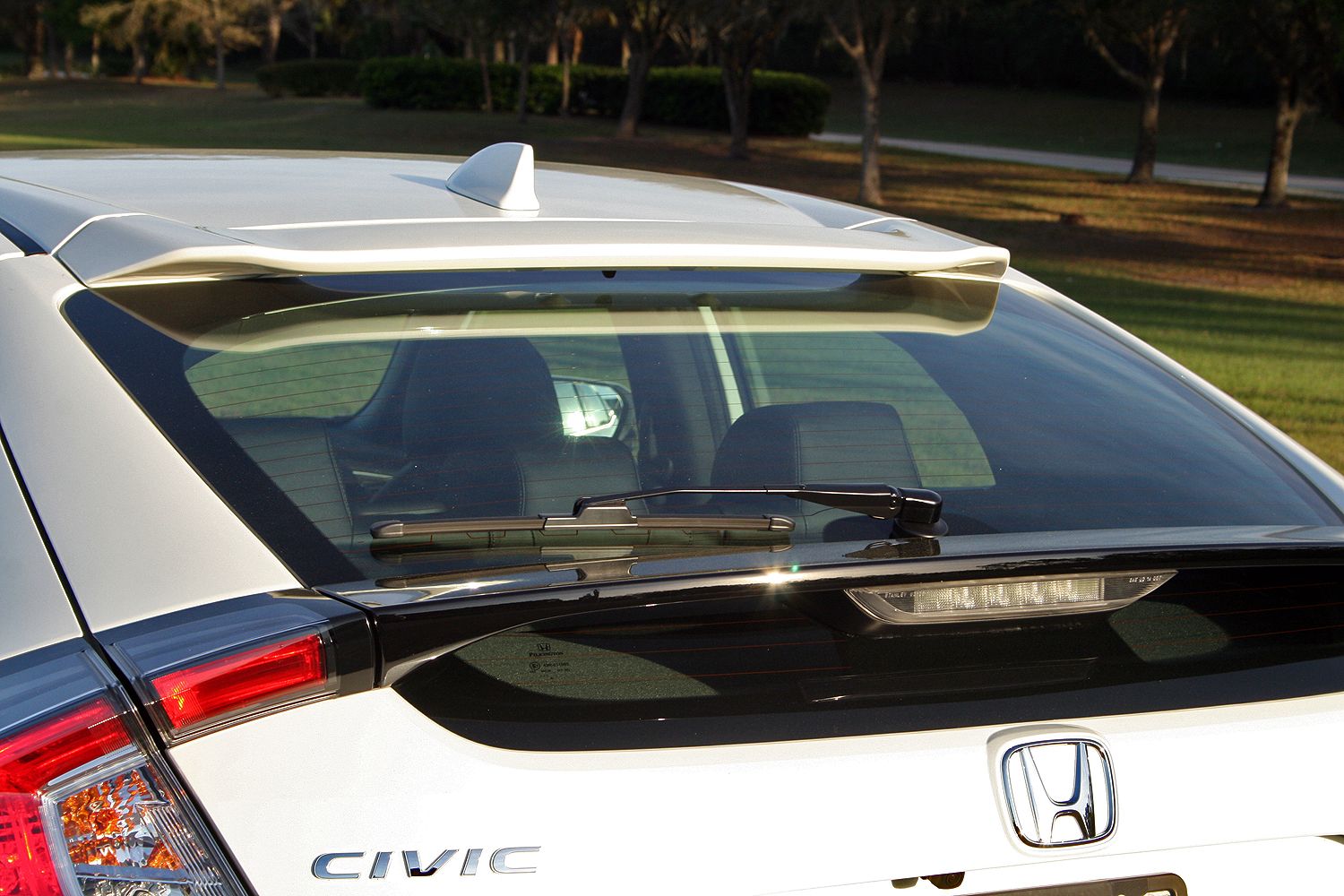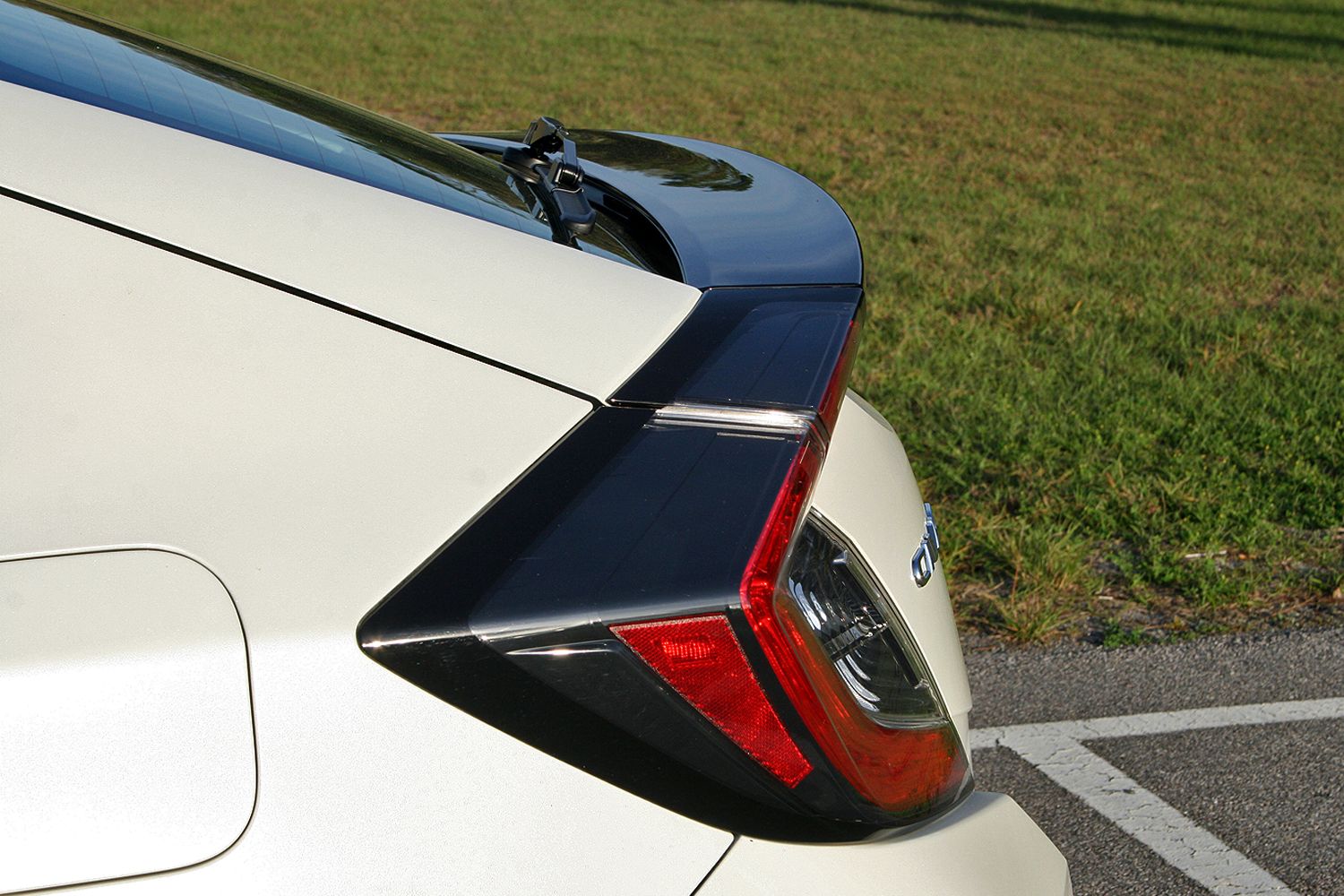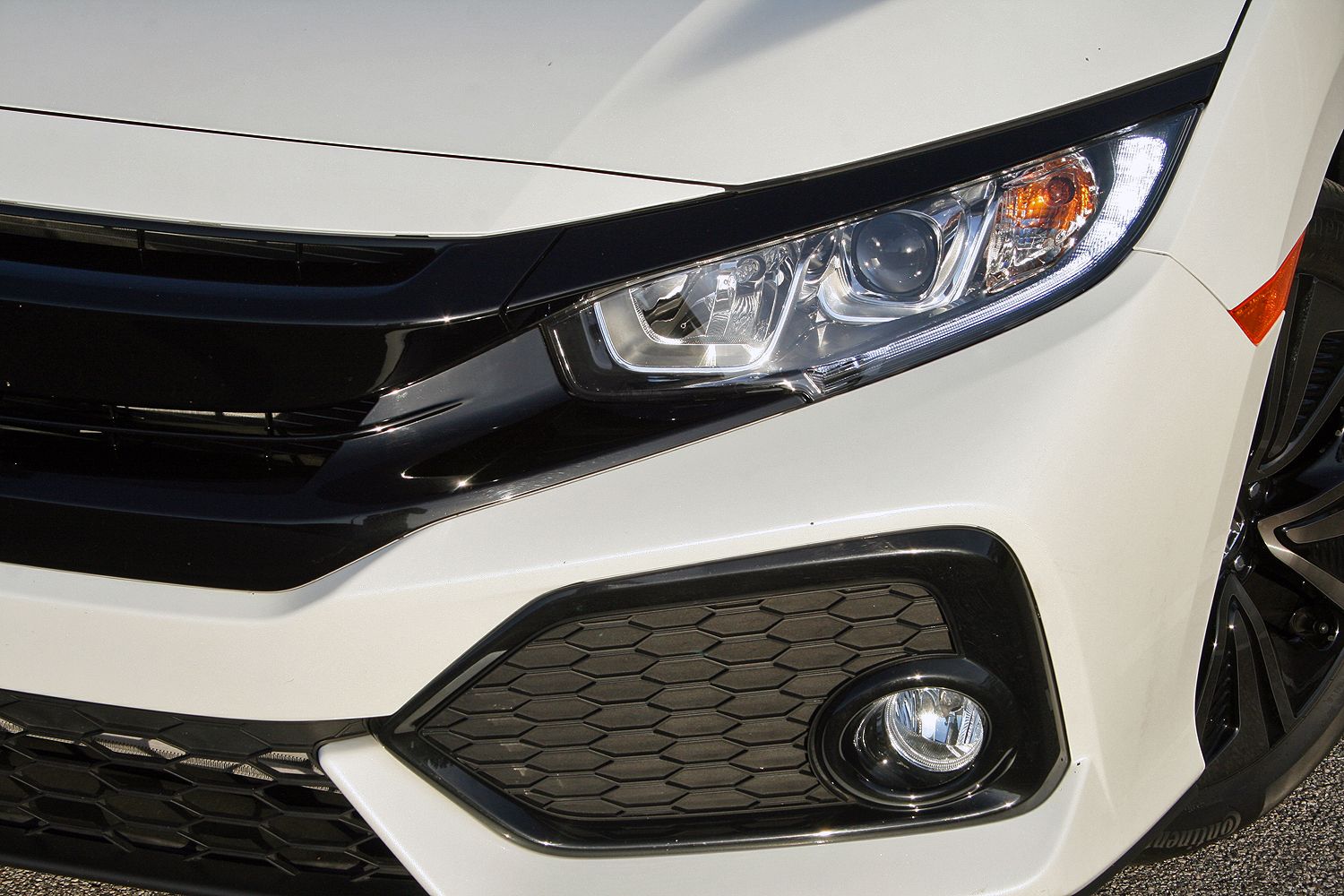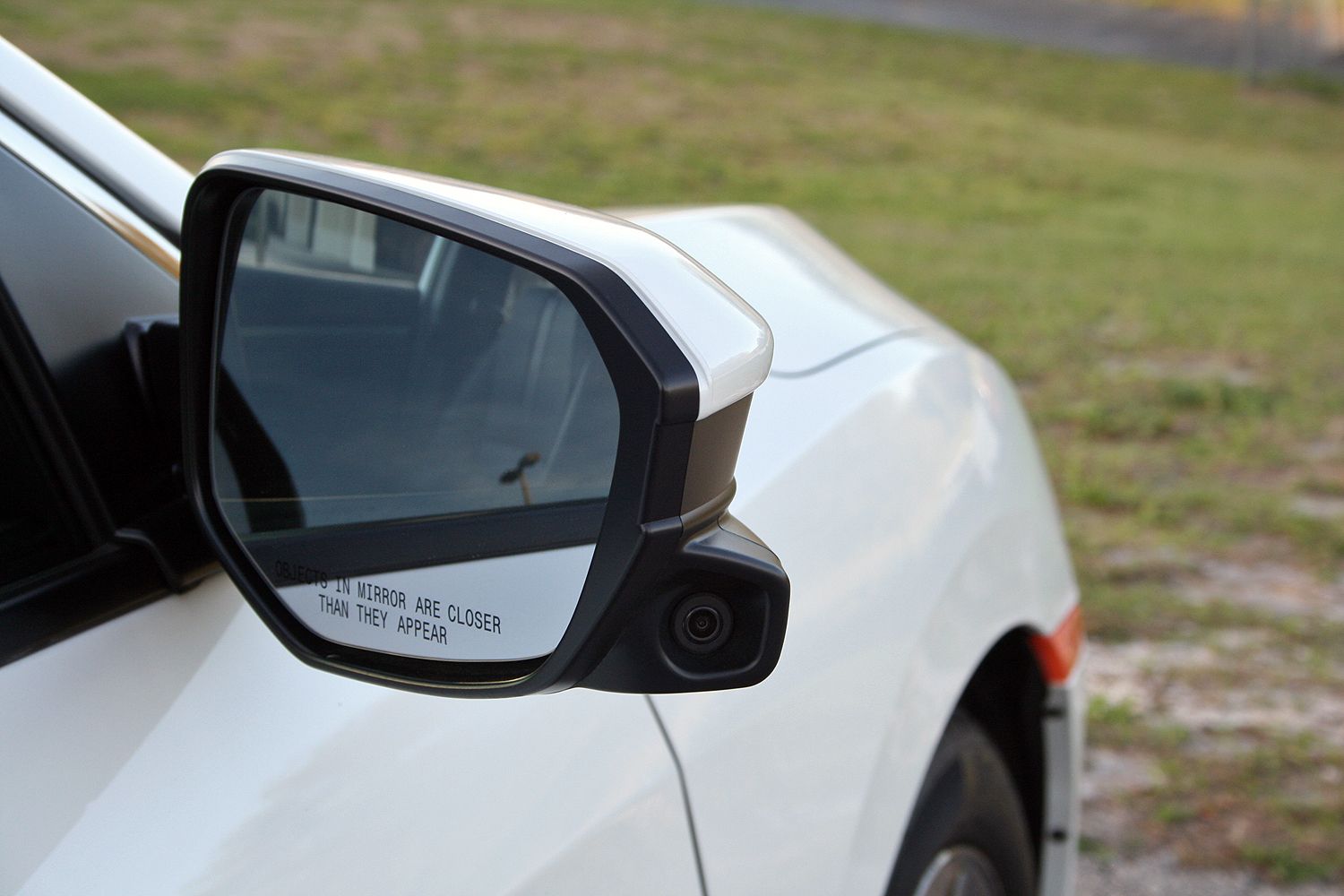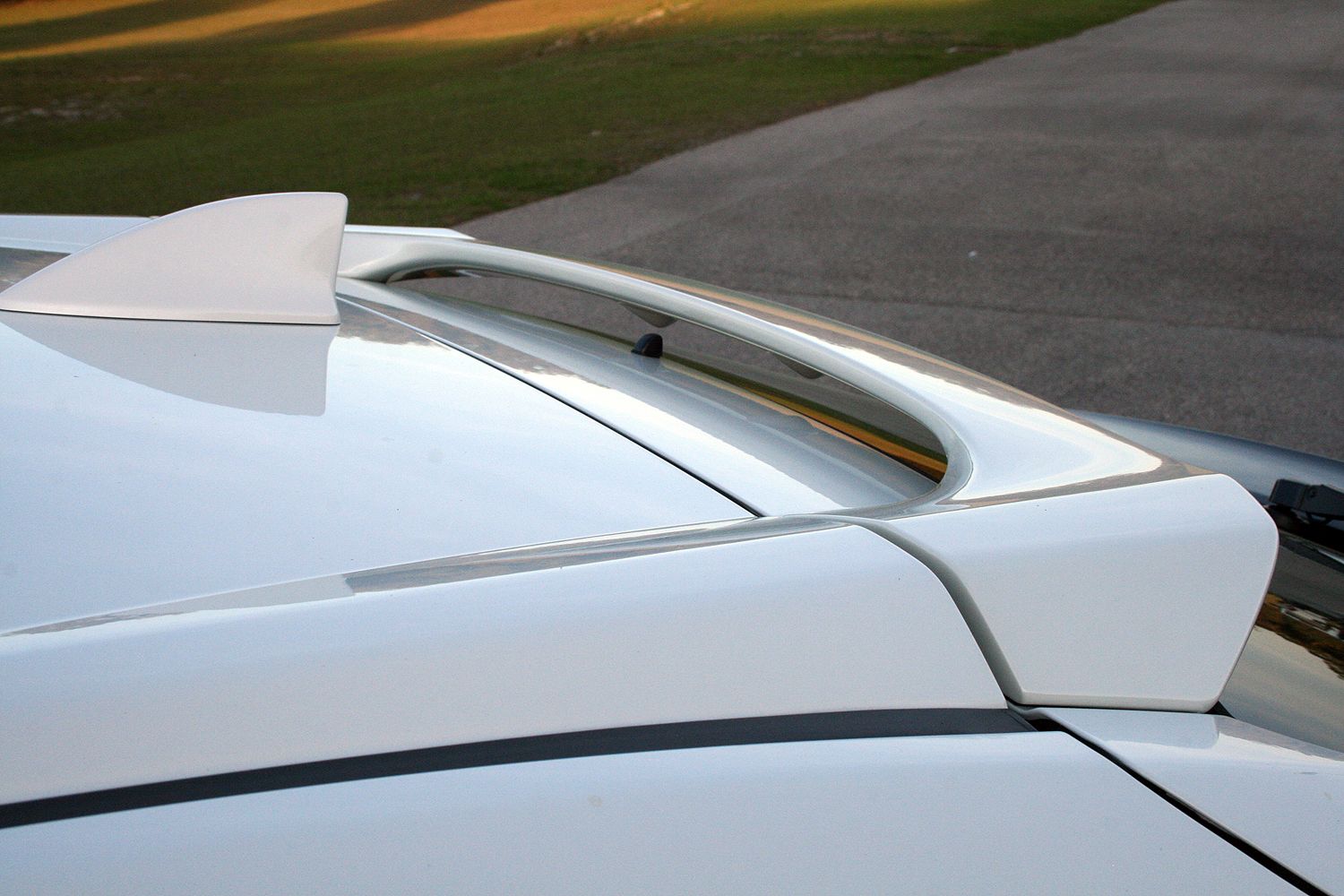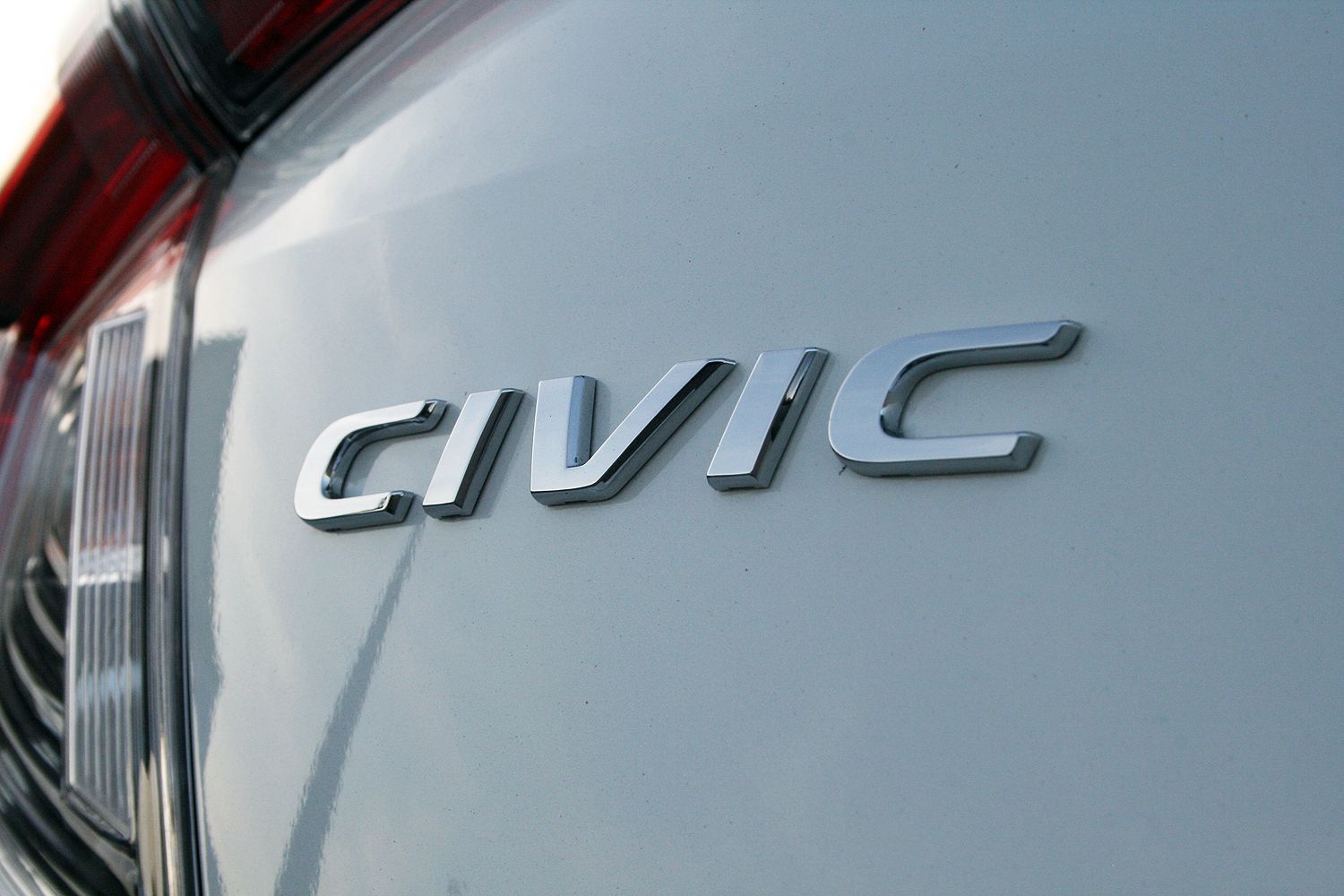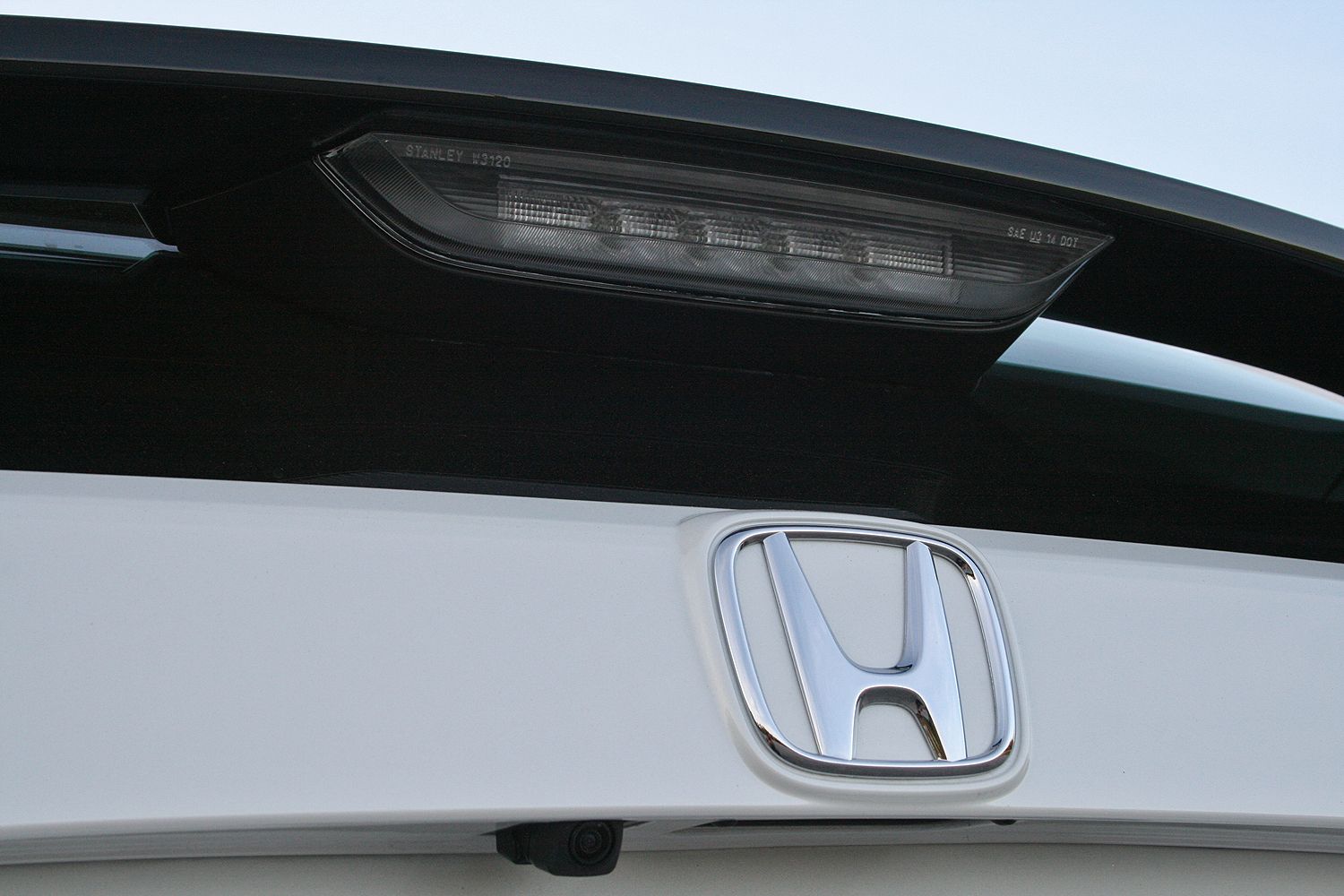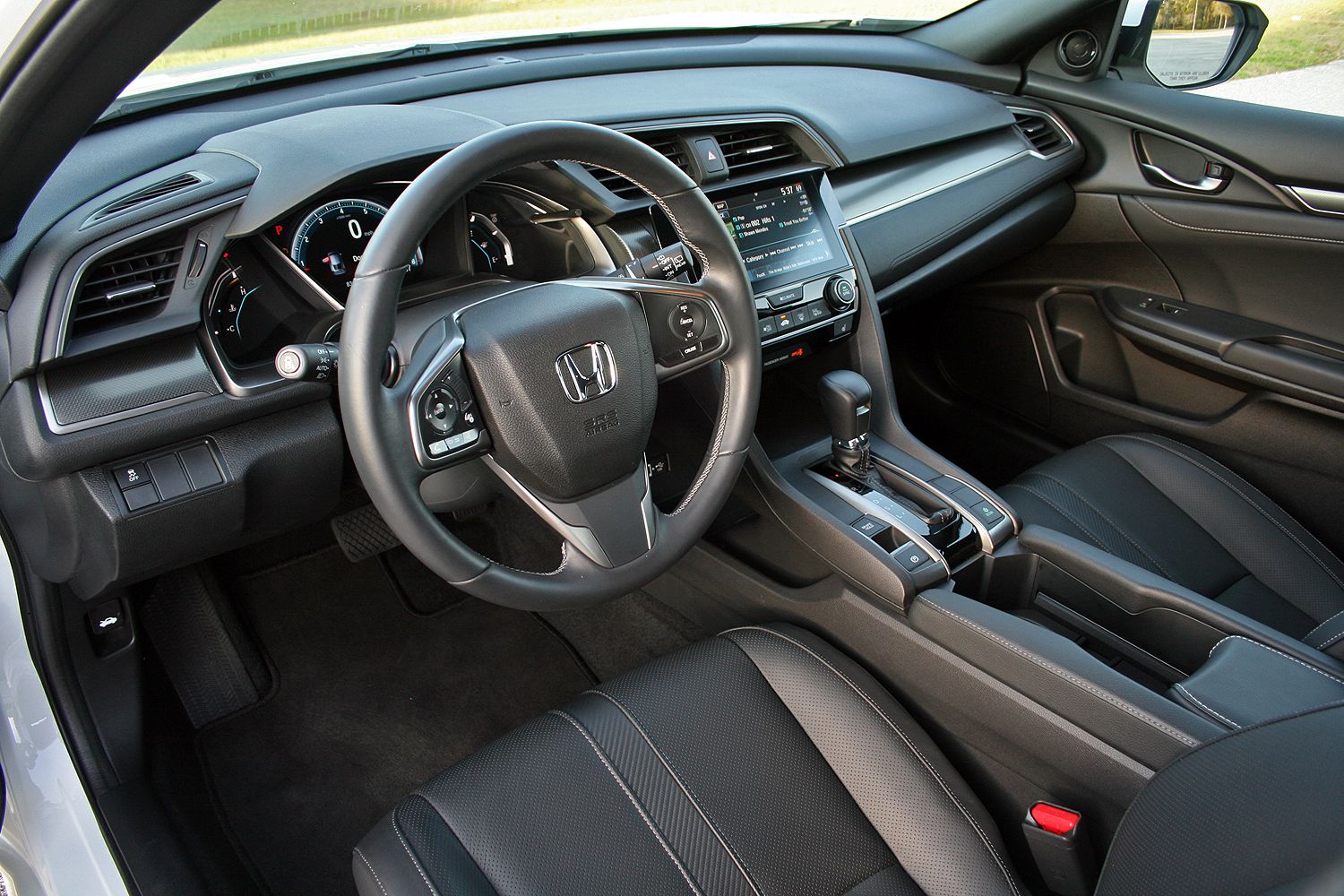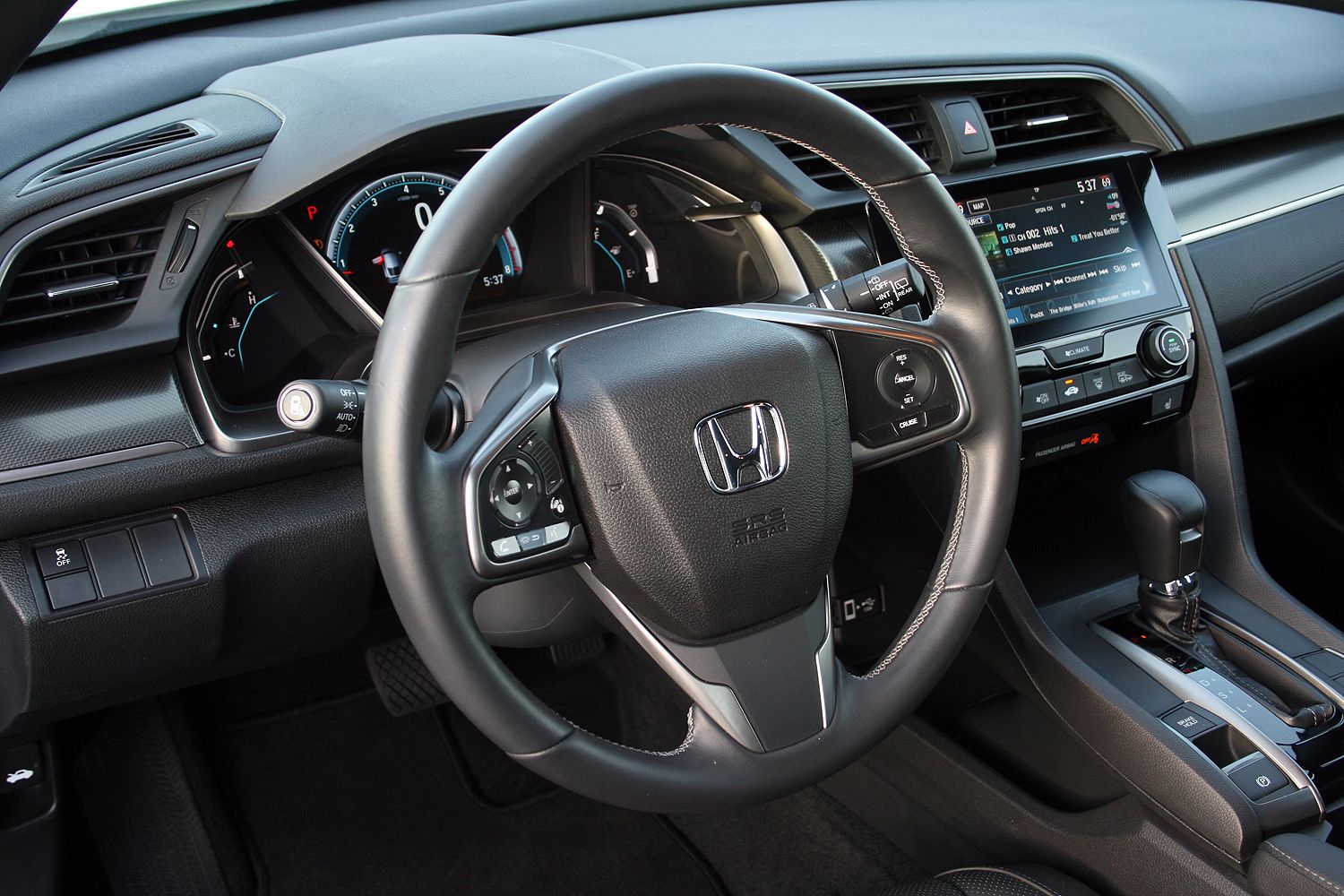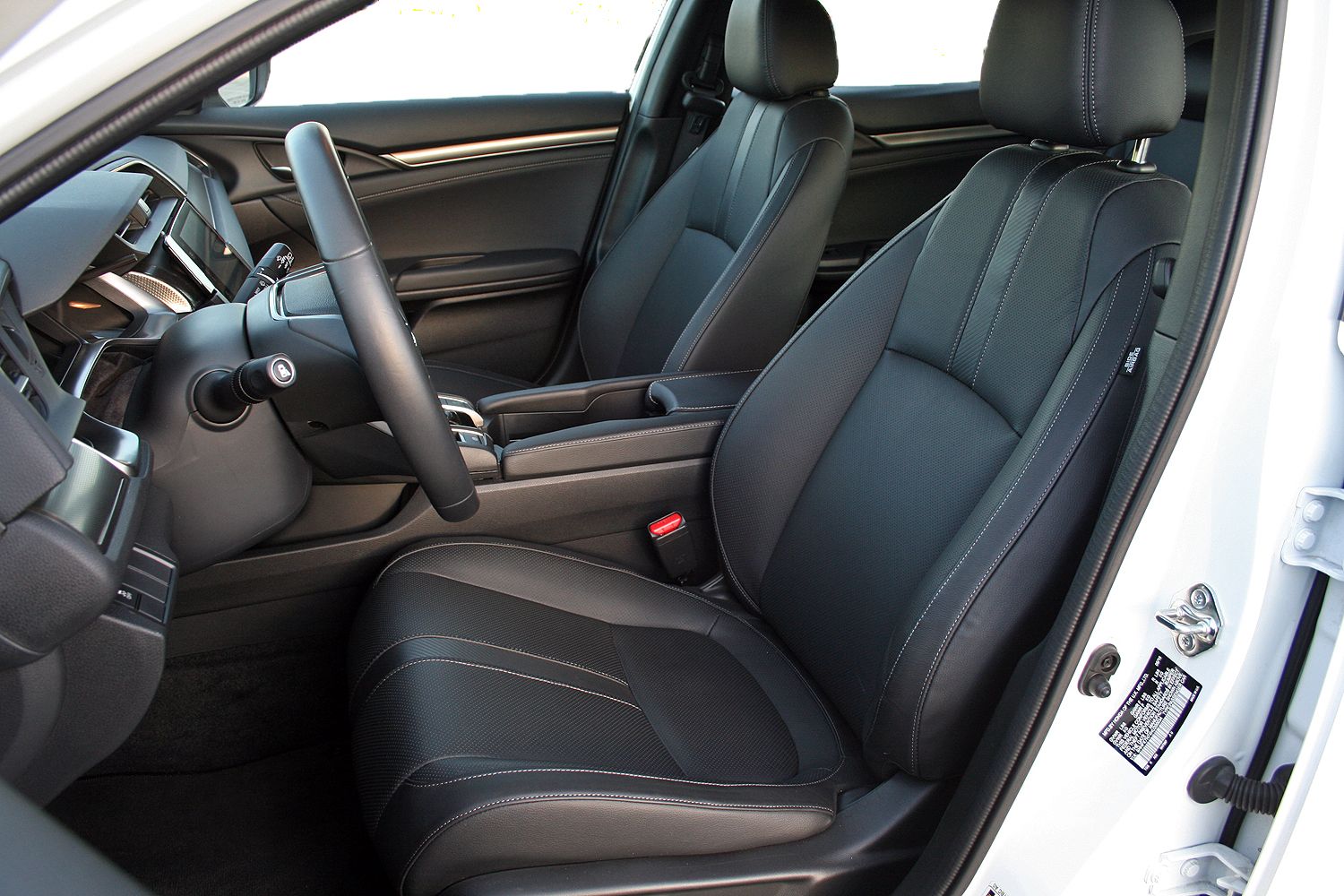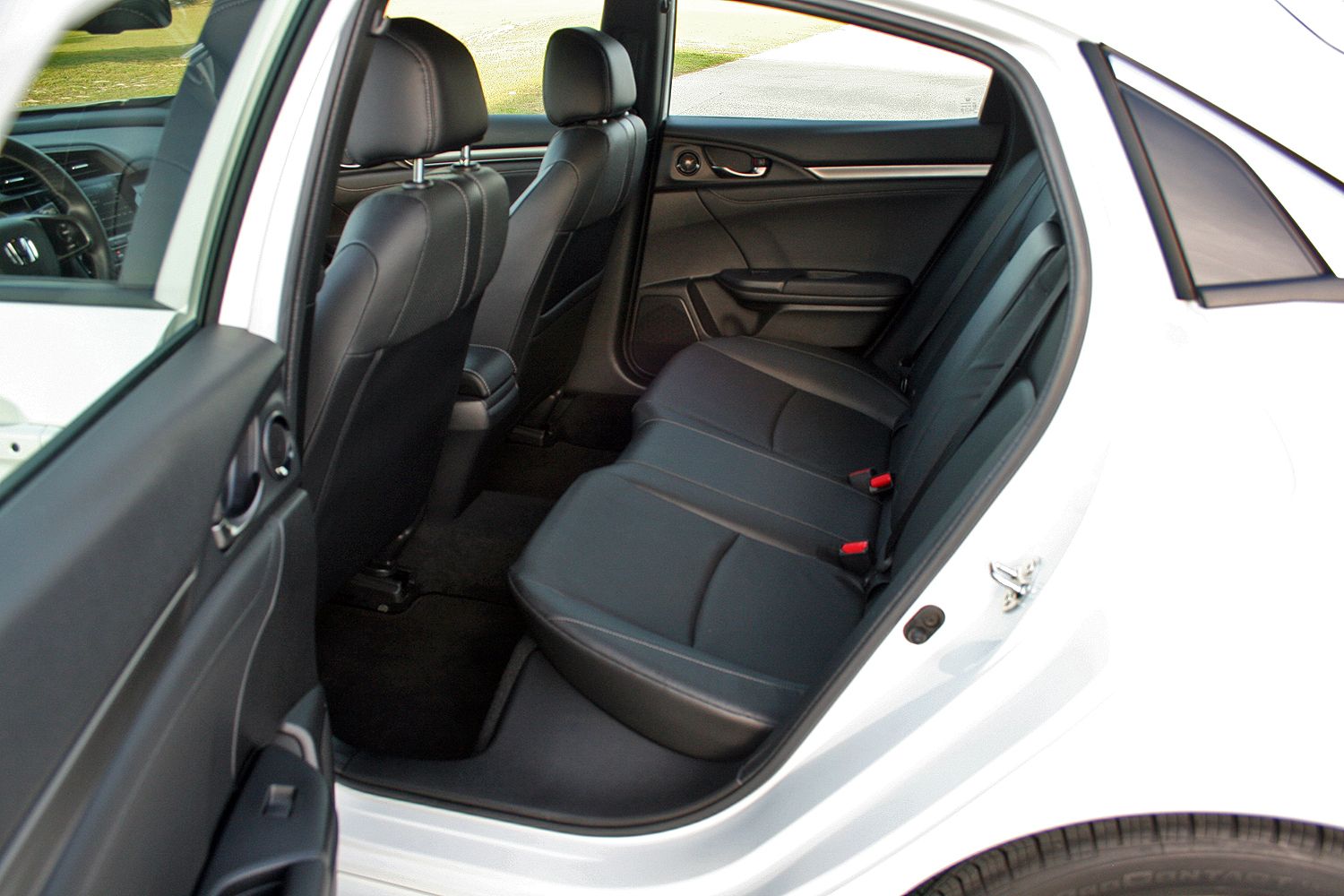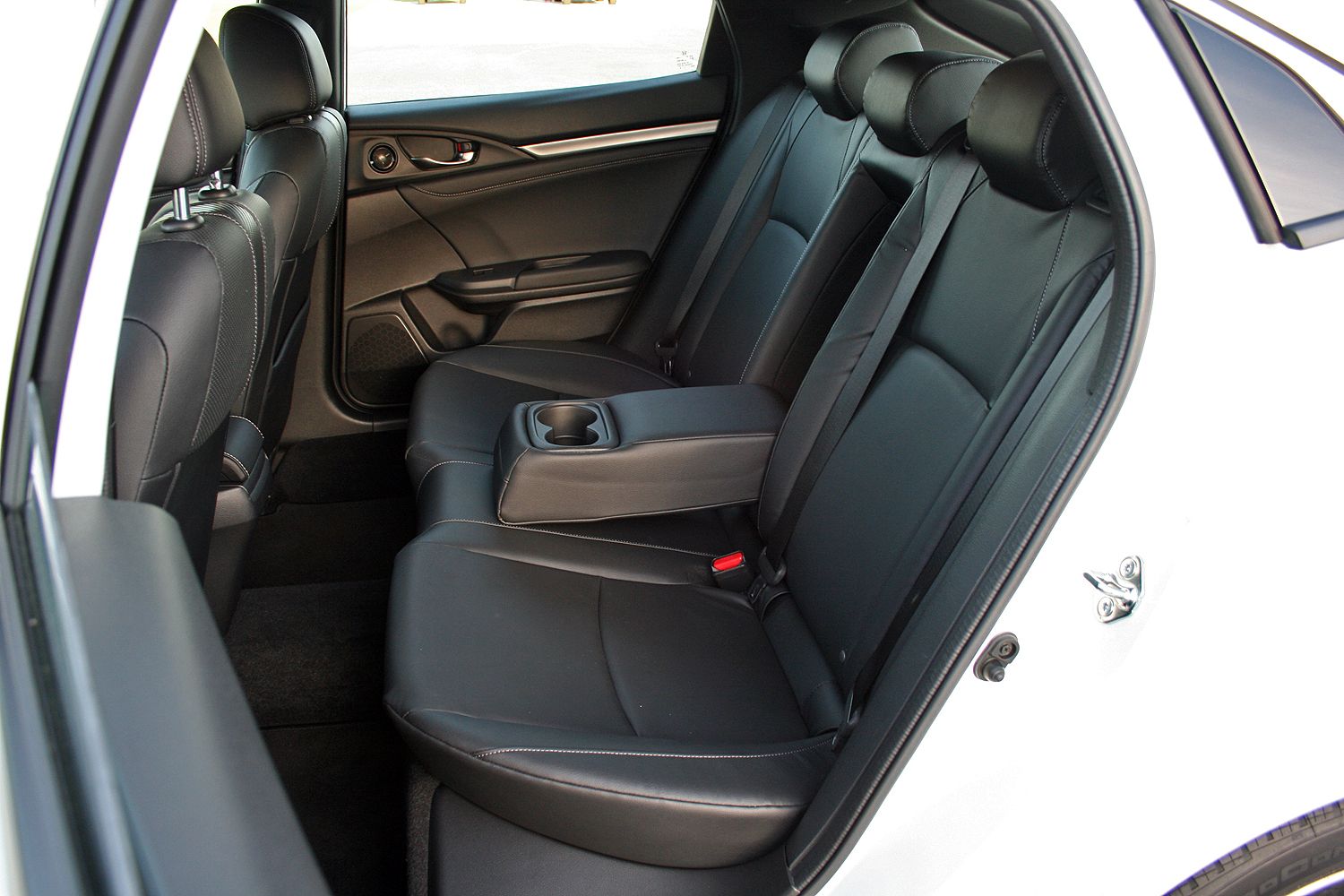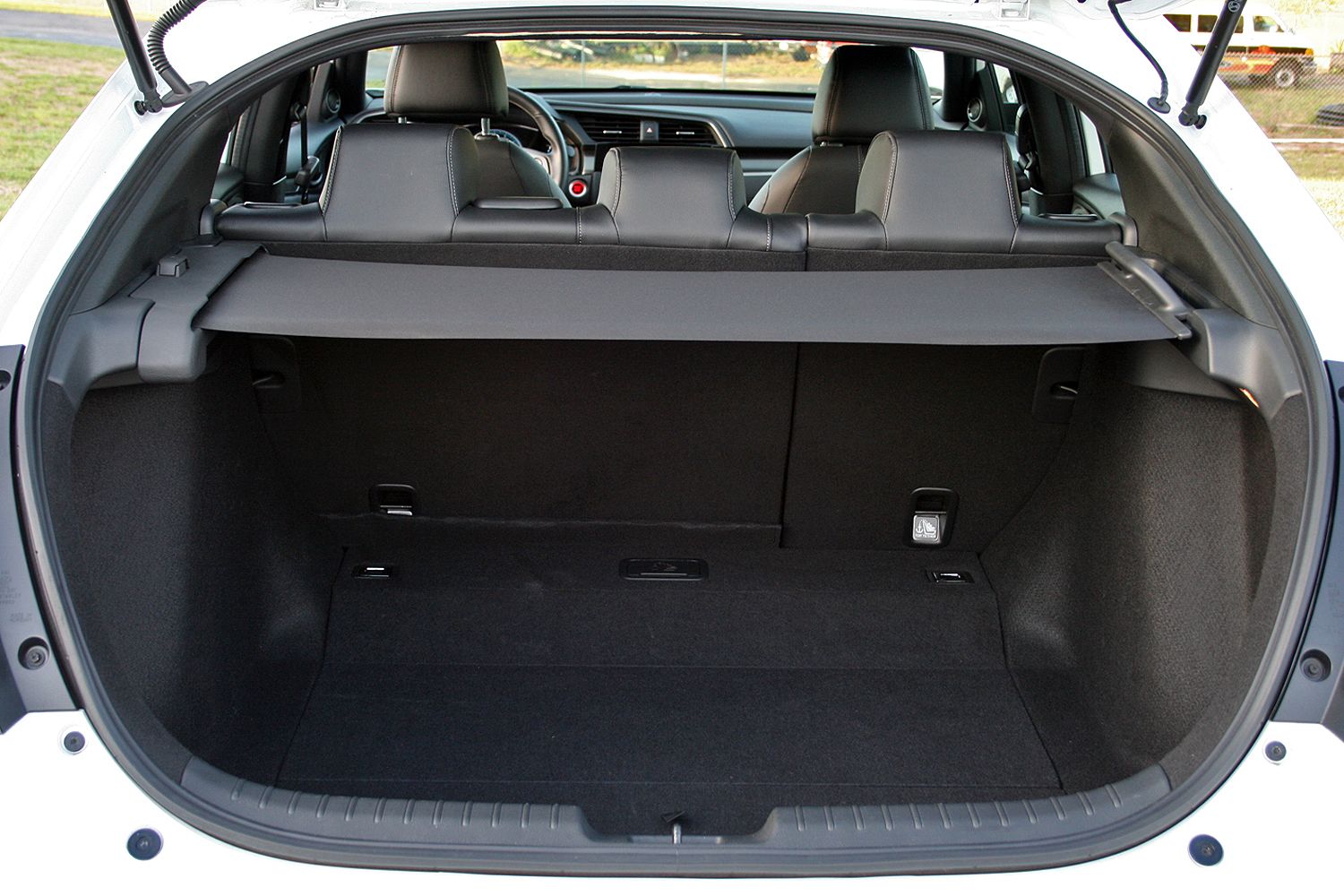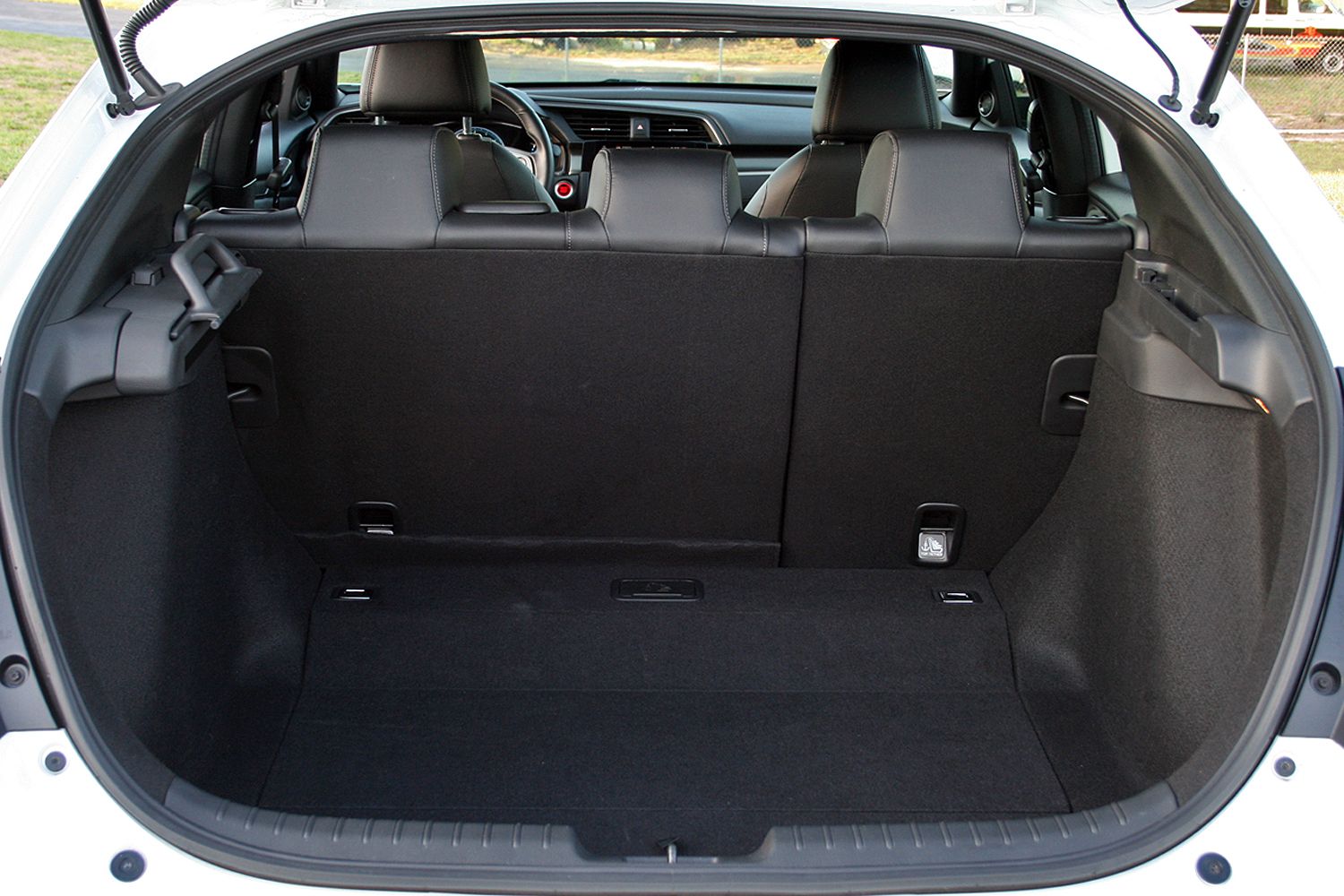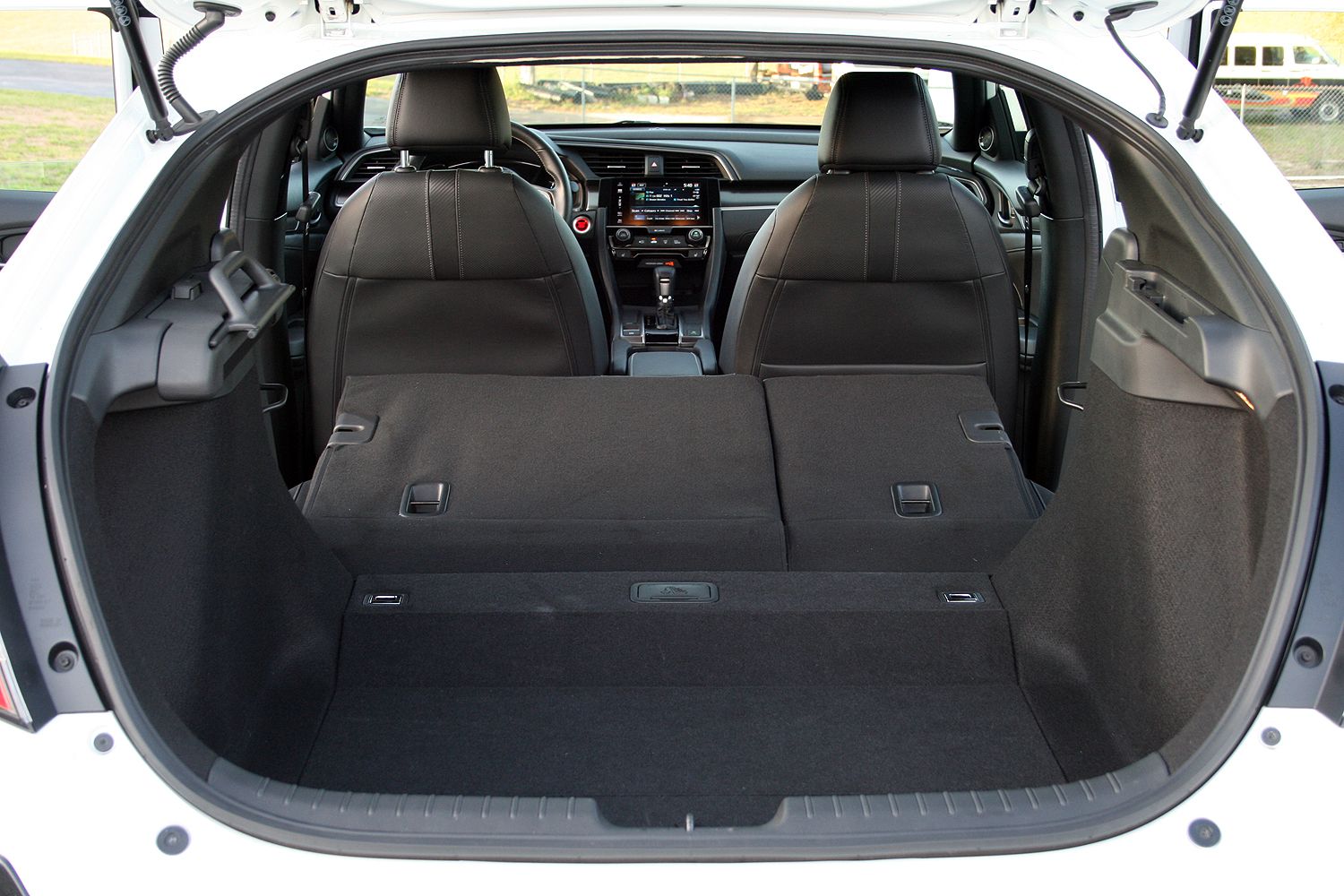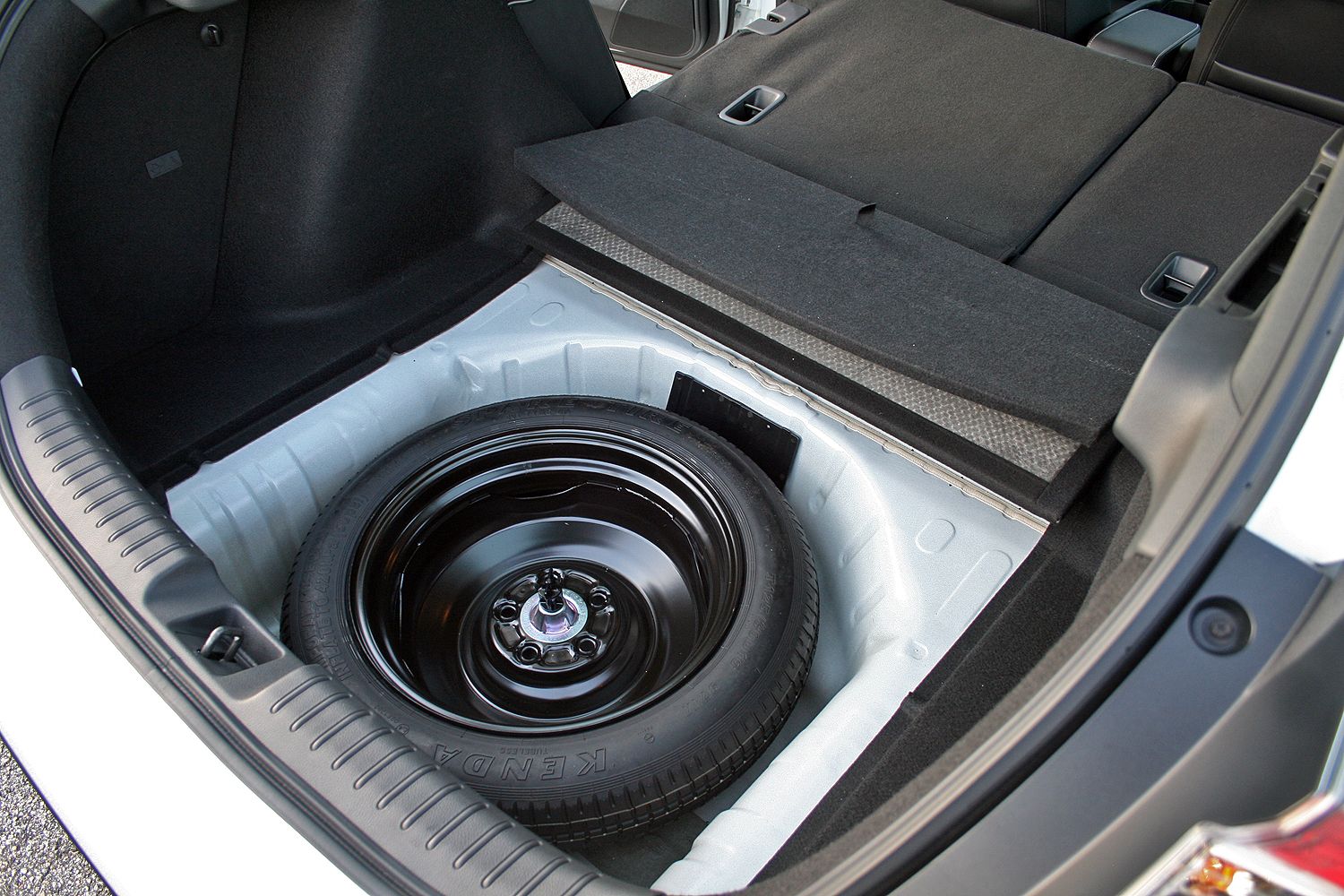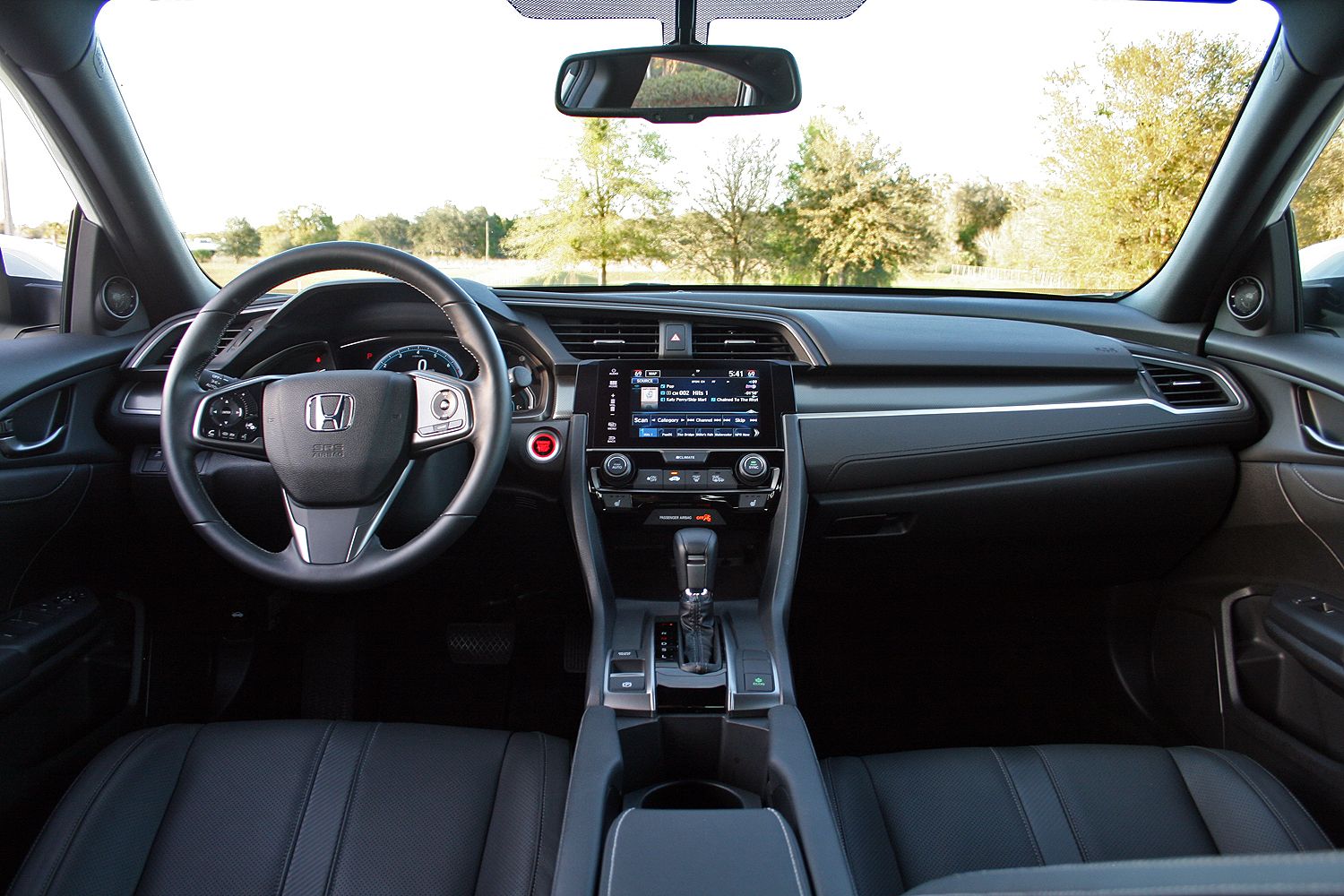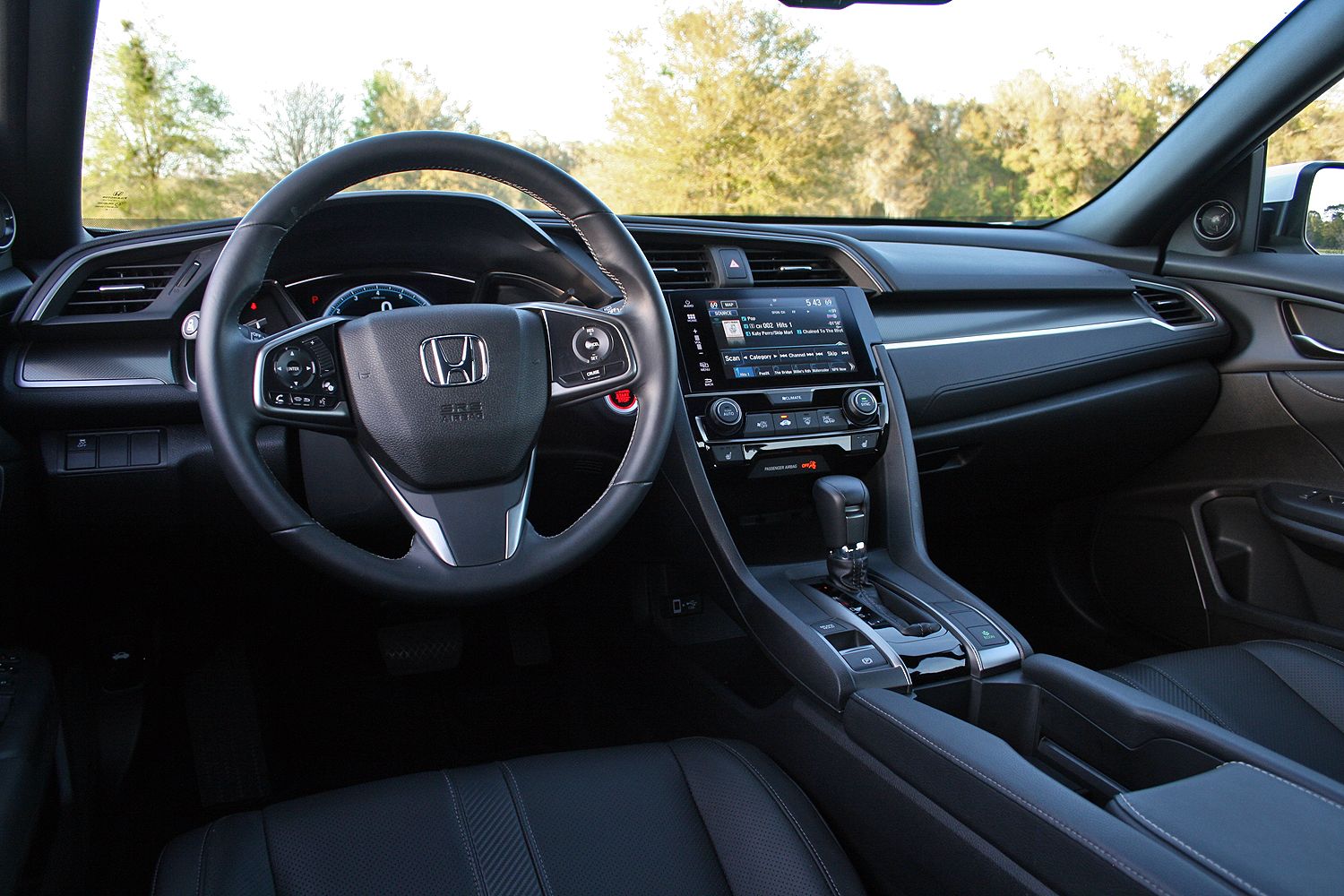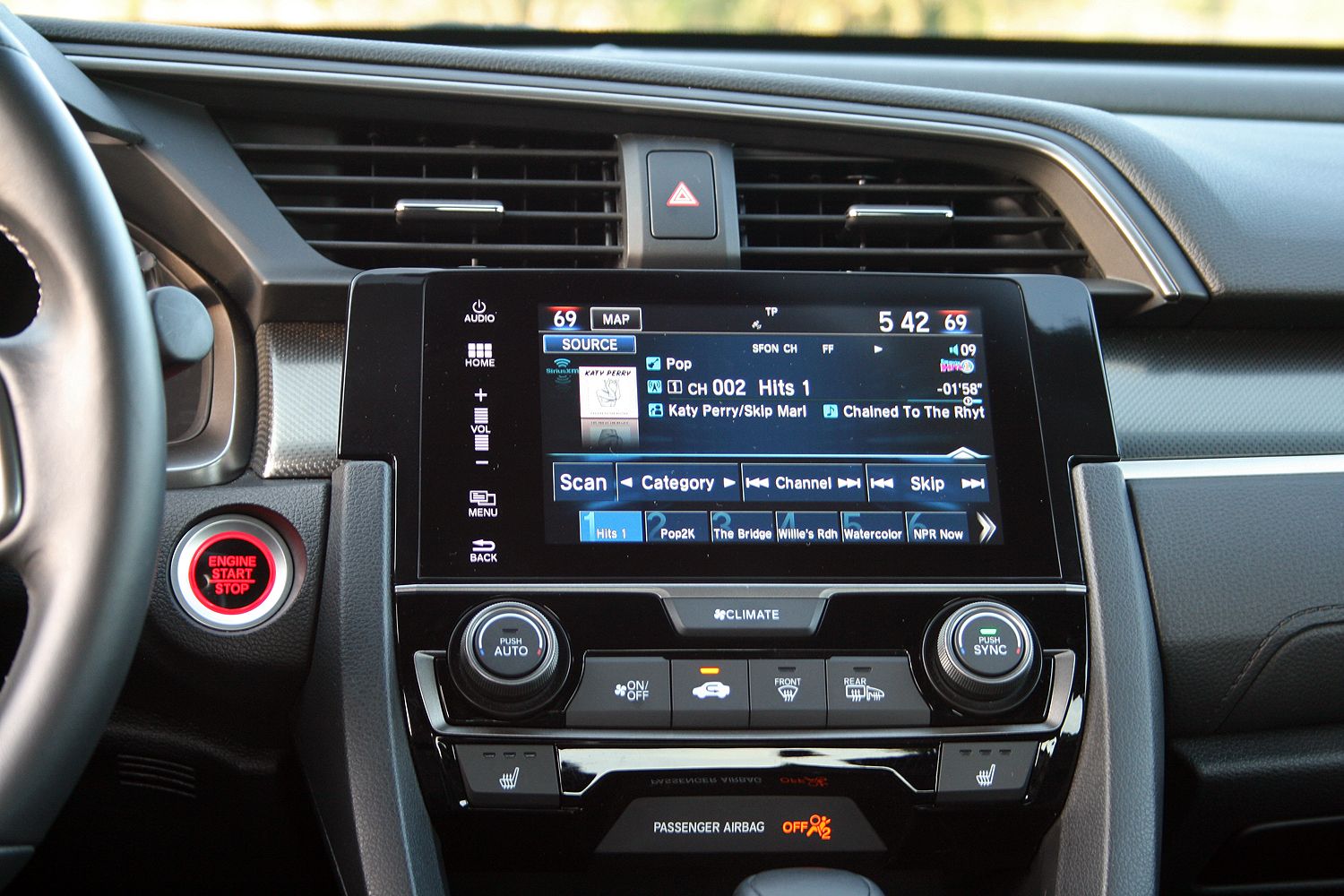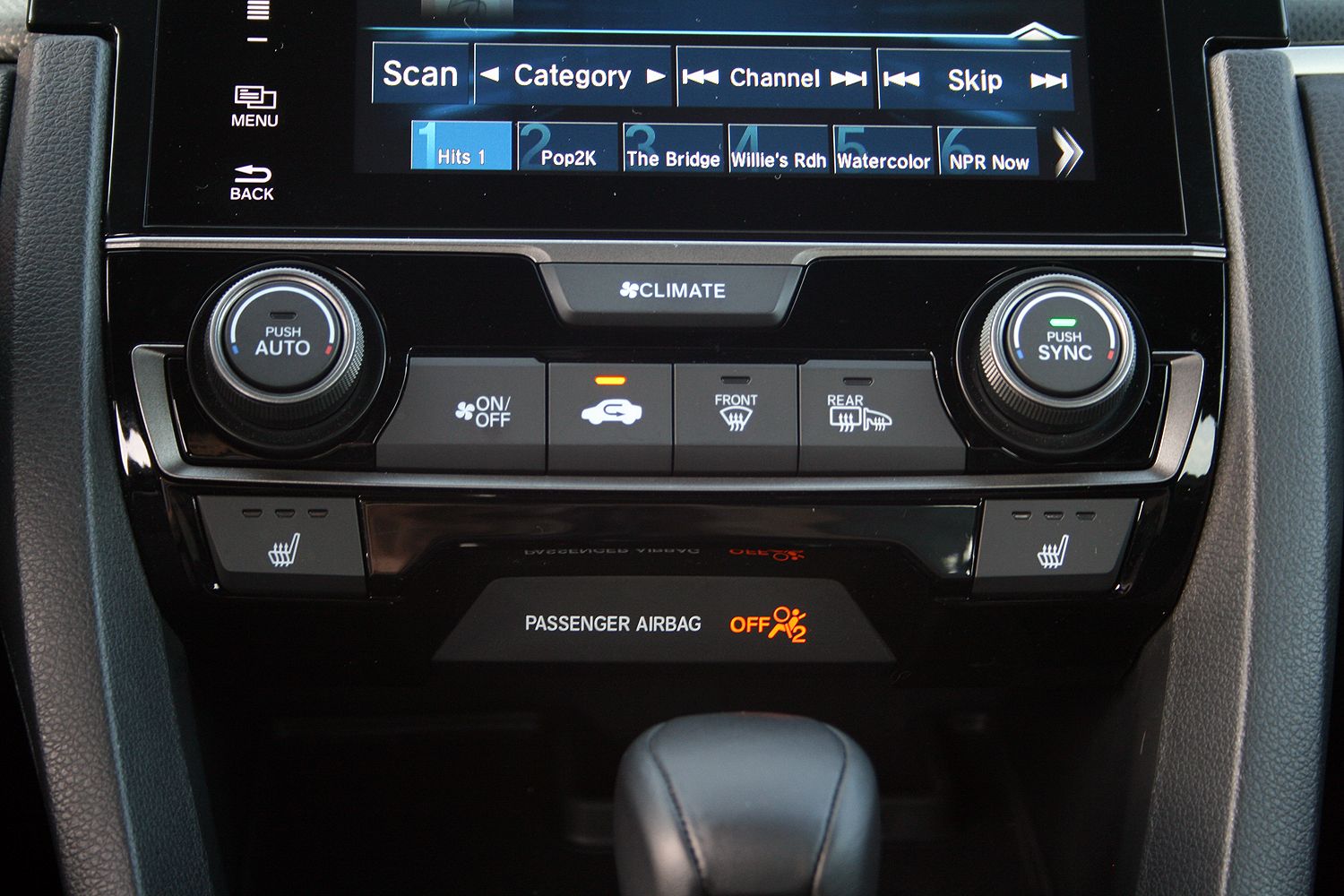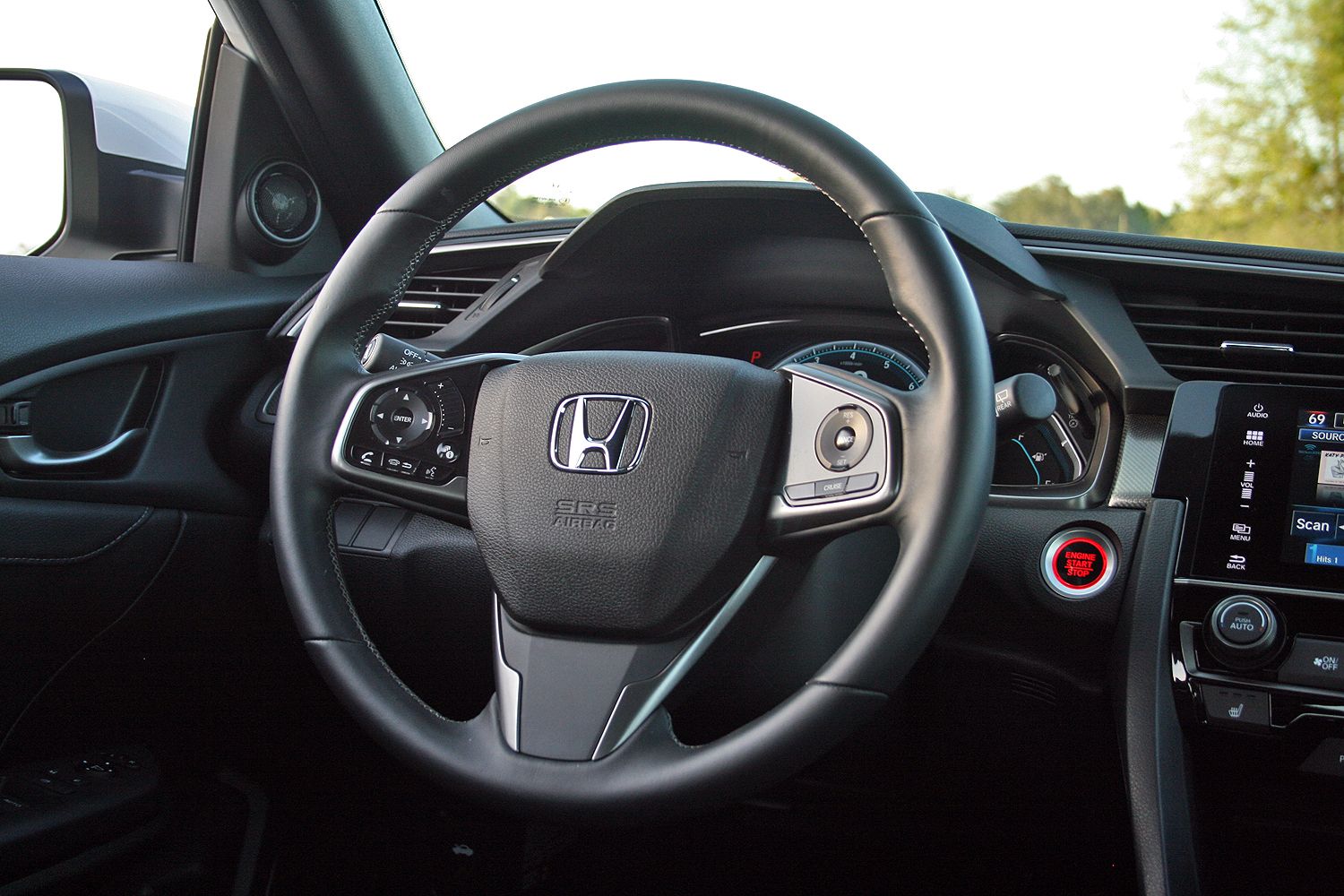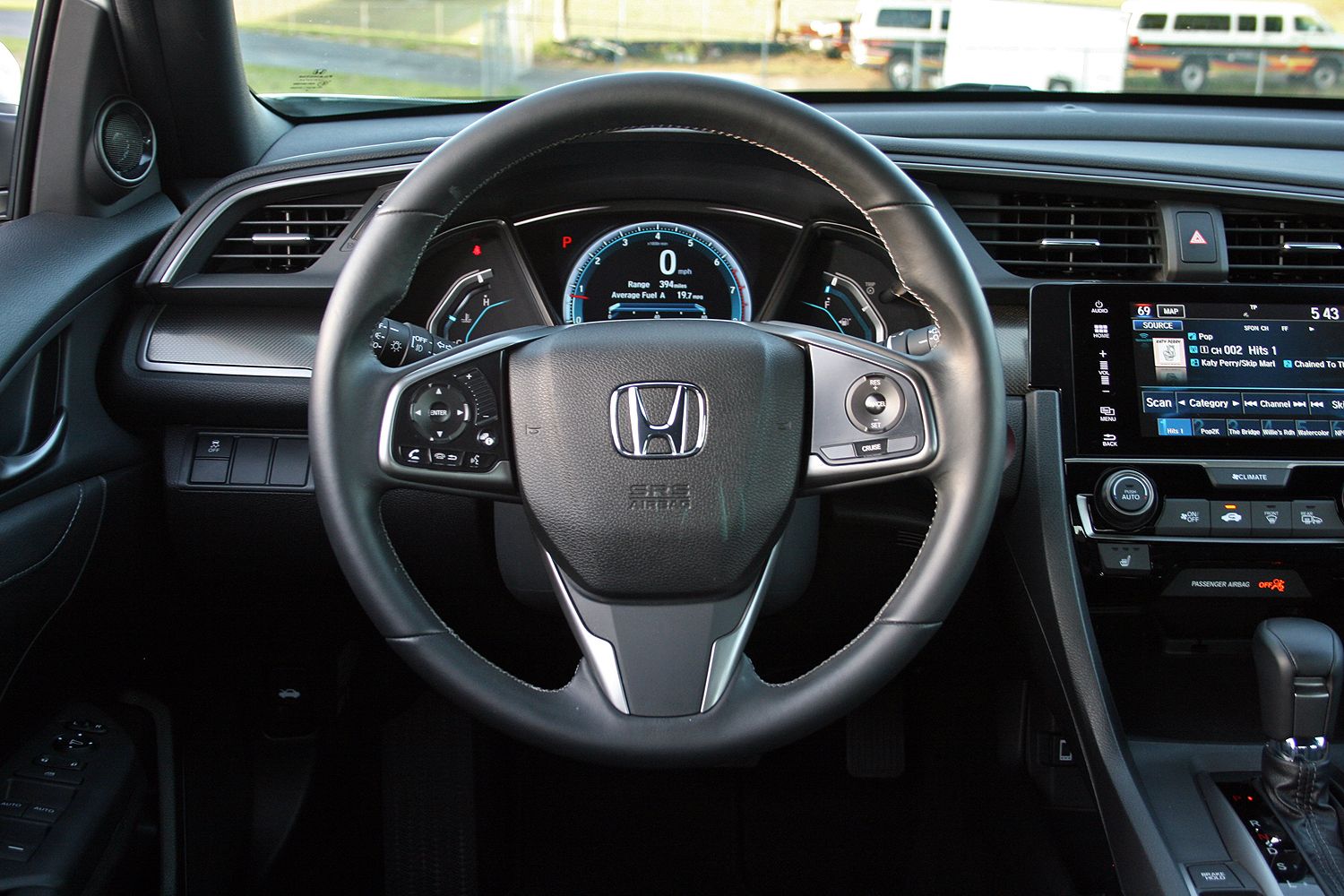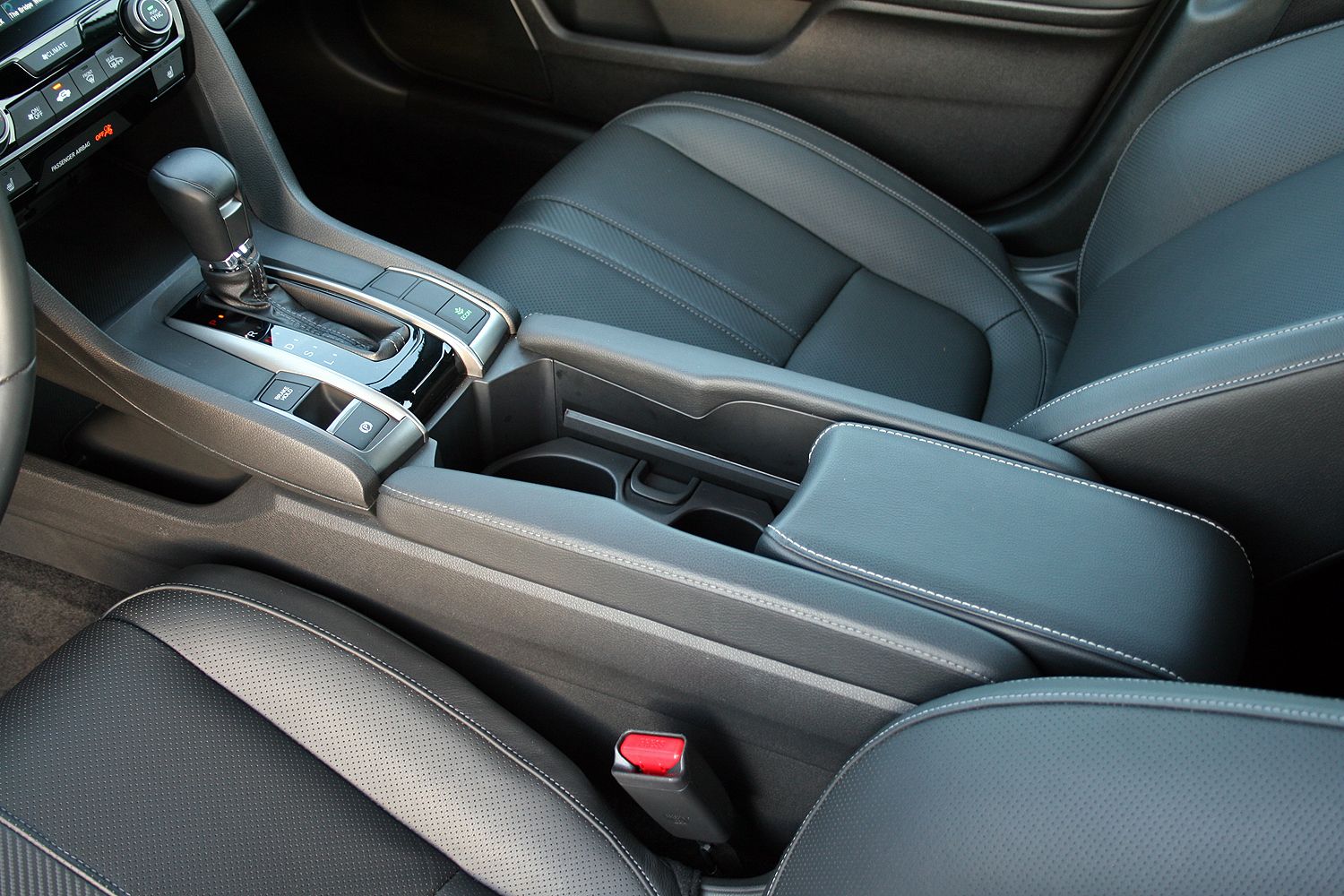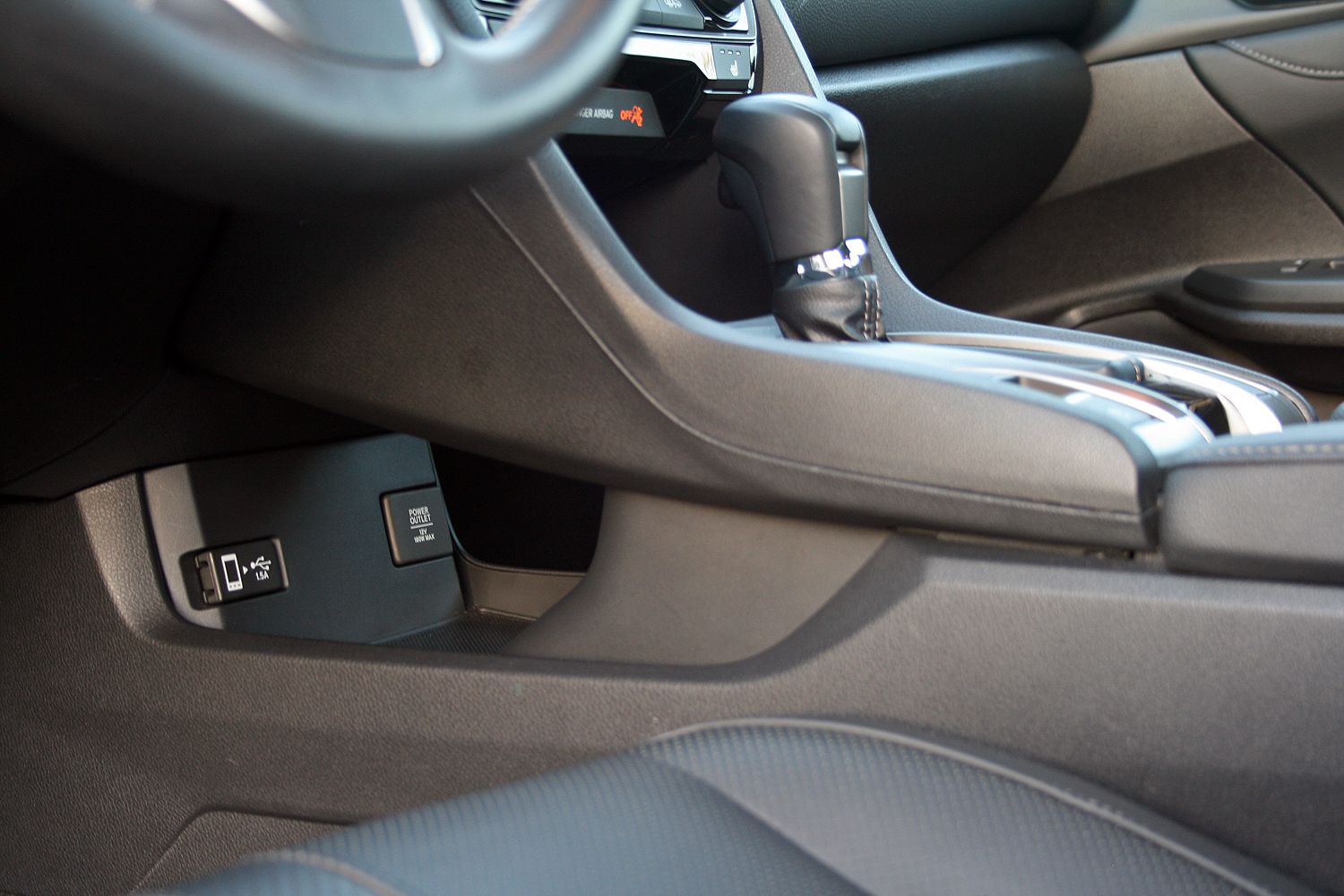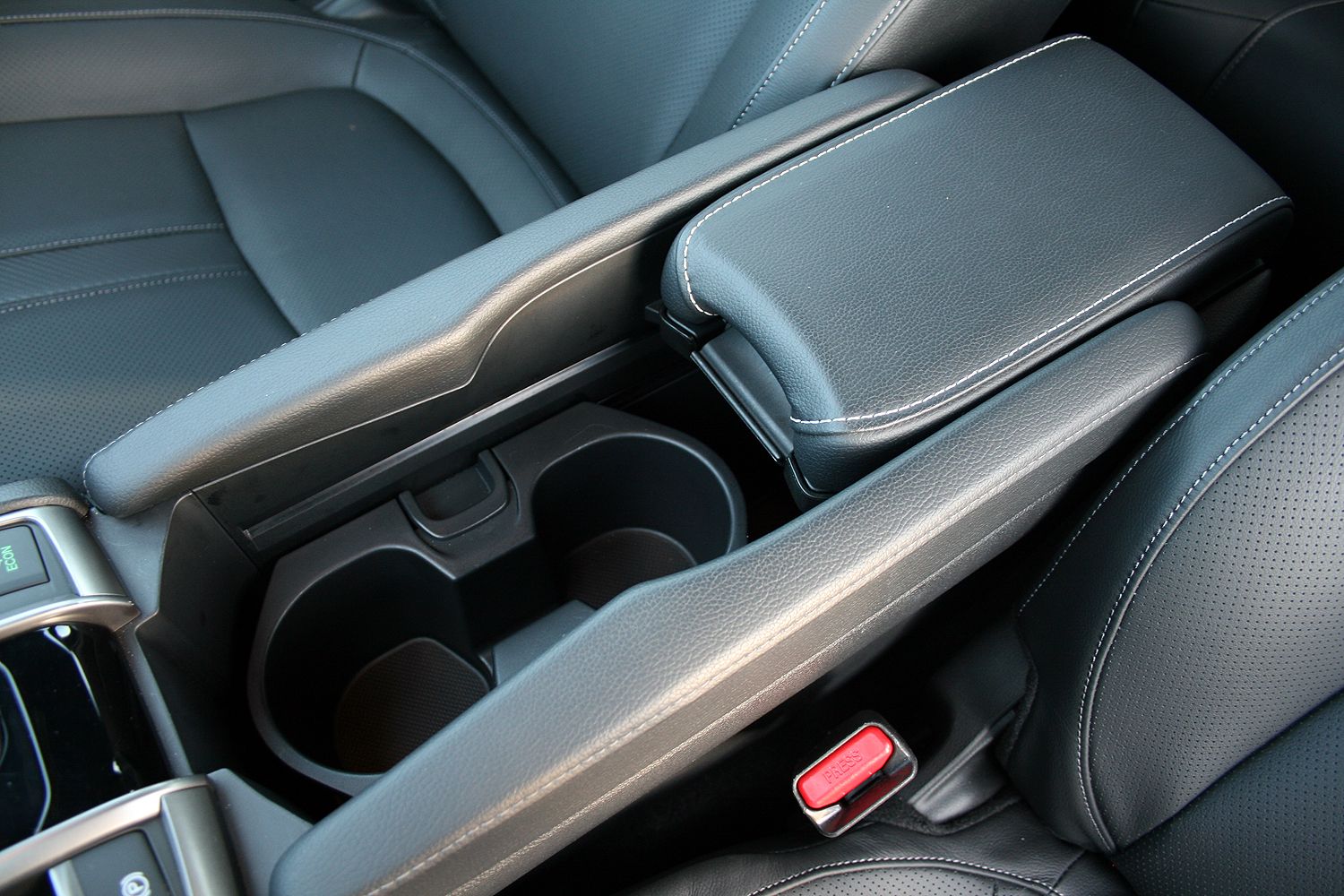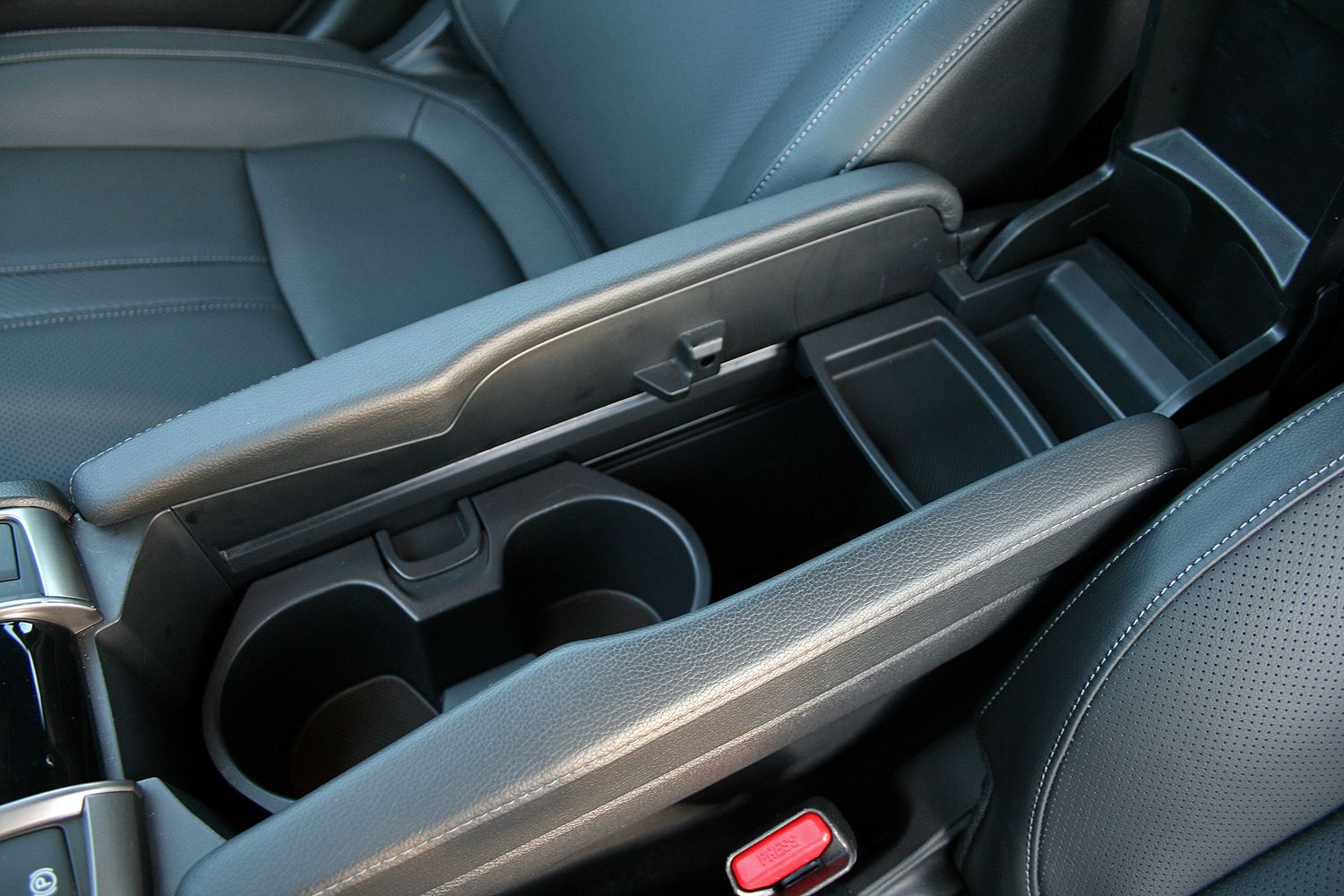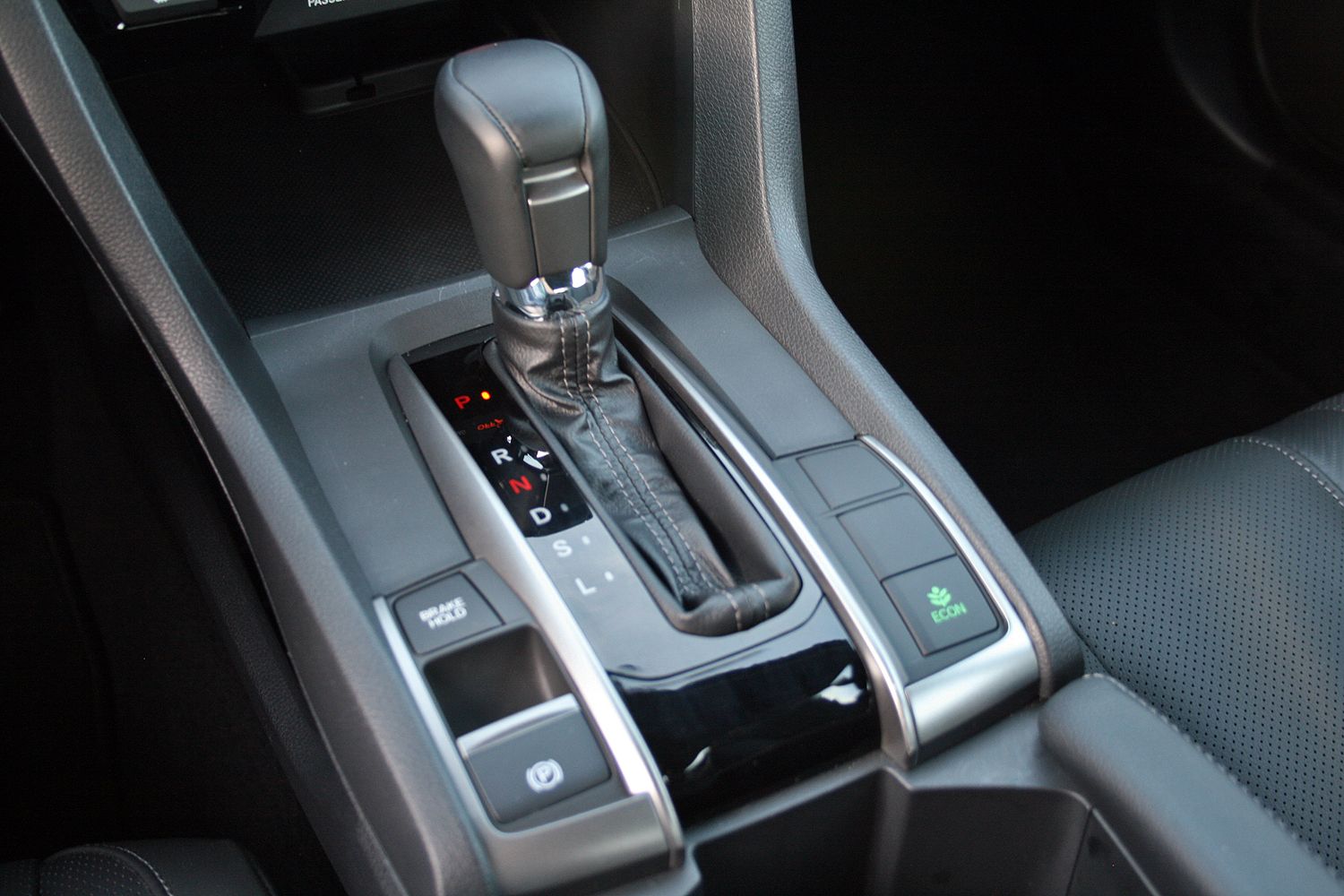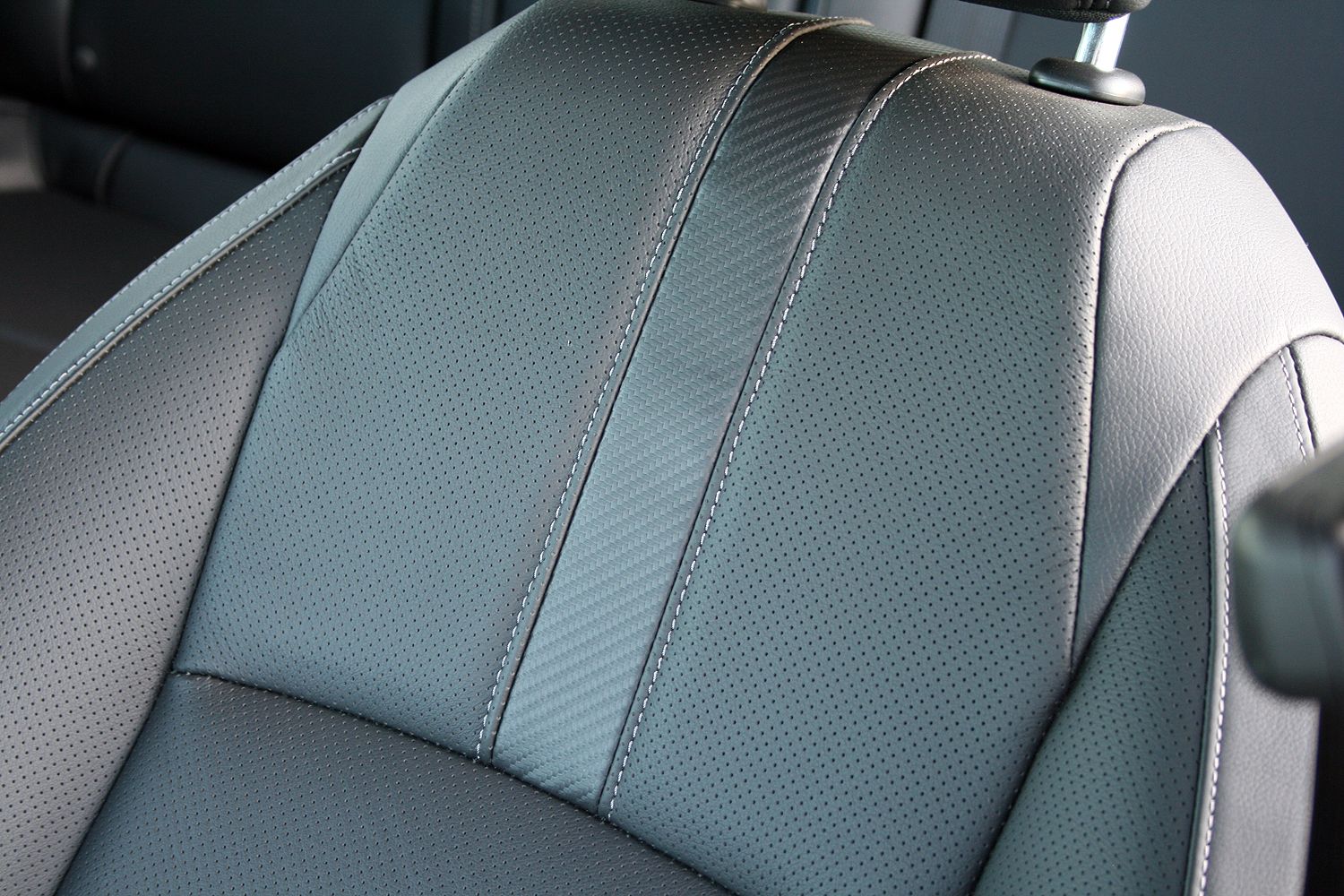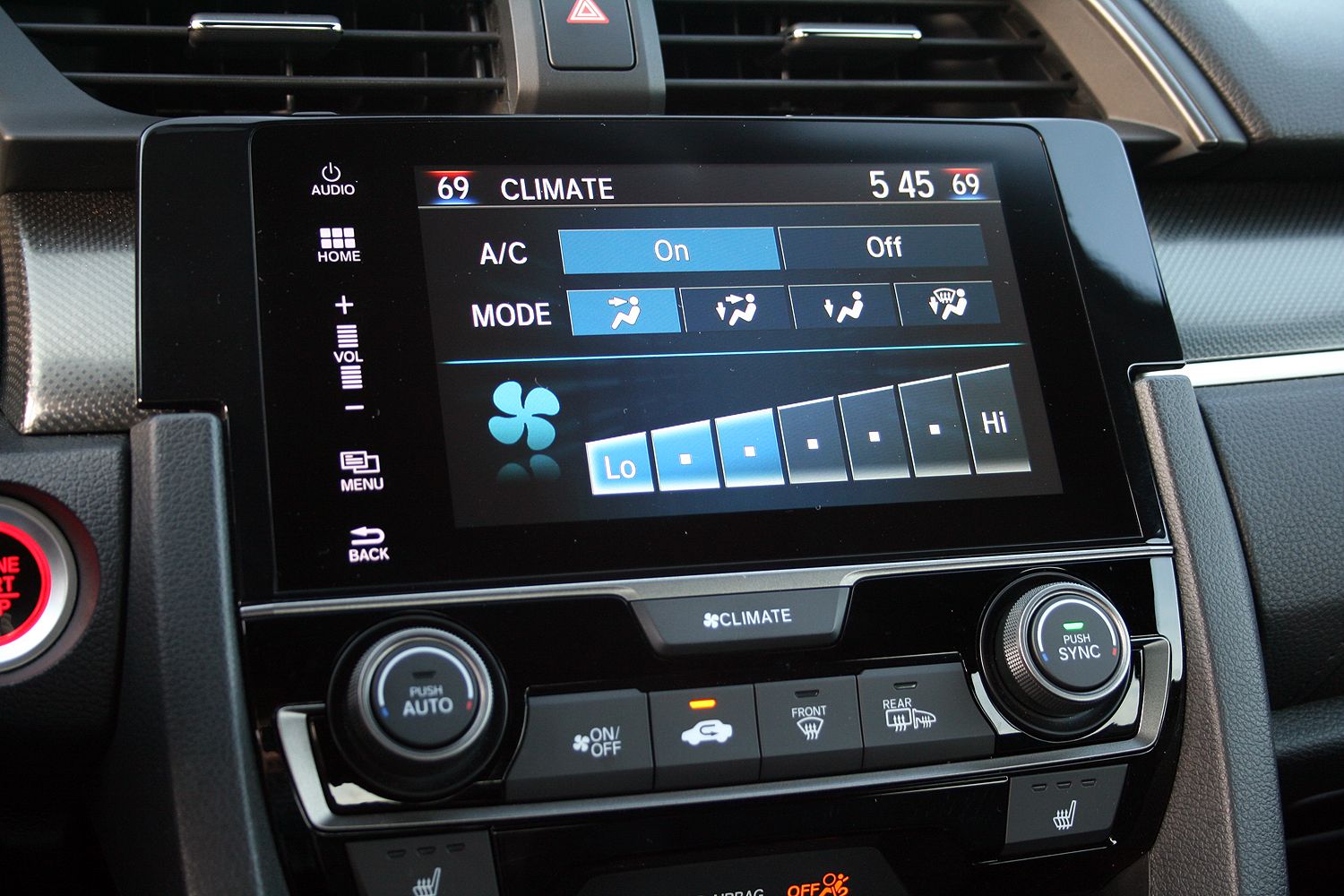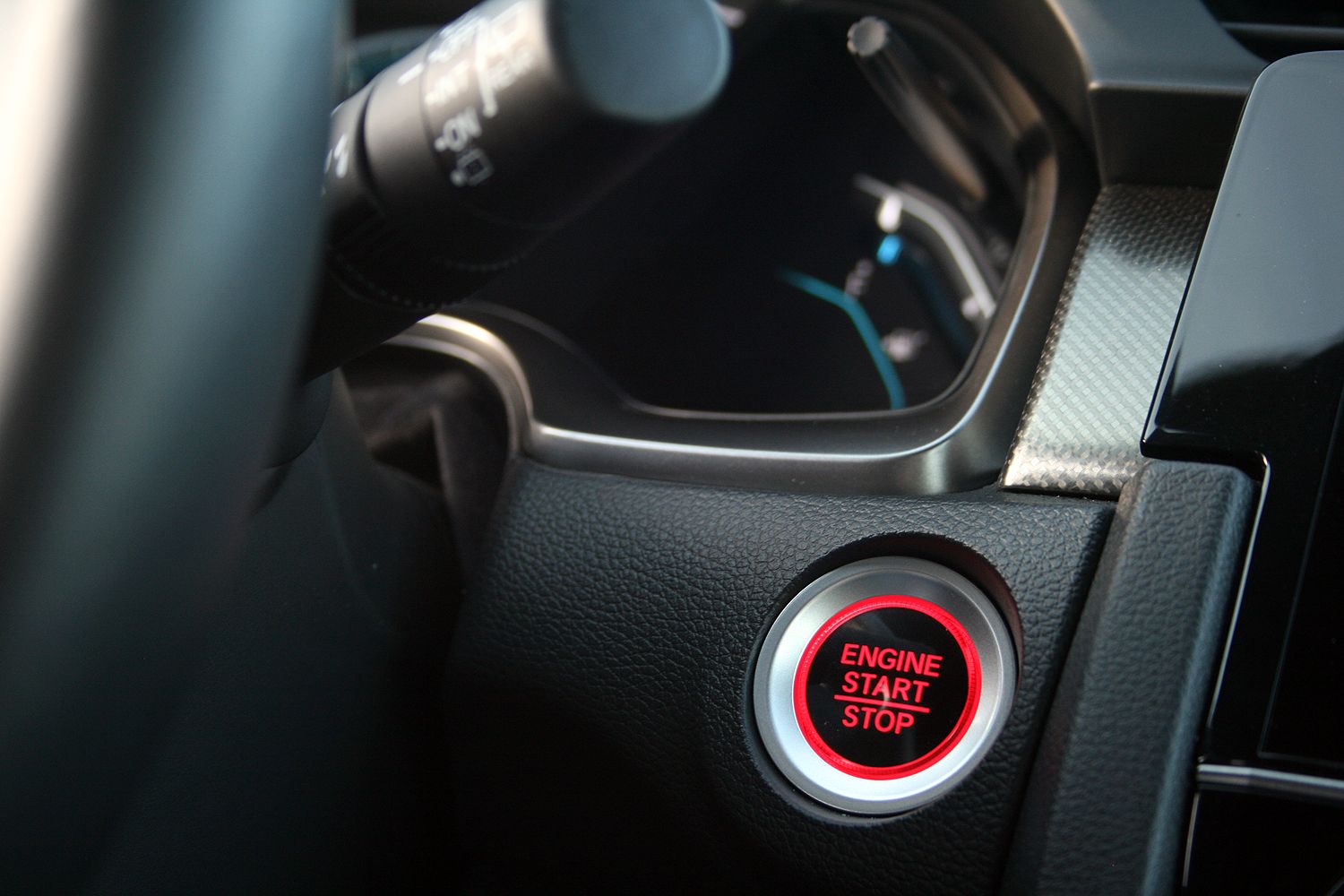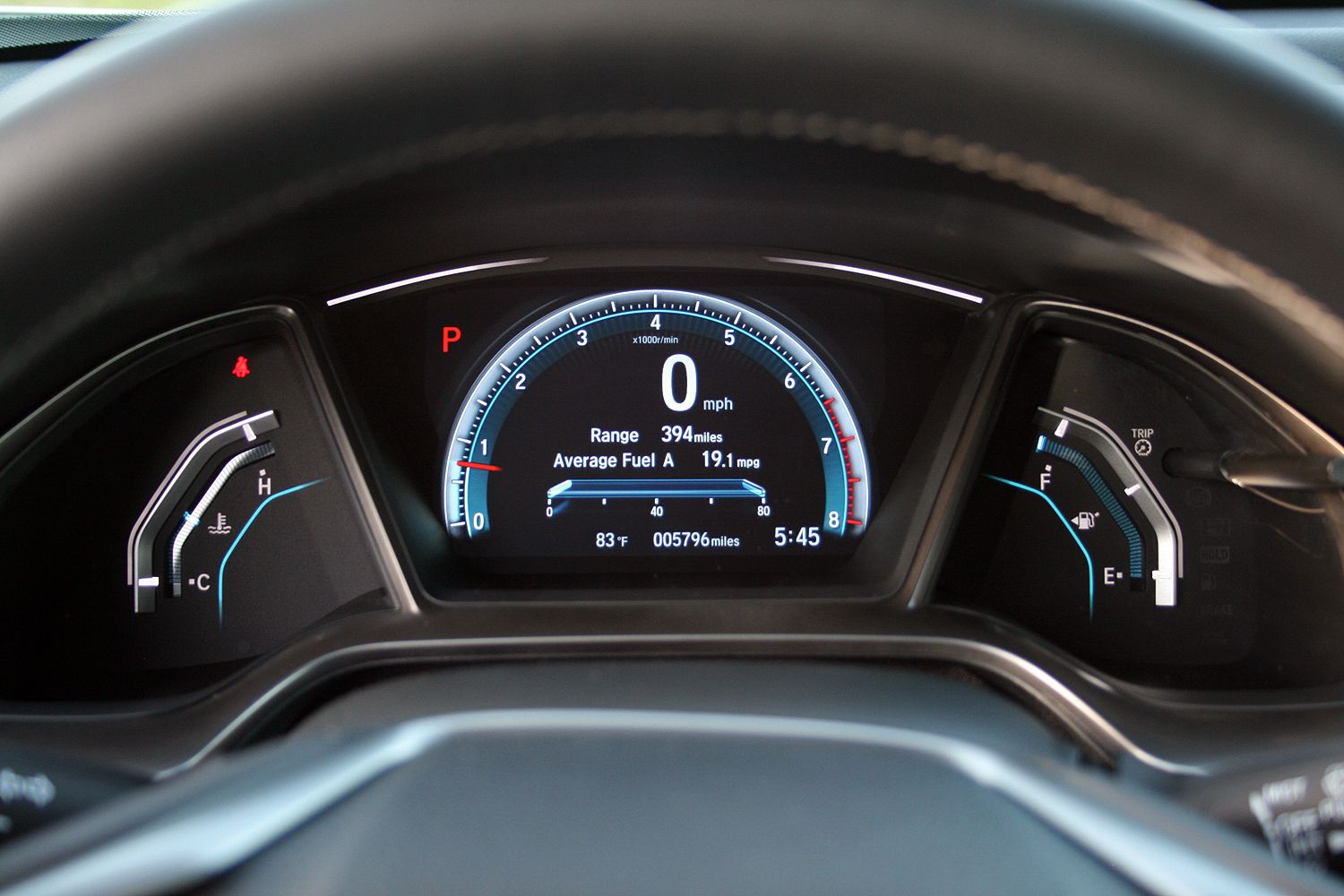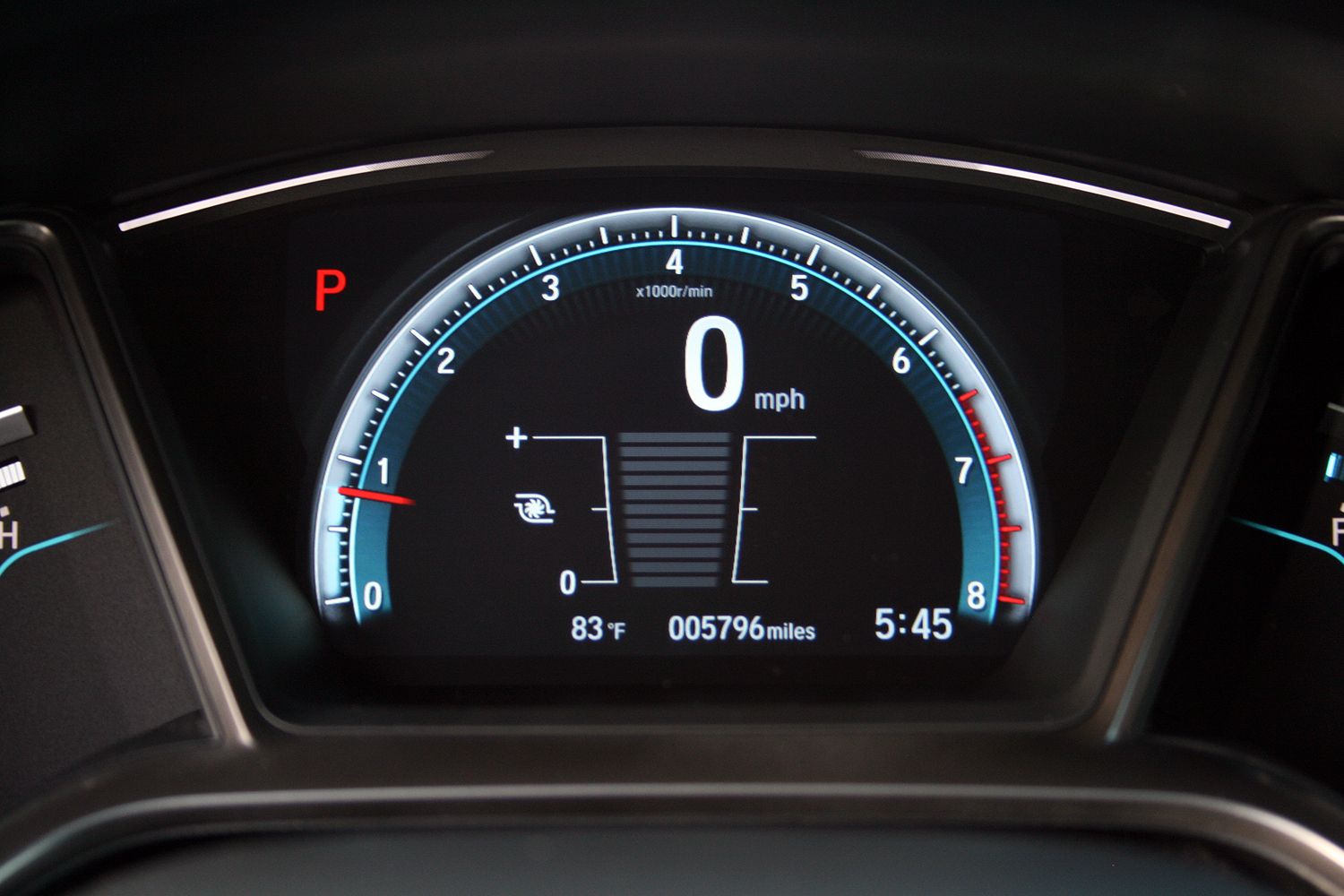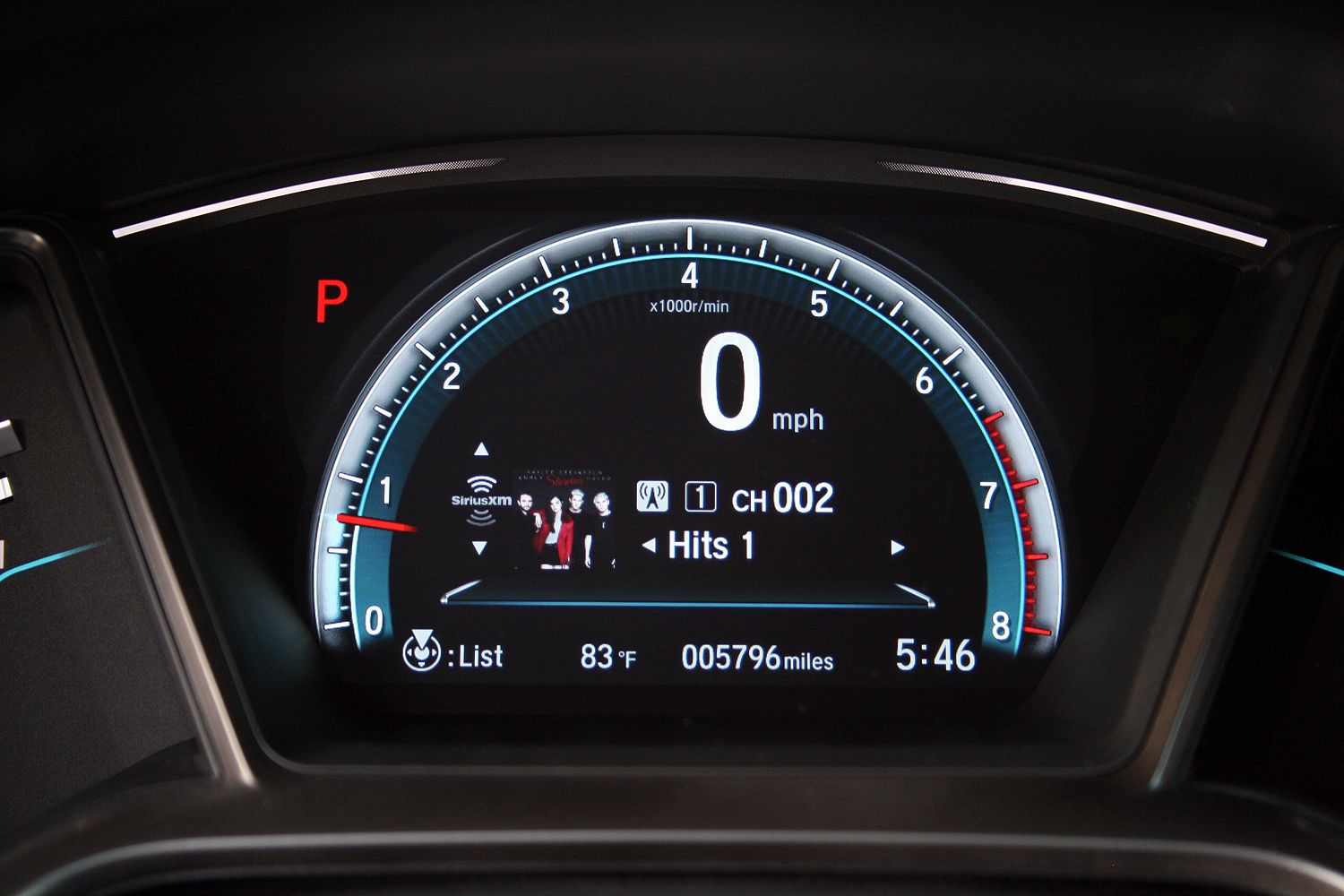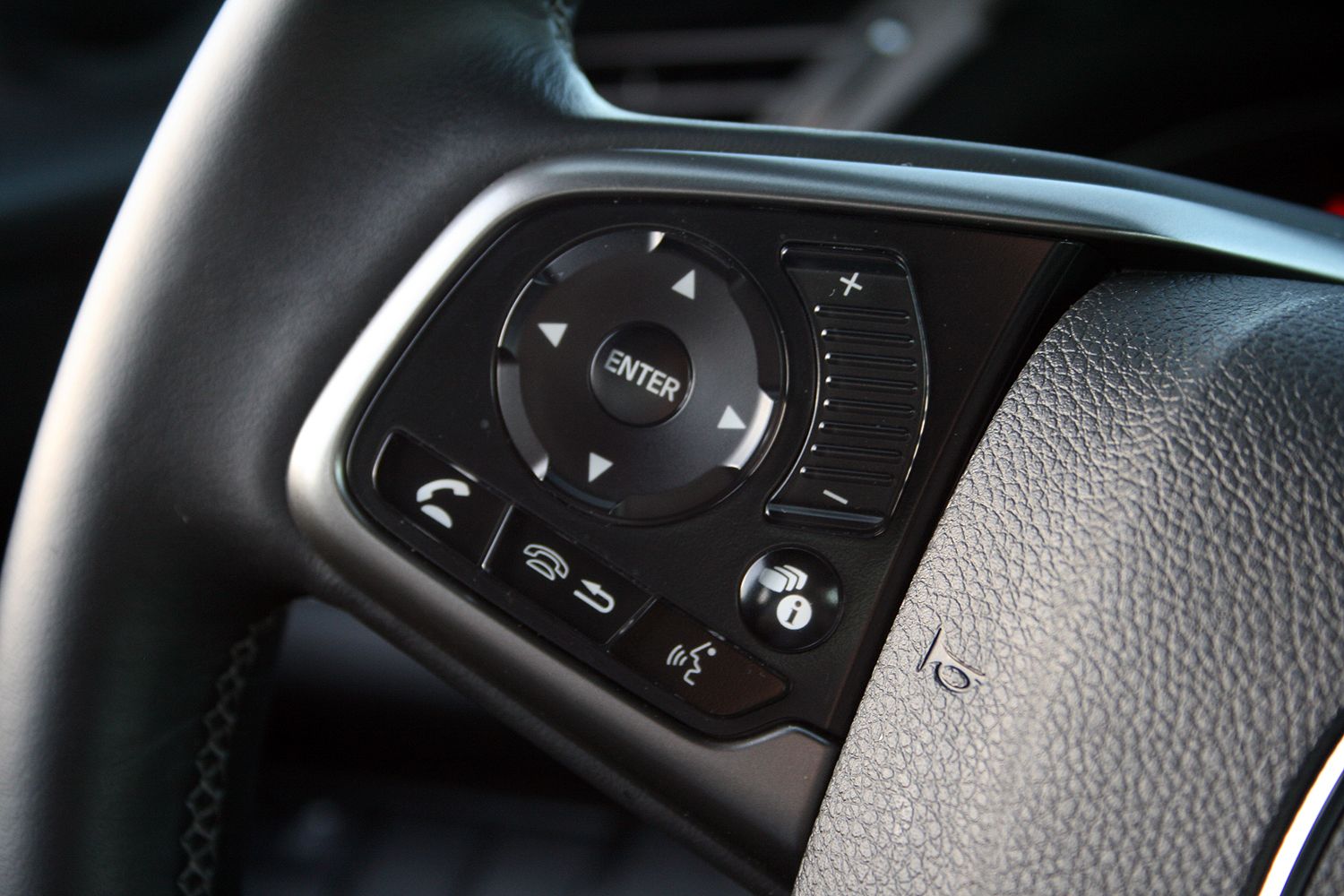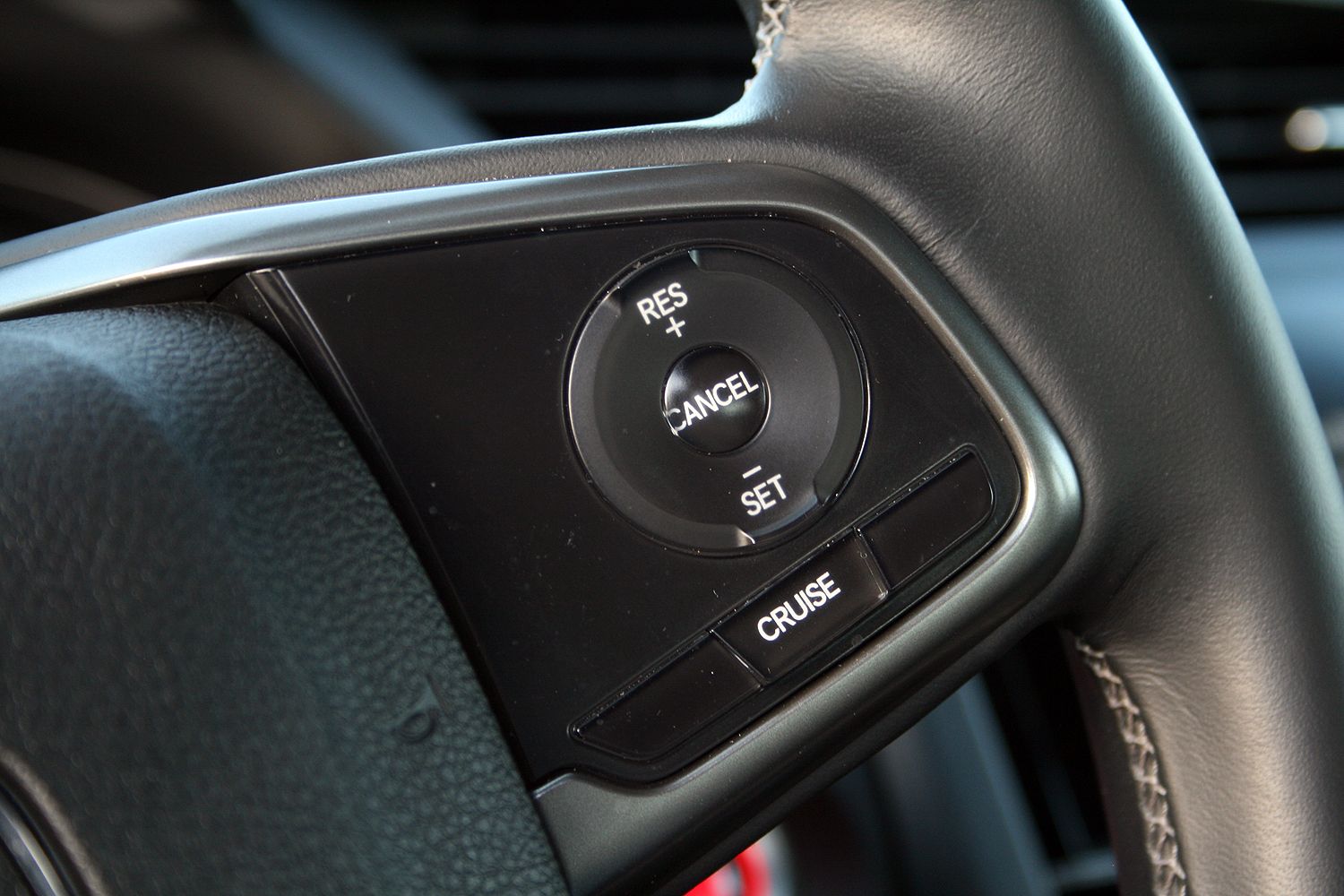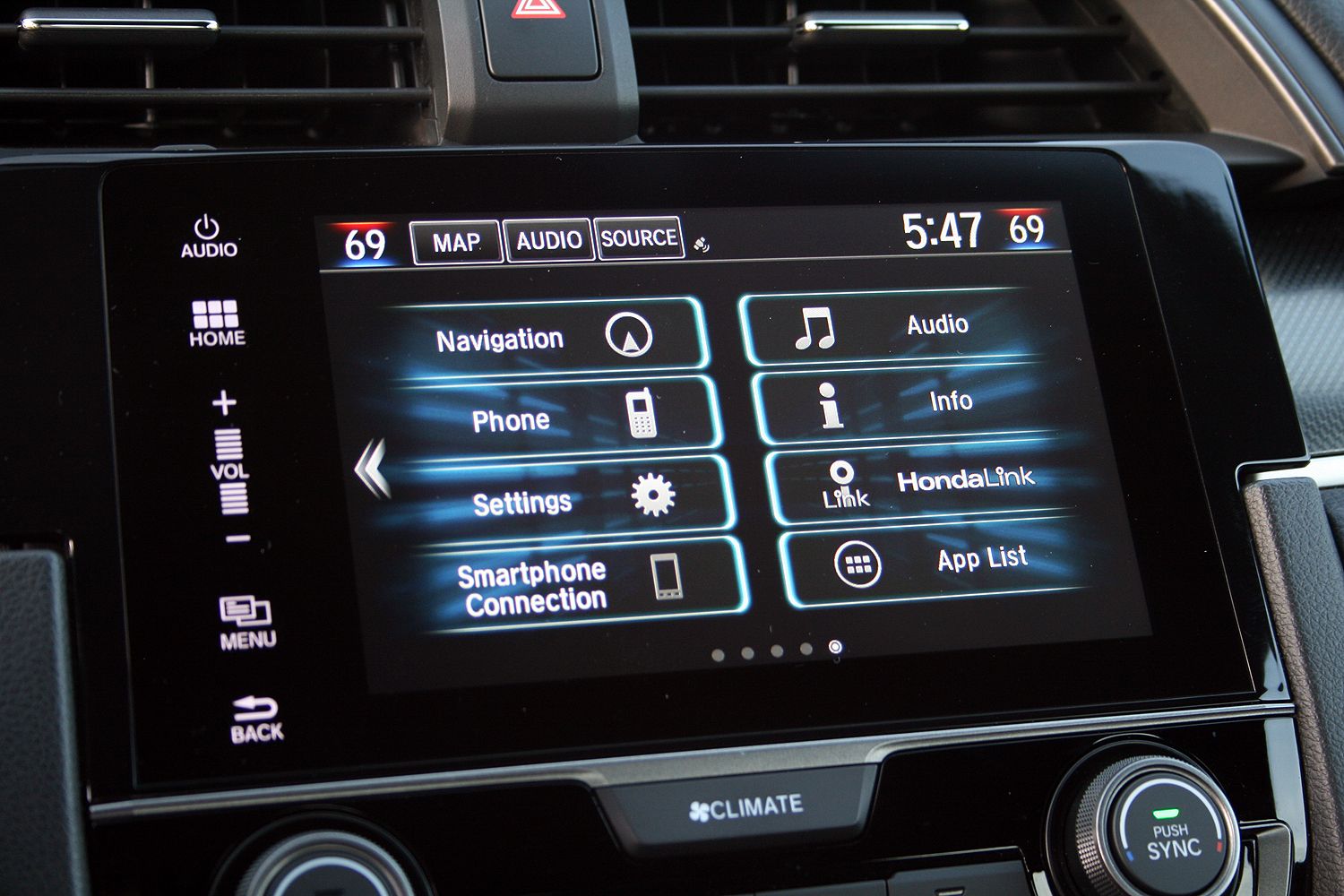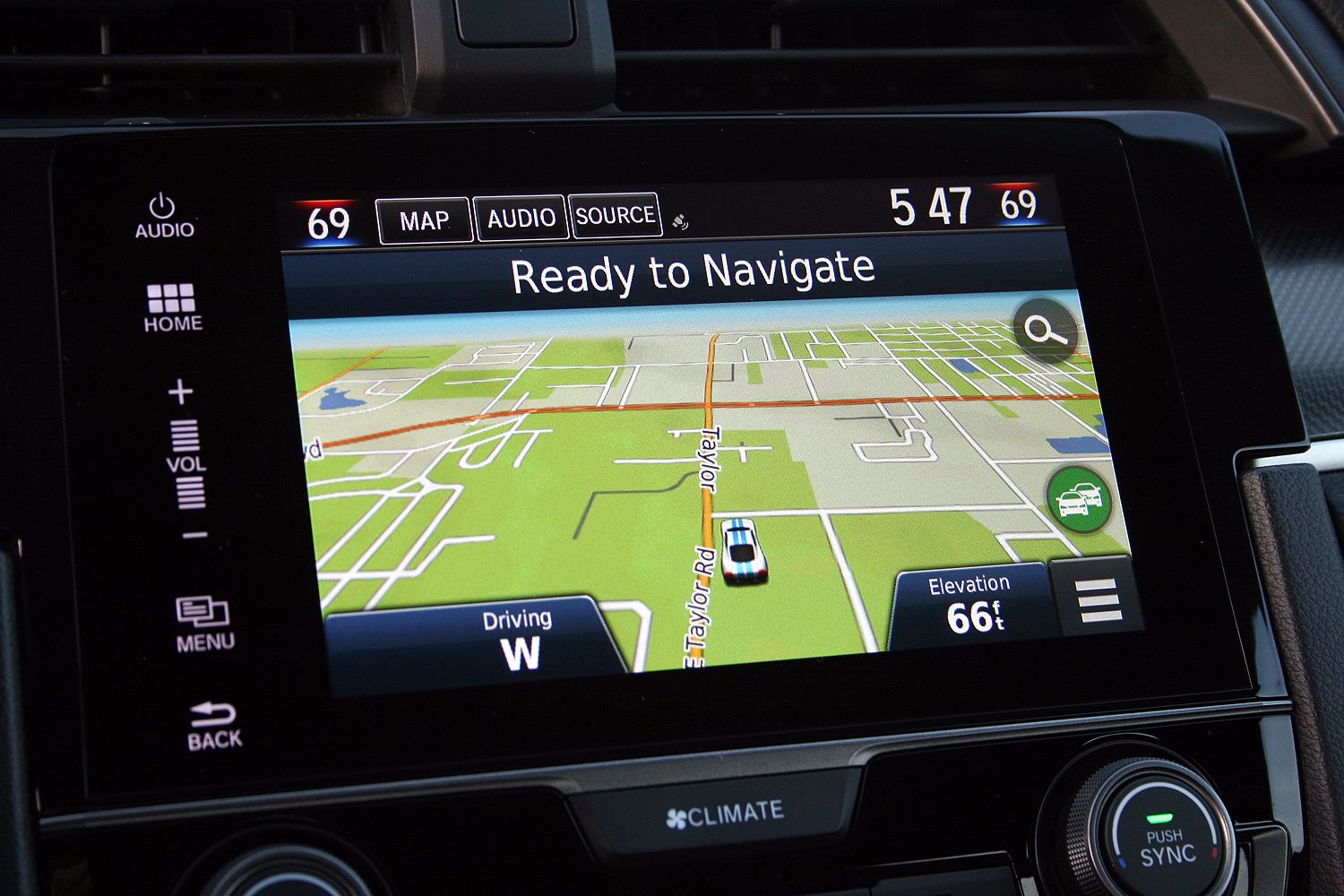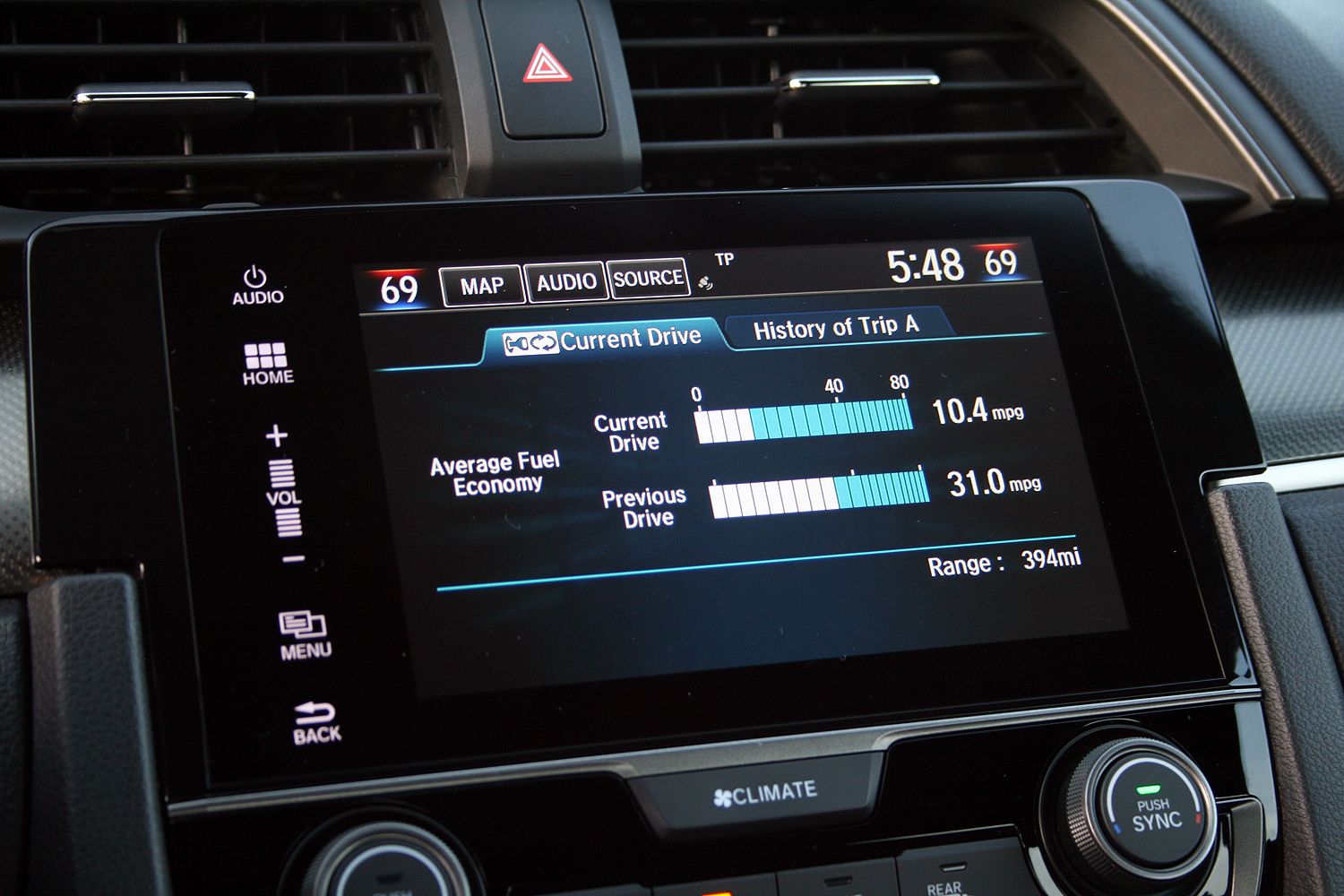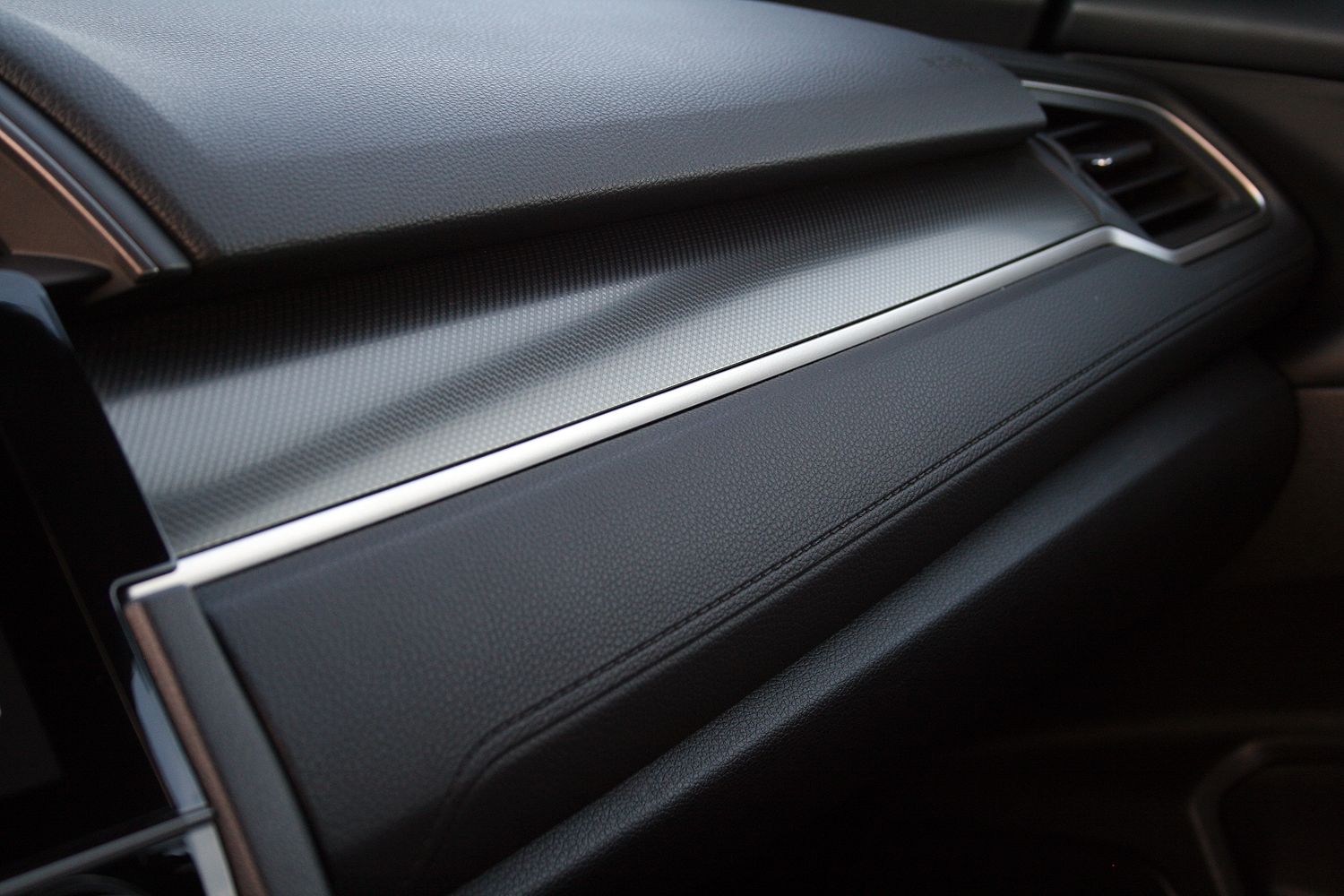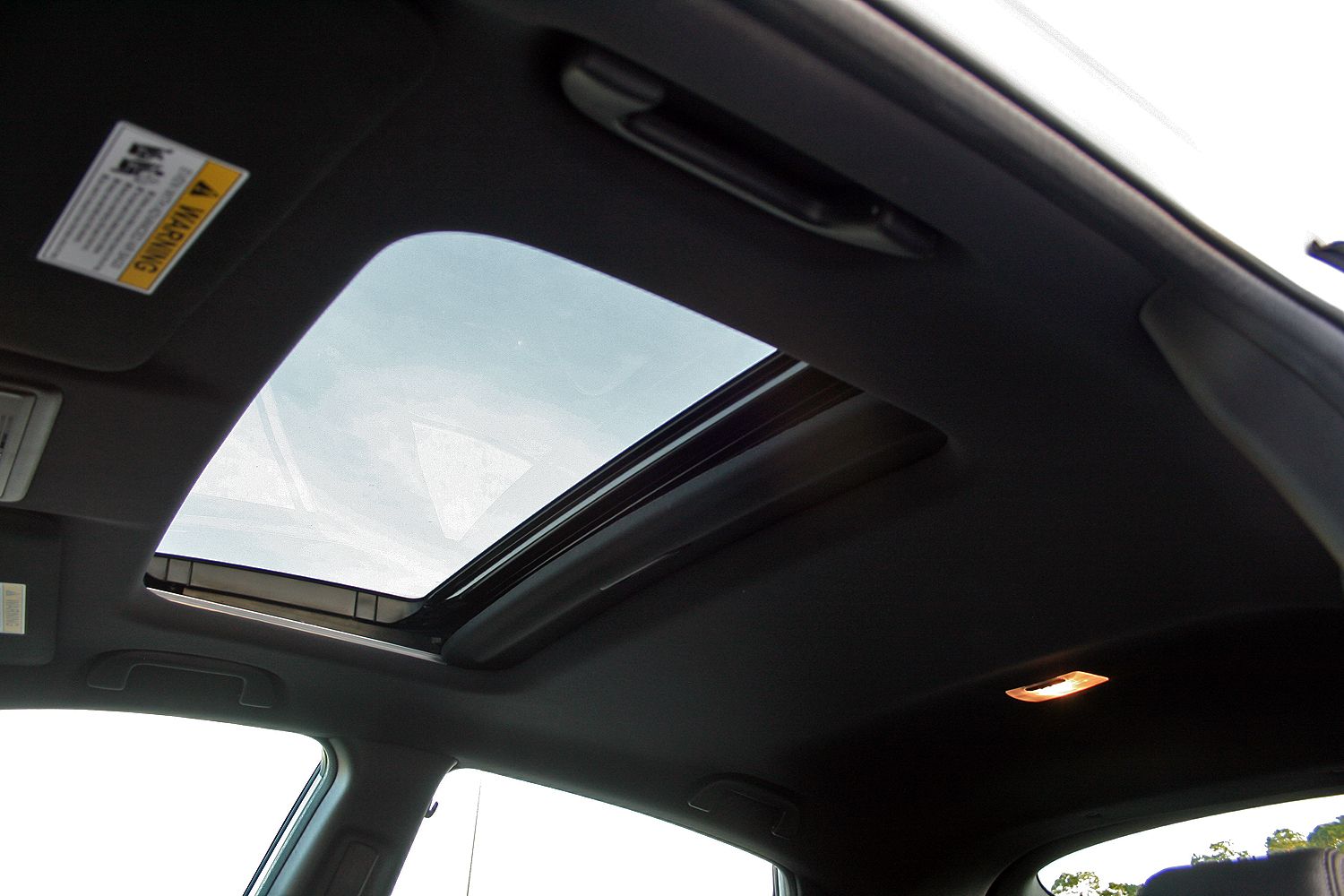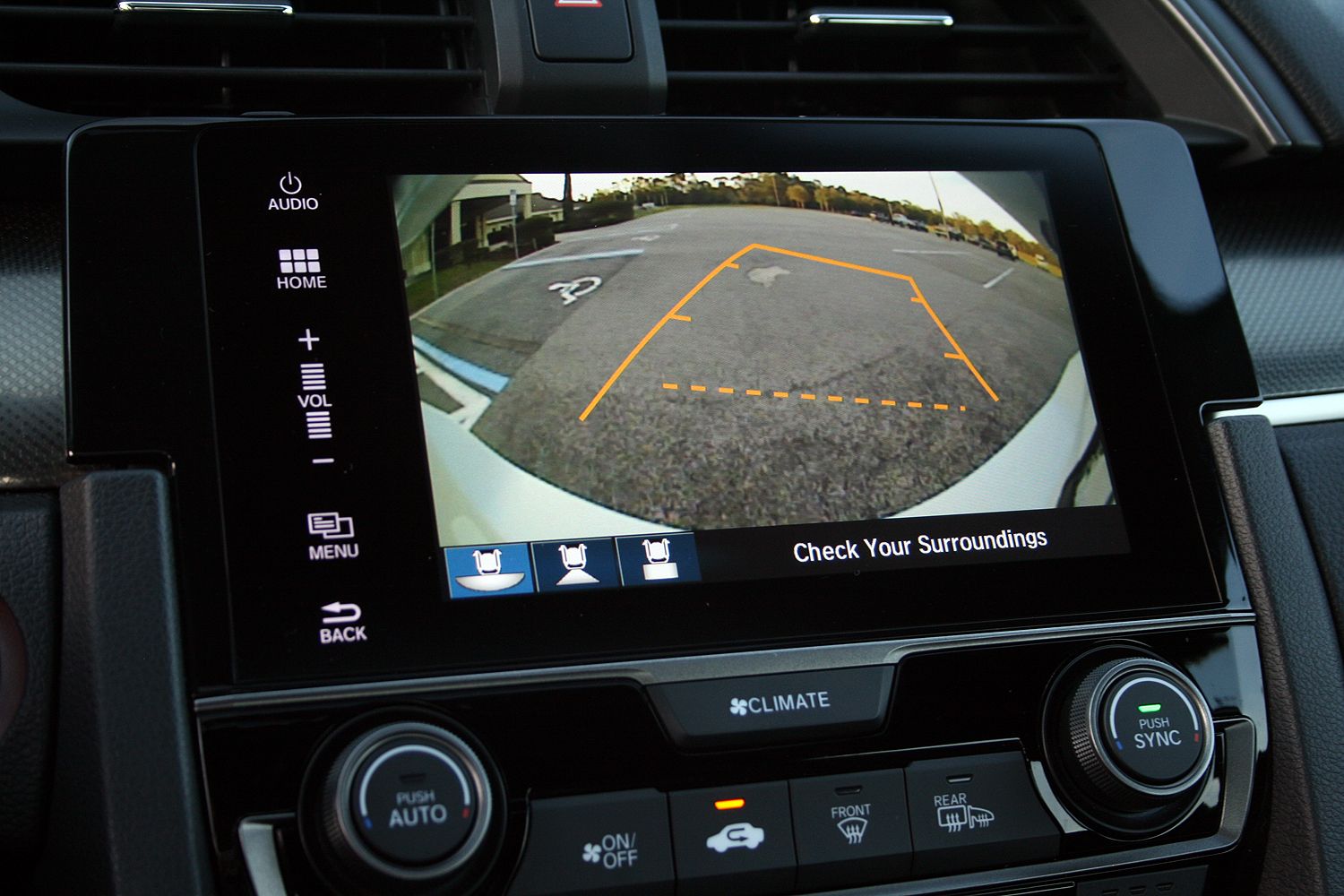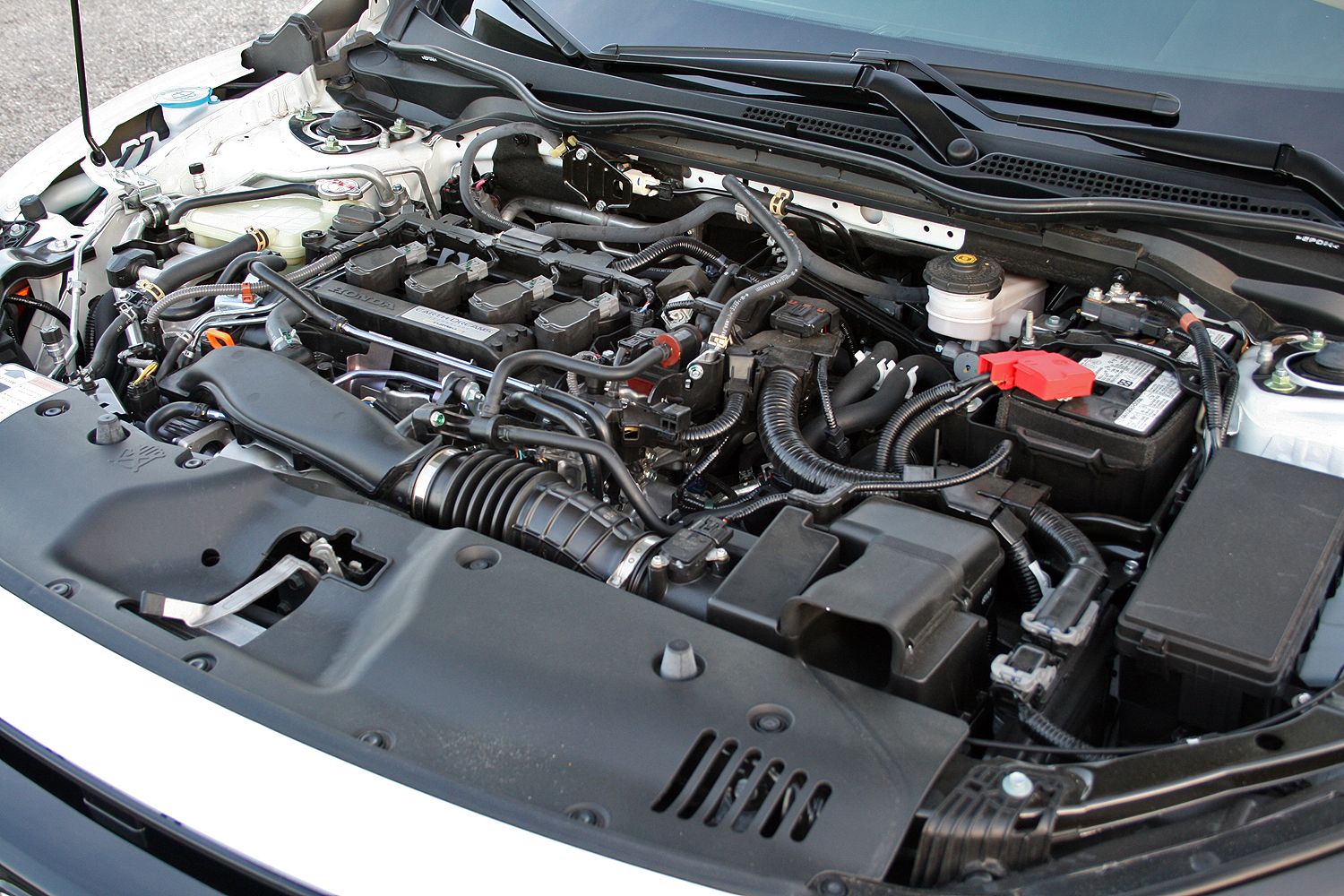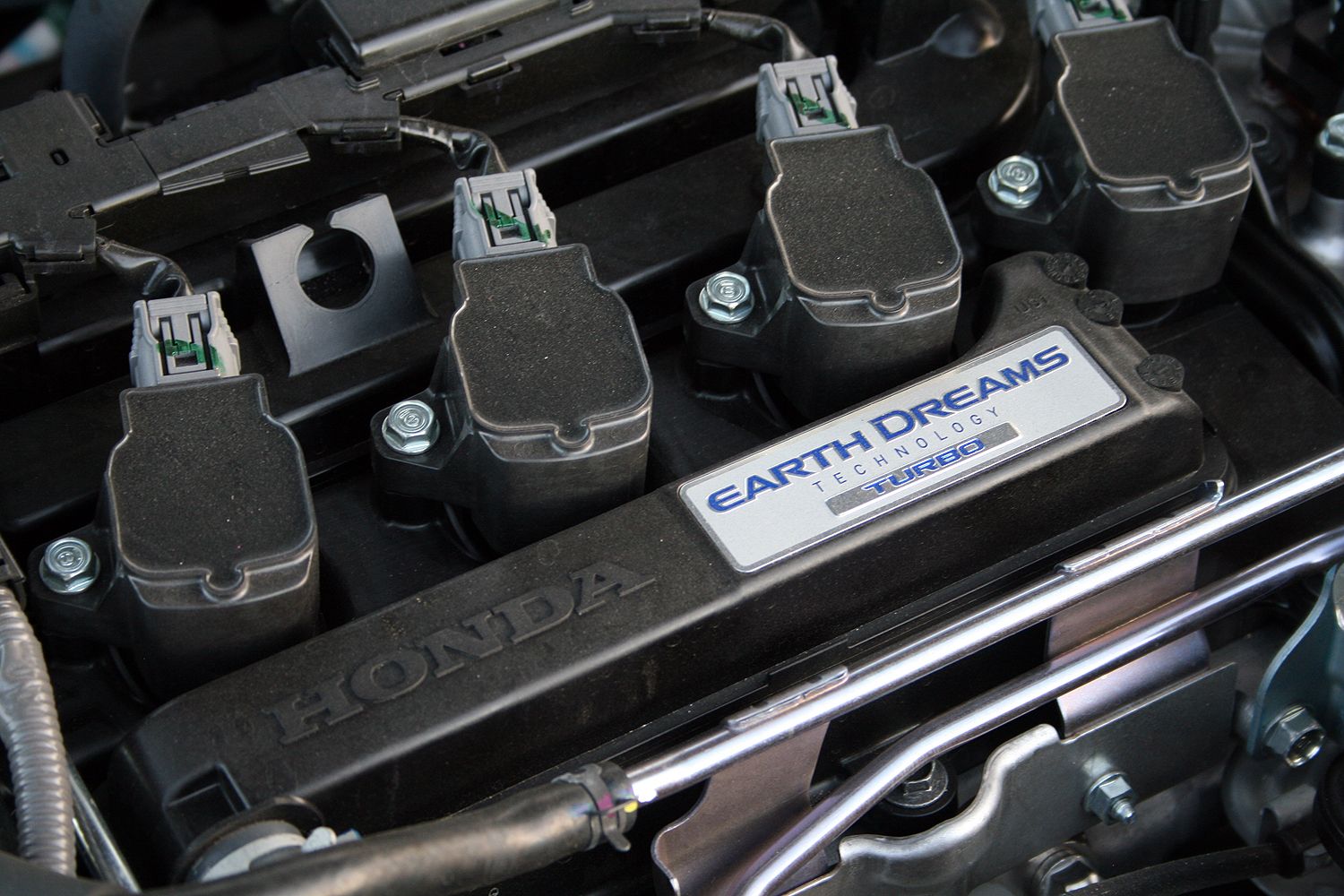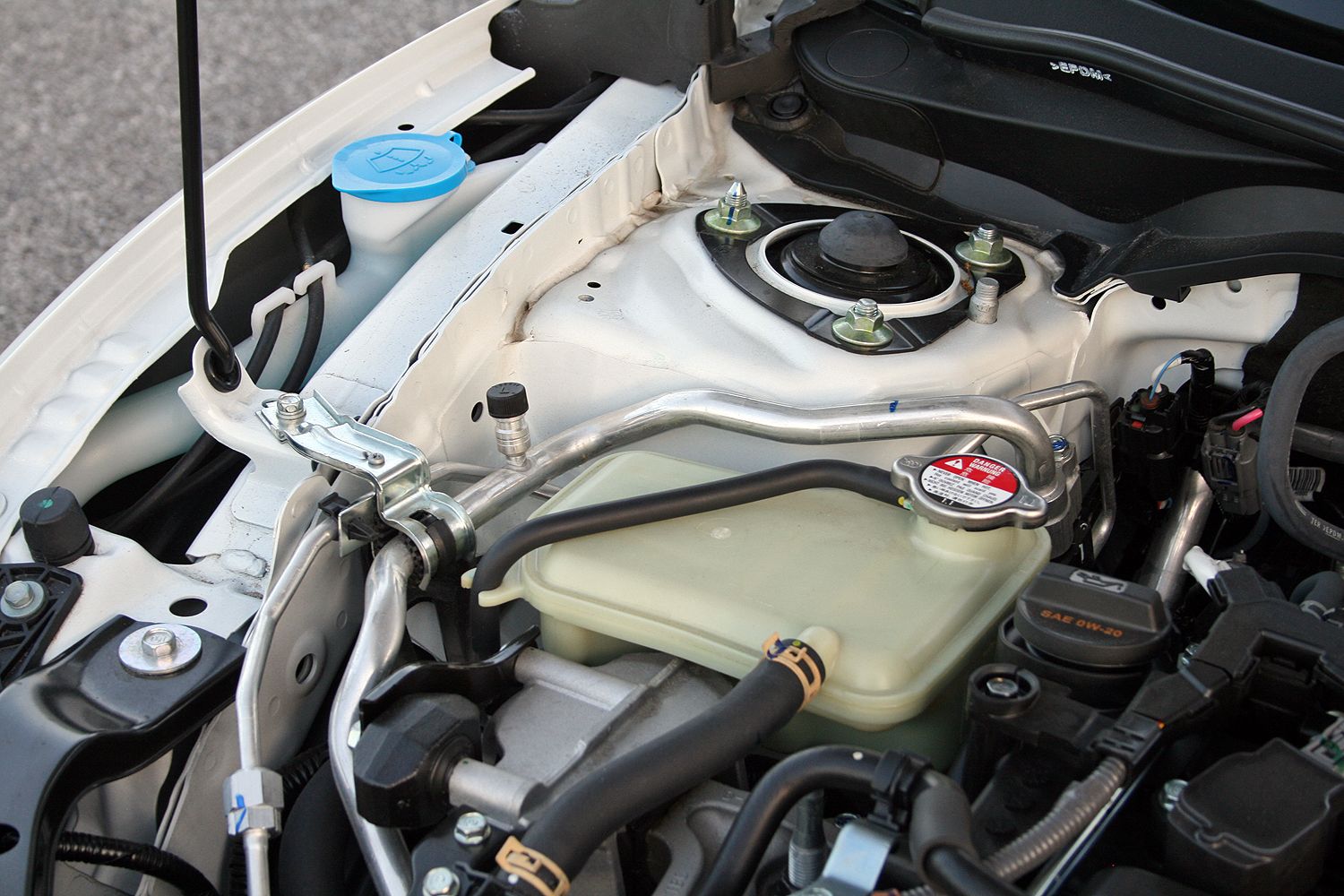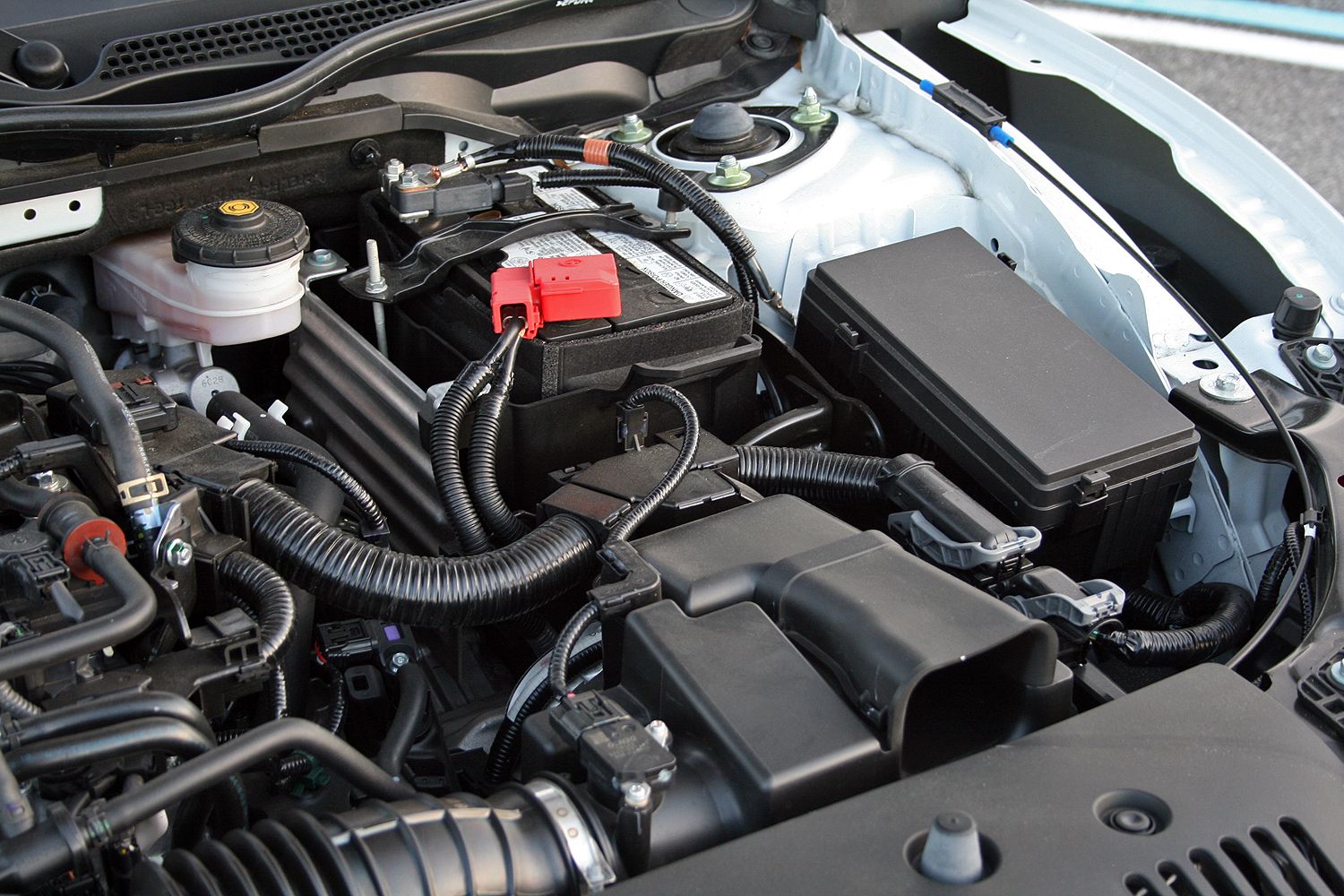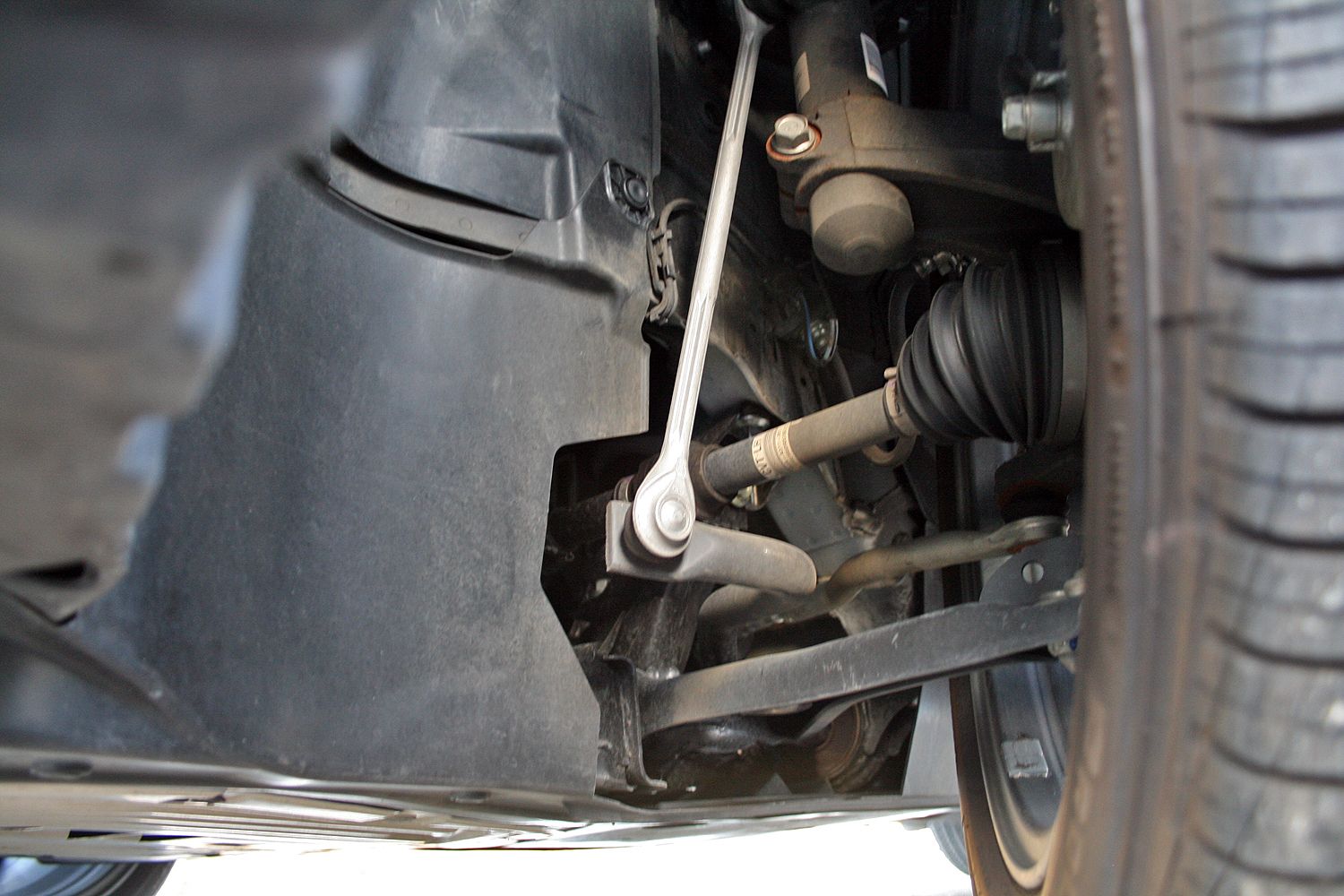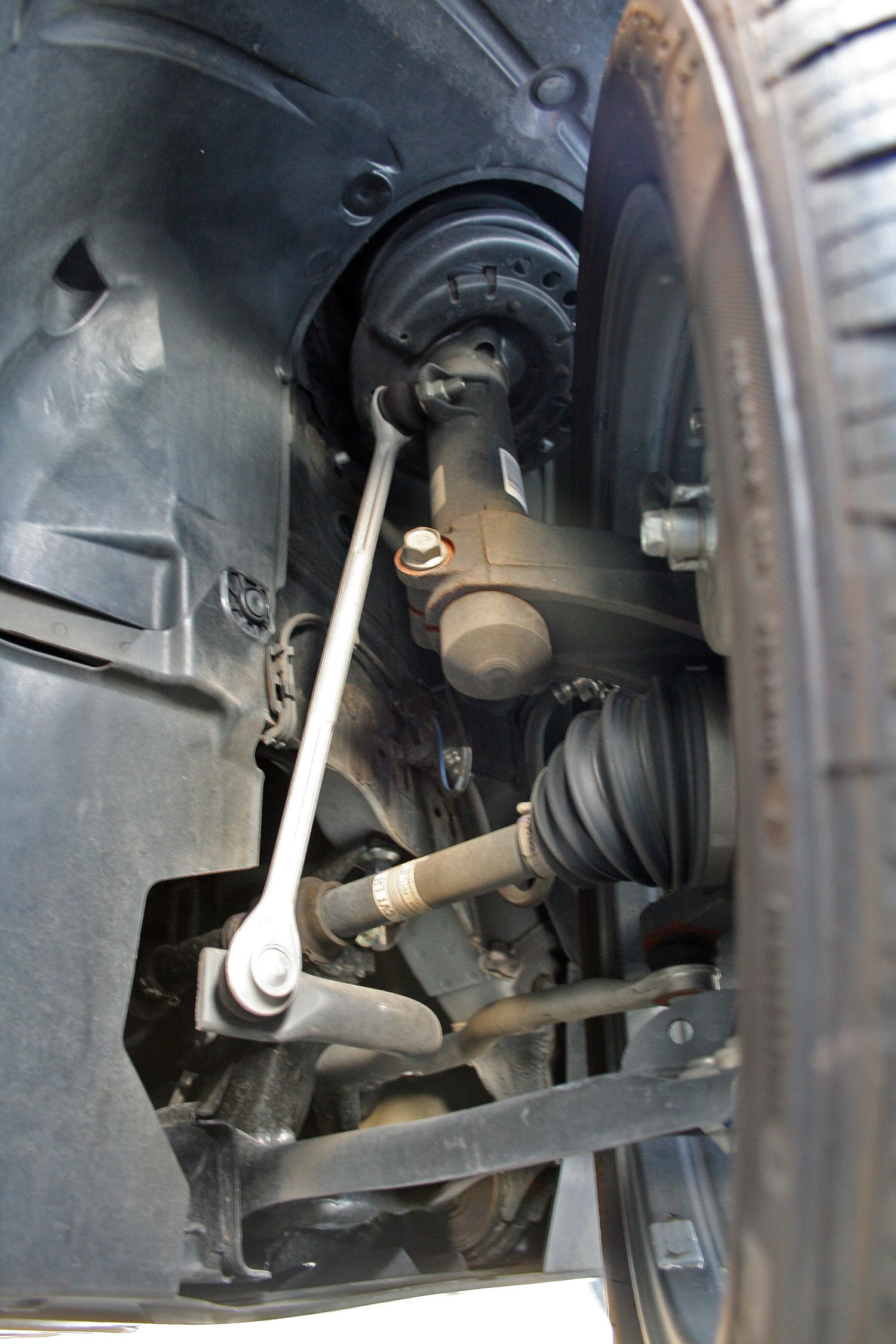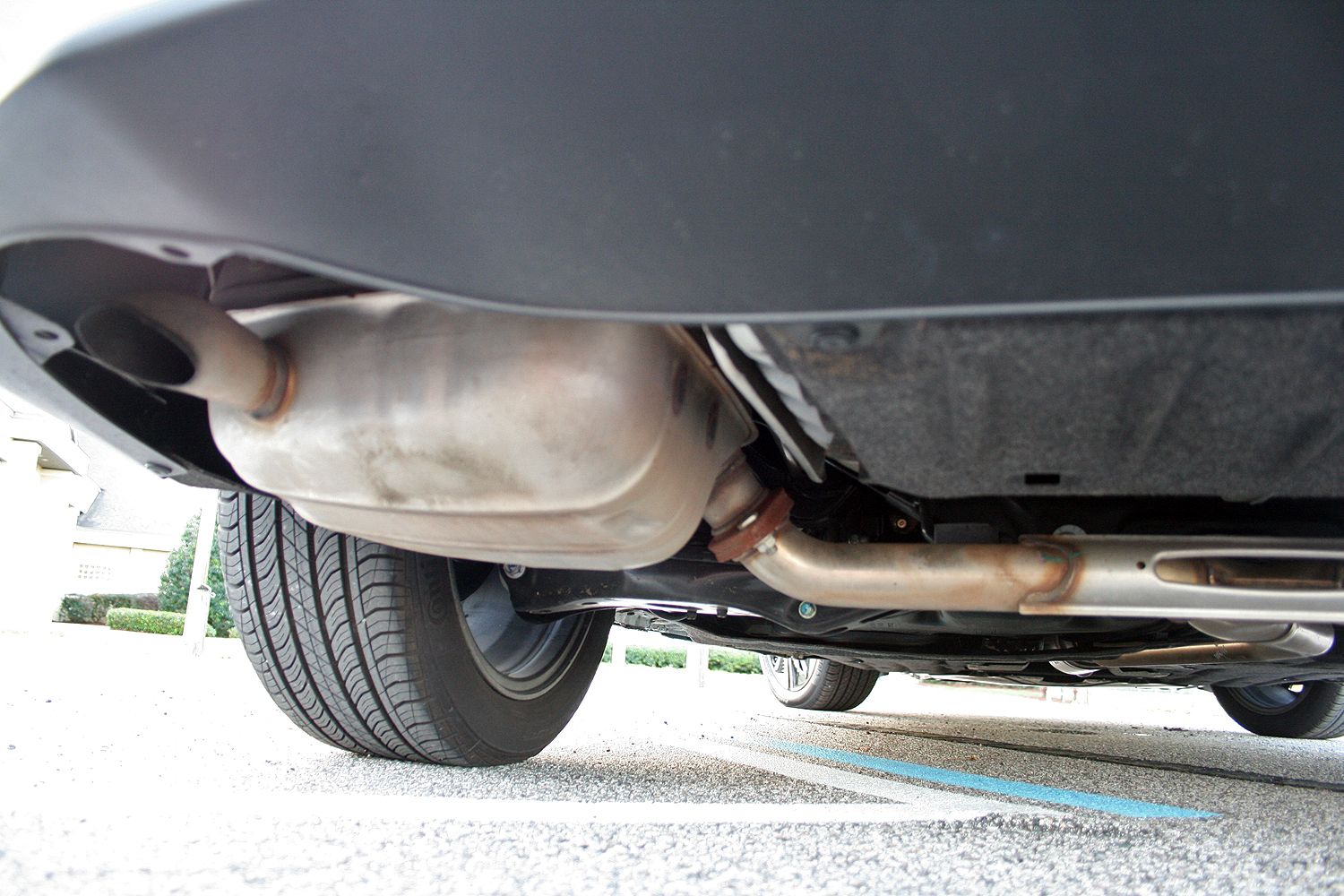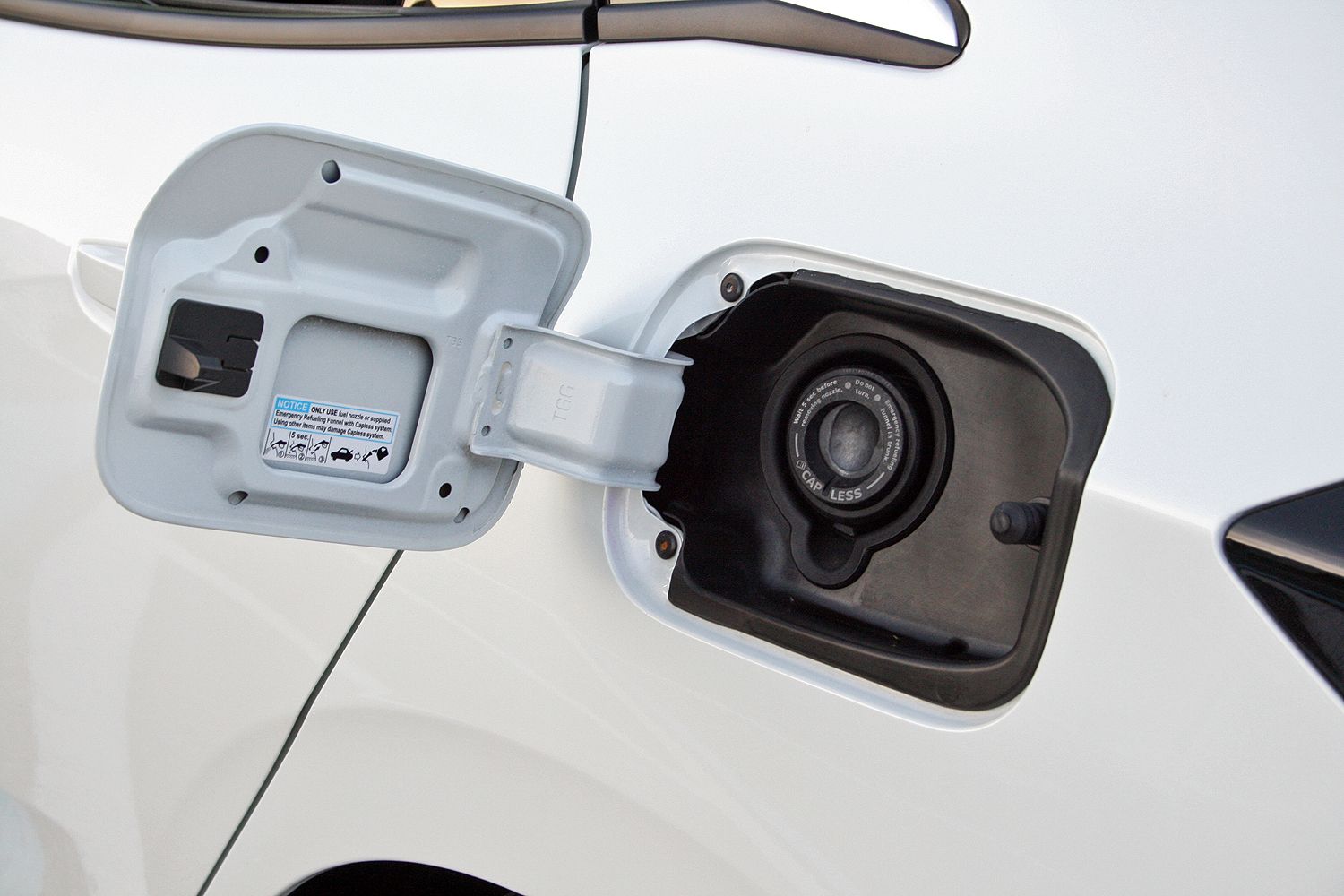The Honda Civic has long been a go-to car for practicality and honest transportation. Sure, there have been several hyped models with plenty of horsepower and fun, but the vast majority of Civics are built to handle the daily grind. Say what you will, but there’s merit in that endeavor. Well, Honda knew its customers needed something outstandingly practical, but mixed with some flare and excitement – sort of a witch’s brew of pragmatic and provocative. Enter the 2017 Honda Civic Hatchback.
The Hatchback joins the Civic lineup for 2017, two years after the tenth generation debuted for 2015. It shares the spotlight with the popular Civic Sedan and fun-loving Civic Coupe. The trio now gives customers a choice in body style, while still delivering that Civic personality. All three ride on the same platform and share powertrain options.
Since the Civic Hatchback is new, Honda sent an example to test for a week for evaluations. Our tester was the EX-L Navi trim and came equipped with Honda Sensing. Otherwise, the car had no options, giving a full taste of the Civic Hatch’s second-most expensive trim. Even still, the as-tested price only rang up $27,175. That’s not bad for a vehicle with crossover-like interior room, leather seats, tons of in-dash tech, all the latest active safety features, and a turbocharged engine that averages 42 mpg on the highway. Color us impressed.
So how did the 2017 Civic Hatchback do? Keep reading to find out.
Continue reading for more information.
2017 Honda Civic Hatchback – Driven
- Make: Array
- Model: 2017 Honda Civic Hatchback – Driven
- Engine/Motor: inline-4
- Horsepower: 174
- Torque: 162
- Transmission: CVT
- [do not use] Vehicle Model: Array
Video Review
Exterior
The front is, well, aggressive. You can tell Honda designers gave the car some Type R influences, despite it coming out after the Civic Hatchback. It almost has a boy-racerish look to it, which in person, isn’t bad. The aggressive lower fascia has a sort of angry face, with fog lights at either end. A large air intake down low pulls air for cooling, Those side panels do nothing functional, however. The upper grille is certainly different from anything outside Honda, and flows nicely into the headlights.
Around the side, the 18-inch wheels have an interesting design reminiscent of windmills or flying Ninja stars. The side profile is unmistakably hatchback, with the roofline sloping gradually towards the license plate. The C-pillars are thick but never hindered outward visibility. No doubt the big rear window and blind-spot monitoring system helps with that. Up top, the shark-fin antenna mixes well with the mild spoiler over the rear glass, helping carry that racer theme throughout the exterior.
Things get even more exciting in the back. More faux vents bring an aggressive feel to the bumper, while hard creases and sharp angles are everywhere. There’s even a chin splitter-like black piece running the width of the car. But the boldest aspect the Civic Hatchback’s rear are the taillights and connecting spoiler. The C-shape lights add dimension to the car, while the spoiler helps hide the rear wiper blade and third brake light. The spoiler is visible in the rearview mirror, but doesn’t impede vision. The backup camera eliminates any blind spots when reversing.
All told, the Civic Hatch wears a bold design with plenty to love – that is, if you like aggressive cars dripping with character.
Exterior Dimensions
|
Wheelbase |
106.3 Inches |
|
Length |
177.9 Inches |
|
Height |
56.5 Inches |
|
Width |
70.8 Inches |
|
Track (front/rear) |
60.9 Inches/61.5 Inches |
|
Overhang (front/rear) |
35.2 Inches/40.7 Inches |
The Competition’s Exterior
Perhaps the most threatening newcomer is Chevy’s 2017 Cruze Hatchback. Based on the new-for-2016 Cruze sedan, the hatchback gets all the same goodies as the four-door, but adds a bunch of interior cargo space, along with a fairly youthful and energetic exterior design. True, the Cruze Hatch doesn’t’ change from the B-pillars forward, but the more sporty nose of the second-generation Cruze is helped by the flared rear end.
The athletic design is further helped by the optional RS package. The Cruze Hatch RS features cosmetic upgrades like fog lights, ground effects, a rear spoiler, and larger wheels measuring 18 inches. When optioned, the Cruze Hatch RS gives the Civic Hatch a run for its money in aggressive design.
Exterior Dimensions
|
Wheelbase |
106.3 Inches |
|
Length |
175.3 Inches |
|
Height |
57.7 Inches |
|
Width |
70.5 Inches |
|
Track (front/rear) |
60.7 Inches/61.5 Inches |
Interior
The aggressive design continues into the interior. Sharp lines and crisp angles permeate each panel. The only curves are found around the gear shifter, the radio knobs, the tachometer, and of course, the steering wheel. That’s definitely not a bad thing, as the angles work well for the Civic.
Behind the wheel, the driver gets three main gauges – coolant temperature, fuel level, and the large center TFT display surrounded by the full-sweep tachometer. The speedometer is digital and stationary inside the display, regardless of what information is shown on the screen below. Turbo boost, radio info, tire pressure, fuel economy, and other vehicle information are easily accessible on the display.
The infotainment system typical Honda, offering intuitive controls on the seven-inch touchscreen. The layout can be a bit overwhelming at first, but is easily learned. Navigation, SiriusXM satellite radio with DVR-like recording, and a handful of third-party applications make the system even handier. These include Apple CarPlay and Android Auto. The biggest complaint is the lack of a volume knob. Rather, Honda uses a touch-sensitive slider that’s tries (unsuccessfully) to reinvent the wheel. Thankfully steering wheel controls give the driver a second option for adjusting volume.
HVAC controls are well designed, for the most part. The dual zone system uses easy-to-use knobs, and the defrost and recirculation options are within easy reach. Too bad Honda buried the fan speed control under the “Climate” button, adding another step to adjusting the fan. Of course, there is an automatic climate function, but I’ve never been a fan of those. My car also came with toasty, three-position heated front seats.
Honda’s design for the center console raised eyebrows when it first arrived. It seemed rather dumbly designed and built as an afterthought. However, the longer we used them, the more ingenious the design became. The cup holders slide fore and aft, can be removed, and offer a third cup holder deep within the center console for super tall drinks. My wife’s huge Starbucks cup loved this spot. The padded armrest slides to accommodate the cup holders, plus opens up for access to storage space.
And speaking of storage space, the Civic Hatchback is packed with places to store stuff. The rear cargo area offers 25.7 cubic feet of area. That’s more than enough for a week’s worth of groceries. Fold the 60/40-split bench, and the hatchback opens up to 46.2 cubic feet of storage. That’s more than some crossovers on the market today! A clever, scroll-type cargo cover neatly retracts out of the way when storing larger items.
Overall, the interior is smartly designed with plenty of places to store everyday items. There is plenty of room for cargo, and most importantly, people. My five-year-old daughter’s booster seat fit just fine in the back seat and she had no issues with using the seatbelt herself.
Interior Dimensions
|
Headroom (front/rear) |
39.3 Inches/37.4 Inches |
|
Legroom (front/rear) |
42.3 Inches/36.0 Inches |
|
Shoulder Room (front/rear) |
57.0 Inches/55.0 Inches |
|
Hiproom (front/rear) |
53.7 Inches/48.8 Inches |
|
Cargo Volume |
25.7 cu ft |
|
Cargo Volume Seats Folded |
46.2 cu ft |
|
Passenger Volume |
97.2 cu ft |
The Competition’s Interior
Like the exterior, the Chevy Cruze Hatch’s interior is a carbon copy of the Cruze sedan ahead of the B-pillar. Again, that’s not a bad thing since the Cruze has a feature-rich cabin with the base-level Chevy MyLink infotainment system with Apple CarPlay and Android Auto, a driver information screen, plenty of storage cubbies, and optional leather seats.
The Civic’s dash does have a larger driver information center and its infotainment system’s UI is a bit flashier. But perhaps the Cruze Hatch’s biggest downfall is its sloping roofline. While the design does add form, the function it replaced is valuable cargo room. Still, the Cruze Hatch offers more cargo room than the Ford Focus and Mazda 3 Hatch. The Chevy lags behind the Volkswagen Golf, however. Behind the second row, the Cruze Hatch boasts 23 cubic feet of space. Fold the 60/40-split bench flat, and the room grows to 47 cubic feet.
Interior Dimensions
|
Headroom (front/rear) |
38.9 Inches/37.3 Inches |
|
Legroom (front/rear) |
42.0 Inches/36.10 Inches |
|
Shoulder Room (front/rear) |
54.90 Inches/53.20 Inches |
|
Hiproom (front/rear) |
53.20 Inches/51.9 Inches |
|
Cargo Volume |
22.7 cu ft |
|
Cargo Volume Seats Folded |
47.2 cu ft |
Drivetrain
Under the hood is Honda’s new 1.5-liter turbocharged four-cylinder. Honda offers two tunes for this engine in the Civic; the range-topping Sport and Sport Touring modes make 180 horsepower and 177 pound-feet of torque, while the LX, EX, and EX-L trims make 174 horsepower and 162 pound-feet of torque. My tester being in the less sporty category meant it came with the standard tune, along with the Continuously Variable Transmission. Of course, front-wheel drive is the only way Honda makes the Civic.
The engine might seem woefully underpowered on paper, but on the road, the little turbo-four does a great job at motivating the 3,000-pound hatchback. CVTs aren’t a favorite transmission for enthusiasts, but Honda has worked a miracle with this gearbox. Its seamless flow of power isn’t hindered by rubberbanding or other ill attributes, either. What the CVT does do, however, is help the Civic earn an impressive 32 mpg city, 42 mpg highway, and 36 mpg combined. During my week of testing, I averaged 34 mpg. And interestingly enough, the Civic Hatch doesn’t punish you for hypermiling. The drive is still somehow entertaining.
Drivetrain Specifications
|
LX |
Sport |
EX |
EX-L Navi |
Sport Touring |
|
|
Engine Type |
In-Line 4-Cylinder |
In-Line 4-Cylinder |
In-Line 4-Cylinder with Single-Scroll MHI TD03 Turbo and Internal Wastegate |
In-Line 4-Cylinder with Single-Scroll MHI TD03 Turbo and Internal Wastegate |
In-Line 4-Cylinder with Single-Scroll MHI TD03 Turbo and Internal Wastegate |
|
Boost Pressure |
16.5 psi |
16.5 psi |
16.5 psi |
||
|
Engine Block/Cylinder Head |
Aluminum-Alloy |
Aluminum-Alloy |
Aluminum-Alloy |
Aluminum-Alloy |
Aluminum-Alloy |
|
Displacement |
1496 cc |
1496 cc |
1496 cc |
1496 cc |
1496 cc |
|
Horsepower (SAE net) |
174 HP @ 5,500 RPM |
180 HP @ 5,500 RPM |
174 HP @ 6,000 RPM |
174 HP @ 6,000 RPM |
174 HP @ 6,000 RPM |
|
Torque (SAE net) |
167 LB-FT @ 1,800 RP M |
177 LB-FT @ 1,900 RPM |
162 LB-FT @ 1,700-5,500 RPM |
162 LB-FT @ 1,700-5,500 RPM |
162 LB-FT @ 1,700-5,500 RPM |
|
Redline |
6500 rpm |
6500 rpm |
6500 rpm |
6500 rpm |
6500 rpm |
|
Bore and Stroke |
73.0 mm / 89.4 mm |
73.0 mm / 89.4 mm |
73.0 mm / 89.4 mm |
73.0 mm / 89.4 mm |
73.0 mm / 89.4 mm |
|
Compression Ratio |
10.6 : 1 |
10.6 : 1 |
10.6 : 1 |
10.6 : 1 |
10.6 : 1 |
The Competition’s Drivetrain
The Chevy Cruze Hatchback can be had with one of two engines: the standard 1.4-liter turbocharged four-cylinder or the new 1.6-liter four-cylinder turbodiesel. Both come standard with a six-speed manual transmission. The gasoline engine can be optionally paired with a six-speed automatic, while a nine-speed auto is optional for the turbodiesel.
As for power specs, the 1.4-liter gasser makes 153 horsepower at 5,600 rpm and 177 pound-feet of torque at 2,000 rpm. Fuel economy with the manual transmission is rated at 28 mpg city, 37 mpg highway, and 31 mpg combined. The automatic pushes those numbers north, earning an EPA-estimated 29/38/32 mpg. The EPA has yet to release its estimates for the turbodiesel engine, but Chevy is expected it to average well past 40 mph on the highway.
|
Engine |
1.4-liter |
|
Horsepower |
153 @ 5600 |
|
Torque |
177 @ 2000-4000 |
|
Transmission |
6-Speed Manual |
|
Fuel Economy |
29/38/32 |
Behind the Wheel
The Civic Hatchback offers a surprisingly supple ride with a well-sorted suspension and decent steering despite it being an electronic system. Road noise is fairly well contained, though rougher pavement is certainly audible. Outward visibility is impressive, especially considering the large D-pillars. Big side mirrors, blind spot monitoring, and Honda’s LaneWatch camera system all help. Other electronic aids include lane departure alert, automatic emergency braking, and rear cross-traffic alert.
Achieving a comfortable driving position is easy thanks to the power-adjustable seat and tilt and telescoping steering column. All the controls are placed well within reach and are easy to learn. The copious number of cup holders, cubby spaces, and coin trays makes organizing junk a simpler task. Knowing where stuff is and being about to reach it without looking is a big bonus.
Pricing
The 2017 Honda Civic Hatchback starts at $19,700. That gets you the base LX car with a six-speed manual transmission, the 1.5-liter turbo-four, automatic climate controls, the multi-angle rearview camera, and other basic features like power windows and doors. Sport offers the higher-tuned 1.5-liter and starts at $21,300. The mid-range EX comes with the upgraded seven-inch infotainment screen, a moonroof, LaneWatch, and remote engine start, all for $22,800. Jumping to the EX-L Navi brings leather seats, navigation, heated front seats, and an eight-way power driver seat for $25,300. Topping the model range is the Sport Touring. It combines the Sport’s upgraded engine with the niceties found in the EX-L, along with Honda Sensing, a premium audio system, paddle shifters for the CVT, and a center-outlet dual exhaust. The Sport Touring starts at $28.300.
|
Model |
Price |
|
LX |
$19,700 |
|
Sport |
$21,300 |
|
EX |
$22,800 |
|
EX-L Navi |
$25,300 |
|
Sport Touring |
$28,300 |
The Competition’s Prices
The 2017 Chevy Cruze Hatchback carries a base starting price of $22,115. That’s well above the base price for the Cruze sedan at $17,850, but the extra space and added styling might be worth the money to some. It’s also above the base price of the Civic Hatch at $19,700. The trim levels include the LT Hatch Manual, LT Hatch Automatic, and Premier Hatch Automatic. Opting for the automatic in the LT trim brings the price to $22,795. Upgrading to the range-topping Premier trim pushes the price to $24,820.
Other Competitors
2017 Ford Focus Hatch
The Ford Focus has been a staple in the hatchback segment for a while. Its current design is getting long in the tooth, but it still performs well. Ford offers everything from a fuel-sipping three-cylinder to the 350-horsepower EcoBoost in the Focus RS. Ford even offers a fully electric model, too, for those worried about their carbon footprint. The Focus Hatch has 23.8 cubic feet of space behind the second row and 44.8 cubic feet of space with the 60/40-split bench folded. Interior design and features are welcoming, despite the age. Ford’s most modern SYNC3 system is present, while a smallish TFT display shows vehicle parameters in the gauge cluster. Dual-zone air conditioning, heated front seats, plenty of storage are also found.
Of the four engine options, three are turbocharged. The only naturally aspirated engine is the volume-leader – the 2.0-liter Ti-VCT four-cylinder. It makes 160 horsepower and 146 pound-feet of torque and comes with a six-speed automatic transmission. The EPA estimates this combo will get 26 mpg city and 38 mpg highway.
Prices for the Focus Hatchback start at $19,765 for the SE trim. Stepping up to the SEL Hatch costs $21,275, while the luxury-minded Titanium starts at $24,075. For those wanting a hot-hatch, the Focus ST starts at $24,775, while the bonkers Focus RS starts at $36,120.
Read our full review on the 2017 Ford Focus Hatch here.
Volkswagen Golf
Like the Ford Focus, the Golf comes in a variety of forms – from the all-electric e-Golf to the all-eccentric Golf R. In between is the sporty Golf GTI and the standard Golf. All models come wit tons of interior space thanks to its squared-off roof design and folding rear seats. The interior fit and finish is definitely German, with a familiar feel to Volkswagen’s other models and even some touches from Audi.
Powering the most common Golf is the 1.8-liter TSI turbocharged four-cylinder. It makes a respectable 170 horsepower and 199 pound-feet of torque and comes with either a five-speed manual or a six-speed automatic. In automatic form, the EPA rates the Golf at 25 mpg city, 35 mpg highway, and 29 mpg combined.
Prices for the Golf start at $19,895 for the S trim. The Wolfsburg trim adds some creature comforts like keyless access and go, leatherette seats, and blind spot monitoring for $21,595. Those wanting the Golf GTI will pay $25,595. The high-performance Golf R is the pricing outlier here, costing $39,375. Environmentalists will have to shell out $28,995 for the e-Golf. Of course, these prices are before any options, added extras, and fees.
Find out more about the Volkswagen Golf here.
Conclusion
There’s a reason why the Honda Civic is so popular. It offers a great driving experience, plenty of room, good fuel economy, a reasonable asking price, and tons of handy features. Upgrading to the Civic Hatchback only improves on these traits, though it does become slightly more expensive.
Perhaps the most surprising trait possessed by the Civic Hatch is its willingness to drive efficiently without killing fun. Yeah, somehow the little hatch is fun to hypermile. I’m not normally one who enjoys saving gas over having a good time, but this car changed my outlook for a week. That’s not to say the Civic Hatch isn’t a blast to drive quickly – it does that rather well.
My EX-L Navi model proved to be a solid car, and one that’s worth the $27,175 asking price. What’s more, the Civic’s value shouldn’t sink like a rock. That should make ownership feel more rewarding.

